Forums
- Forums
- Duggy's Reference Hangar
- USAAF / USN Library
- Lockheed P2V Neptune
Lockheed P2V Neptune
Post a reply
- Go to Previous topic
- Go to Next topic
- Go to Welcome
- Go to Introduce Yourself
- Go to General Discussion
- Go to Screenshots, Images and Videos
- Go to Off topic
- Go to Works in Progress
- Go to Skinning Tips / Tutorials
- Go to Skin Requests
- Go to IJAAF Library
- Go to Luftwaffe Library
- Go to RAF Library
- Go to USAAF / USN Library
- Go to Misc Library
- Go to The Ops Room
- Go to Made in Germany
- Go to Campaigns and Missions
- Go to Works in Progress
- Go to Juri's Air-Raid Shelter
- Go to Campaigns and Missions
- Go to Works in Progress
- Go to Skinpacks
- Go to External Projects Discussion
- Go to Books & Resources
-
 Main AdminText by Greg Goebel Thanks
Main AdminText by Greg Goebel Thanks
PART 1
The Lockheed "P2V Neptune" is largely a forgotten aircraft, since it arrived too late for World War II and was eventually overshadowed by its replacement, the Lockheed P-3 Orion. However, through the 1950s and into the 1960s, the Neptune served in large numbers as the aerial backbone of the West's defense of the seas.
ORIGINS: XP2V-1 / P2V-1
The Lockheed company had established itself as a major manufacturer of combat aircraft early in World War II with the "Hudson" ocean patrol aircraft, a militarized version of the Lockheed L-10 Electra twin-piston airliner. Over 1,500 Hudsons were obtained by the British, establishing a tradition for Lockheed in the ocean patrol aircraft business. The Hudson was a blatant improvisation whose main virtue was availability, though it did achieve successes against German U-boats. Lockheed then went on to produce a similar but "bigger and better" ocean patrol aircraft, the "PV-1 Ventura", based on the Lodestar transport, which was basically a stretched Electra with uprated engines. The Ventura led to an improved variant, the "PV-2 Harpoon".
Even as the Ventura-Harpoon series was being produced and enhanced, Lockheed was considering a much more formidable ocean patrol aircraft, with longer range, better sensors, and greater weapons load. An early study with the designation "V-135" was begun in September 1941, which led to a second study designated "V-146". The Navy was interested in the Lockheed proposal, giving the company a "letter of intent" in February 1943, and on 4 February 1944 awarded the company a contract for the development of two "XP2V-1" prototypes.
* The first of two prototype XP2V-1 "Neptunes", as the type was named, took to the air from Burbank, California, on 17 May 1945, and was followed by the second prototype soon after. Tests indicated that the new aircraft was highly maneuverable and had excellent performance. The XP2V-1 was a bullnosed aircraft, powered by twin Wright Cyclone R-3359-8 radial piston engines rated at 1,715 kW (2,300 HP) each for takeoff, driving four-bladed propellers. It was a mid-wing monoplane with a single tall tailfin; turning the rudder took a good deal of muscle. It had tricycle landing gear, with a skid bumper under the tail to protect the aircraft on steep takeoffs.
The tailplane had an interesting feature, in that its cross-sectional curvature could be modified in flight to maintain aircraft trim as fuel was consumed. This scheme was referred to as the "varicam" tail. The aircraft was designed to be built as a set of subassemblies that were easy to put together and access, simplifying manufacturing and maintenance. An engine change, for example, only took 30 minutes.
Defensive armament consisted of six 12.7-millimeter (0.50-caliber) Browning machine guns mounted in pairs in the nose, a dorsal turret, and tail turret. The aircraft could carry up to 3.6 tonnes (8,000 pounds) of offensive weapons in a huge bomb bay and on underwing racks. Typical warloads included:
Four 900-kilogram (2,000-pound) bombs.
Eight 450-kilogram (1,000-pound) bombs.
Sixteen 225-kilogram (500-pound) bombs.
Twelve 150-kilogram (325-pound) depth charges.
Two 980-kilogram (2,165-pound) torpedoes.
The aircraft carried search radar, with a small radome between the nosewheel and the bomb bay. There were eight crewmen, though the number of crew would vary in later versions.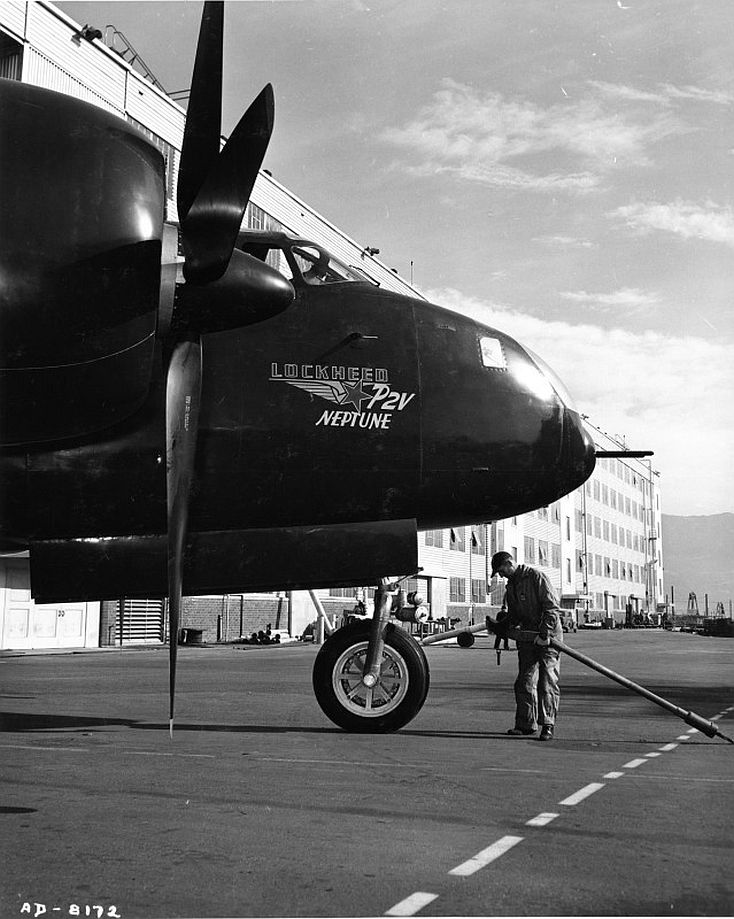
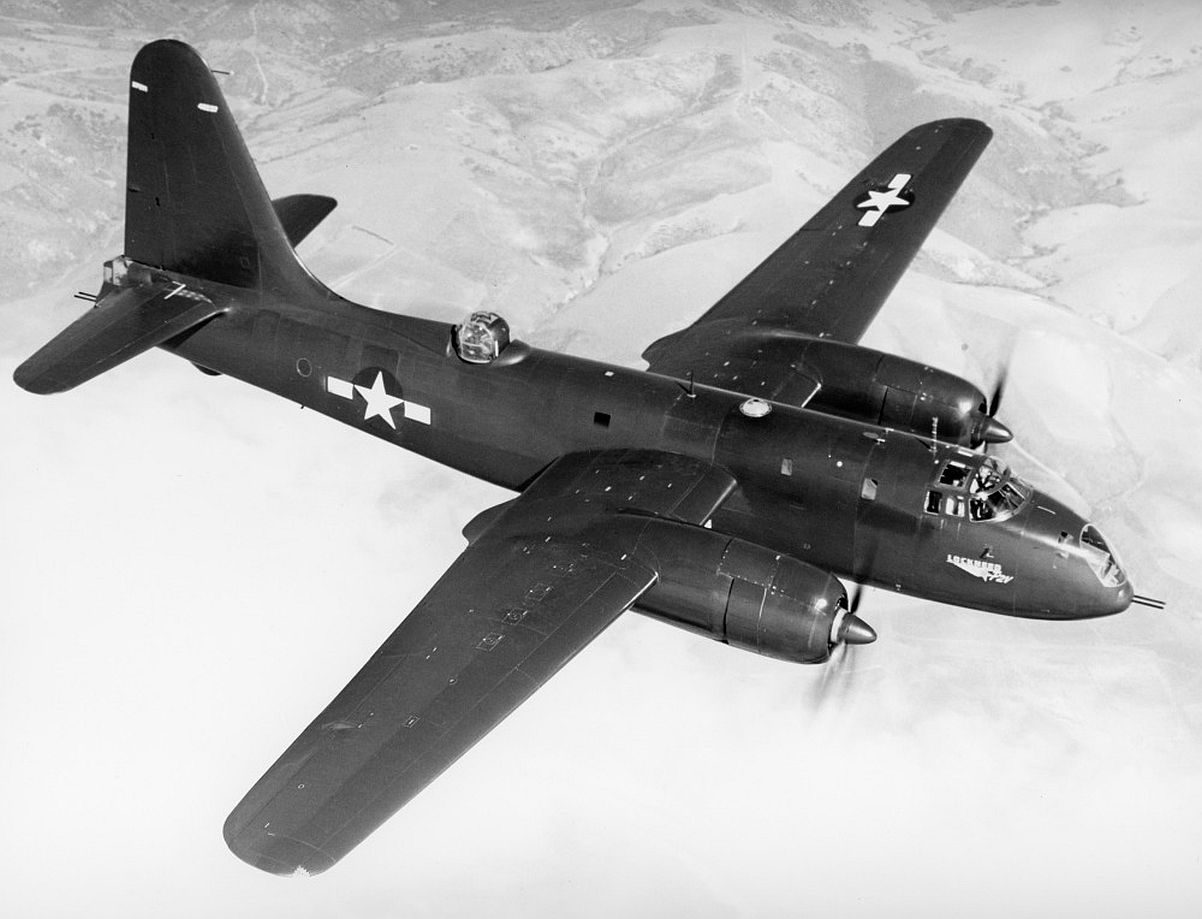
The US Navy took delivery of the first of 15 production "P2V-1" Neptunes in early 1946, with the last of the variant delivered by May 1947. The production P2V-1s were generally similar to the prototypes, though there were some minor aerodynamic fixes and the size of the radome was enlarged.
The Neptune handled well on takeoff and landing, could climb rapidly for an aircraft of its configuration, and had good single-engine performance. It had a top speed of 485 KPH (300 MPH) and a range of 6,650 kilometers (4,130 miles). The interior was comfortable by the standards of military aircraft of the time, reducing crew fatigue on long ocean patrols. The flight surfaces of the aircraft were fitted with alcohol de-icers, and the wings could provide flotation for a time if the aircraft were ditched at sea.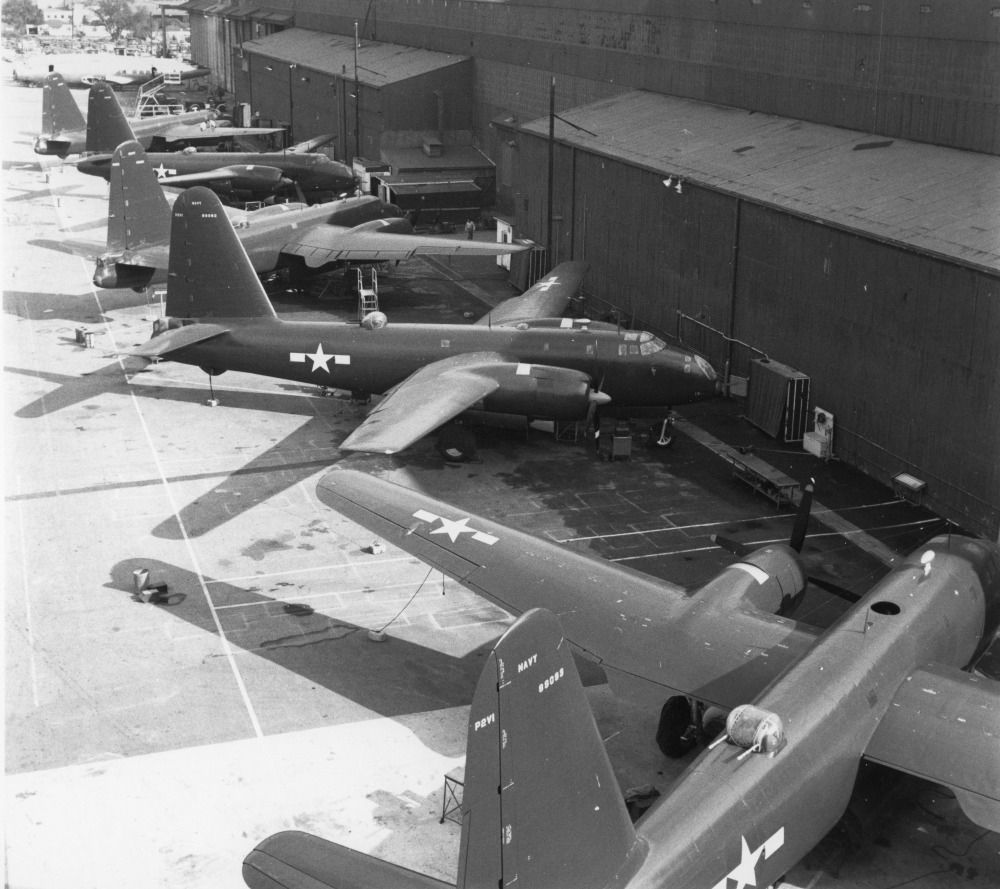
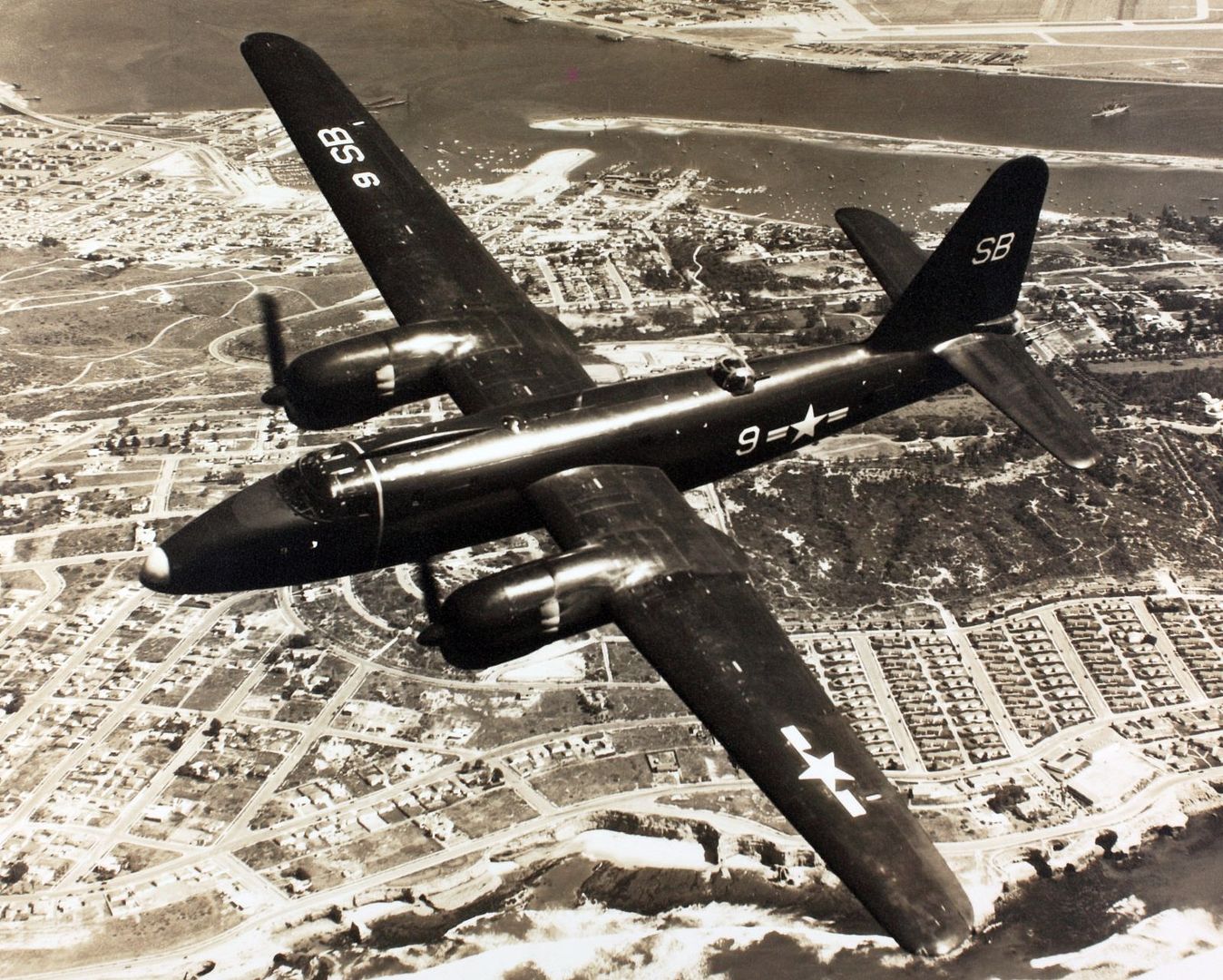
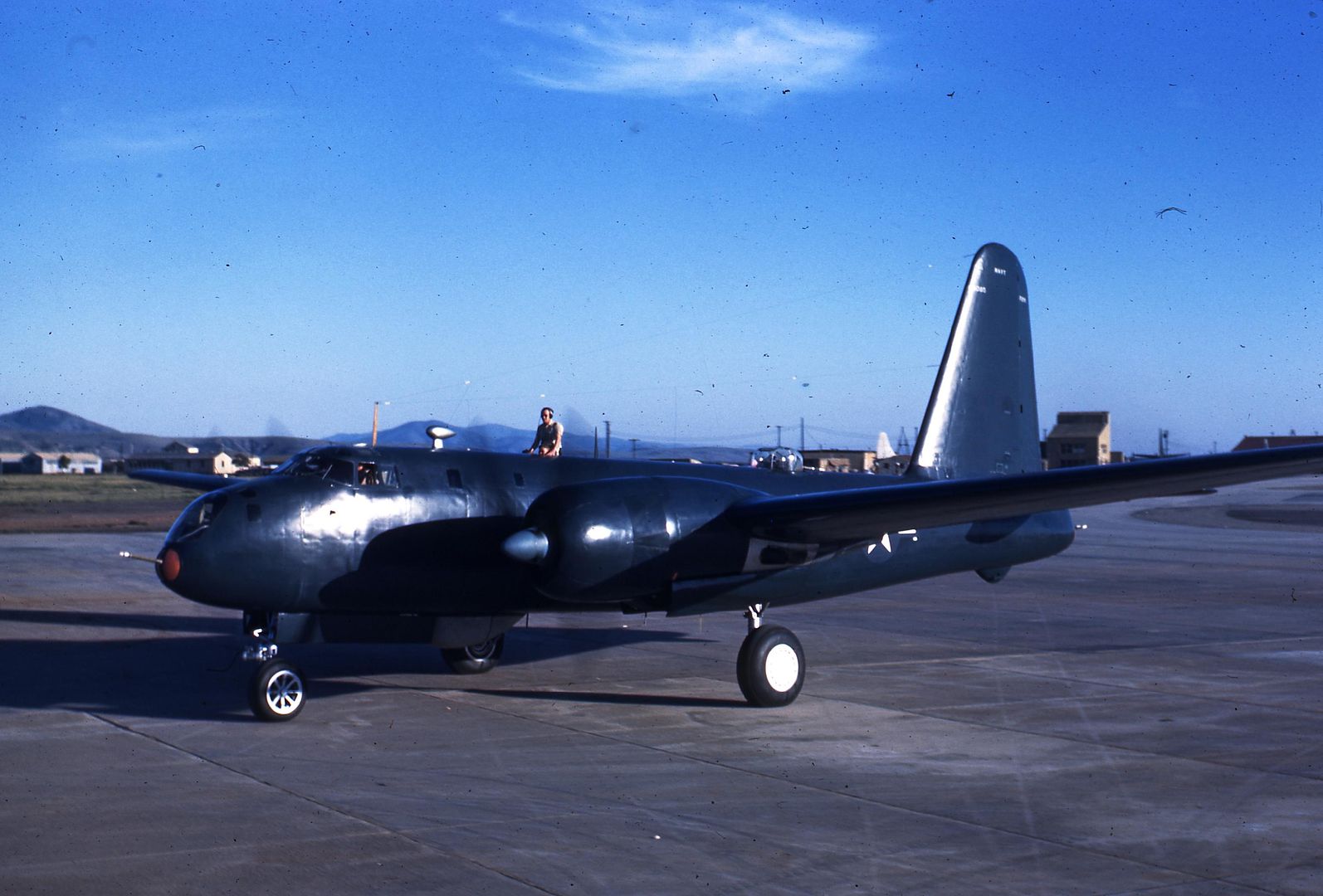
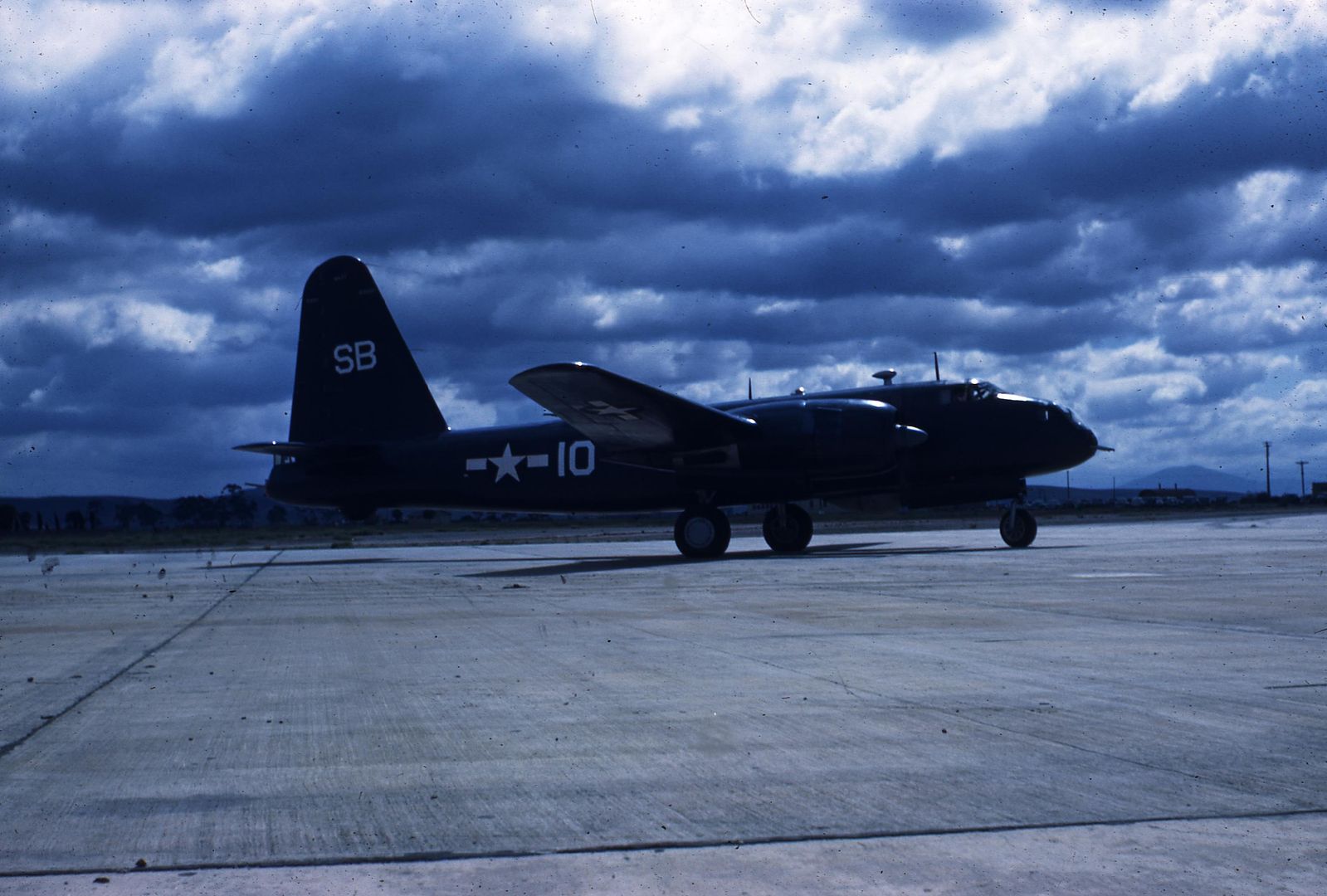
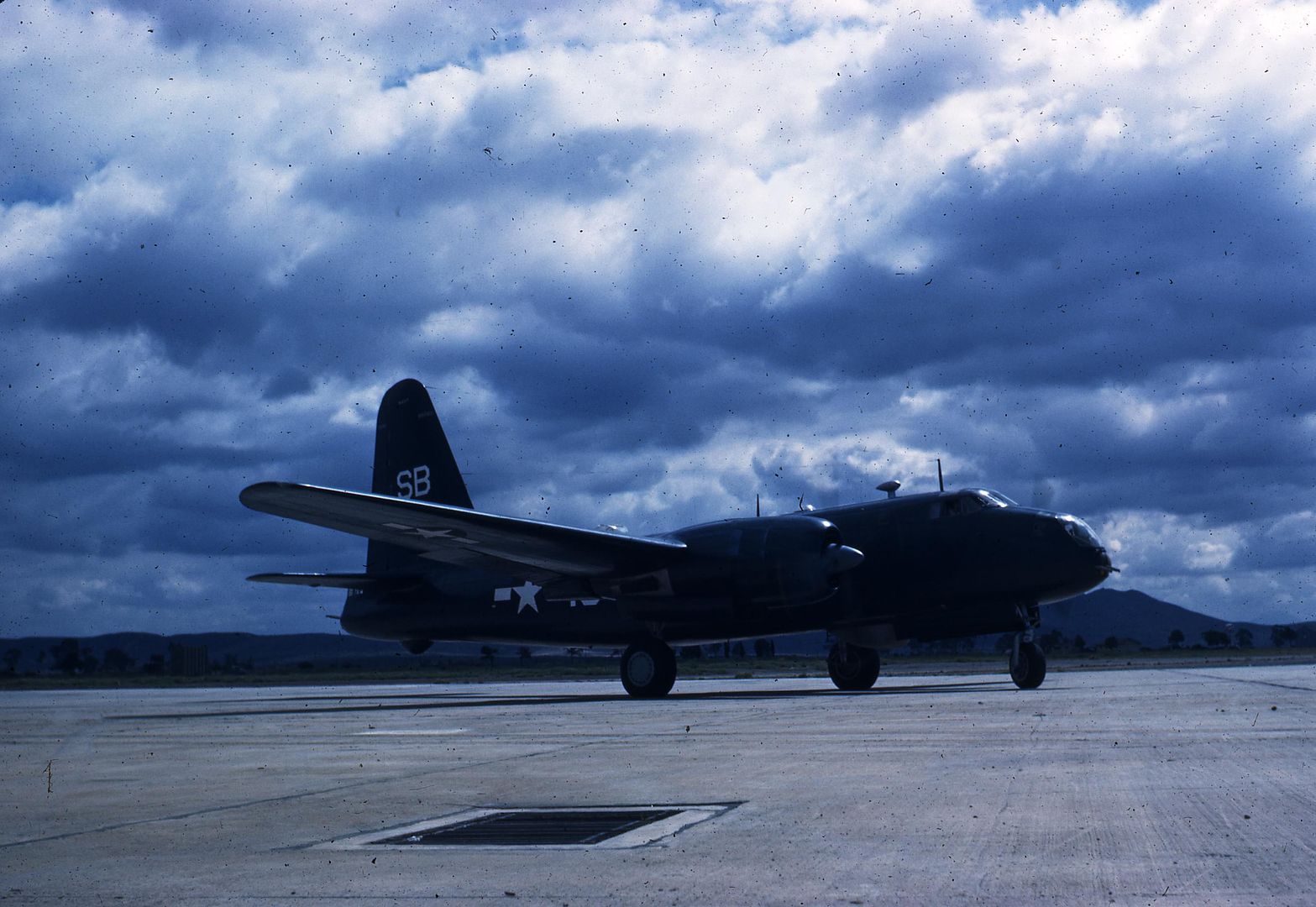
The third P2V-1, named the TRUCULENT TURTLE, was stripped down, fitted with auxiliary fuel tanks plus an extended nose, and set an unrefueled long distance flight record in September 1947. The TURTLE flew from Perth, Australia, to Columbus, Ohio, with a crew of four Navy officers and a young kangaroo, covering 18,089.3 kilometers (11,235.6 miles) in 55 hours 17 minutes. This record stood until 1962, when an Air Force B-52H flew non-stop from Okinawa to Madrid, Spain, a distance of 20,177 kilometers (12,532.3 miles). The TURTLE is now on display at the US Naval Air Museum in Pensacola, Florida.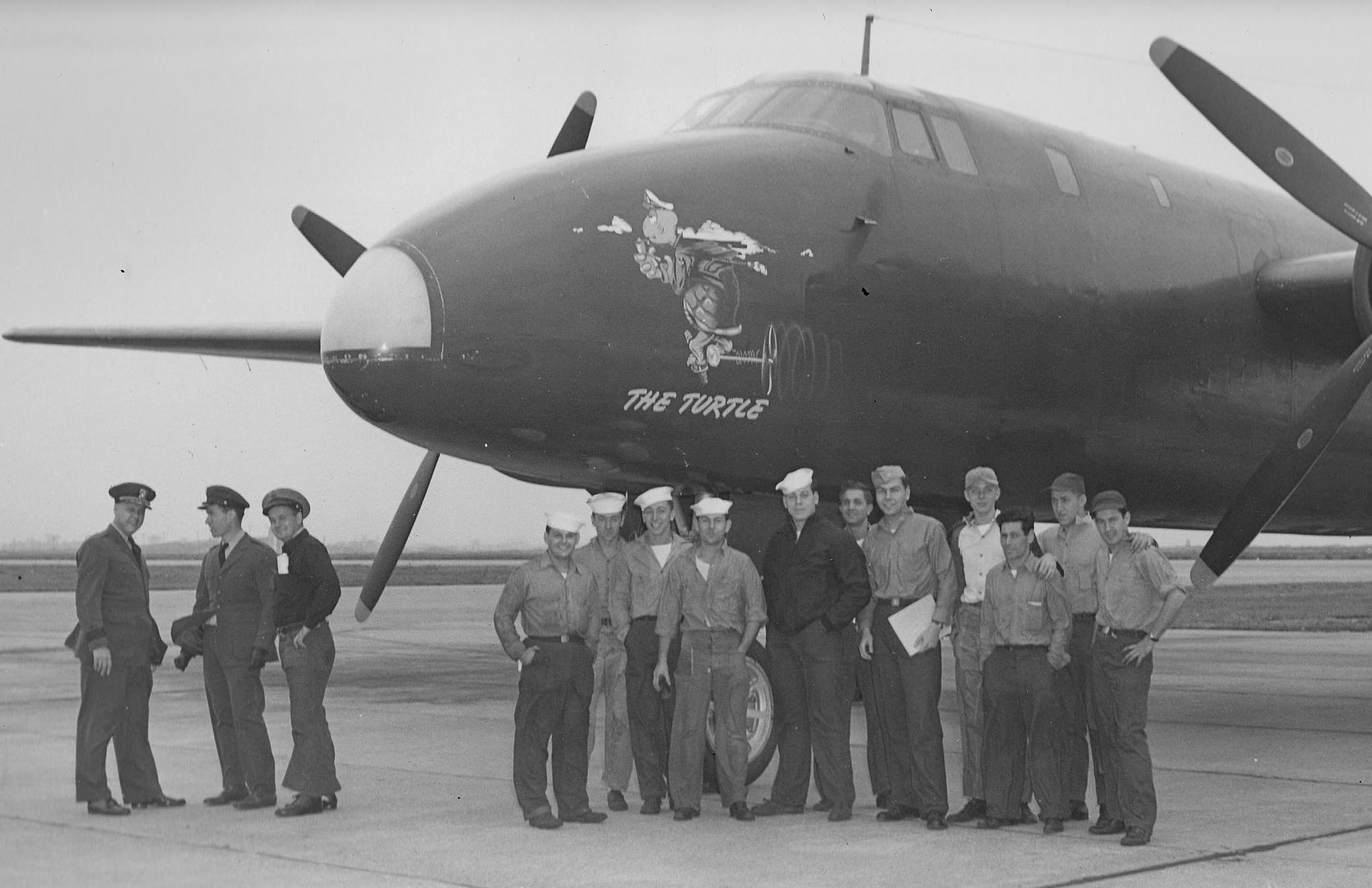

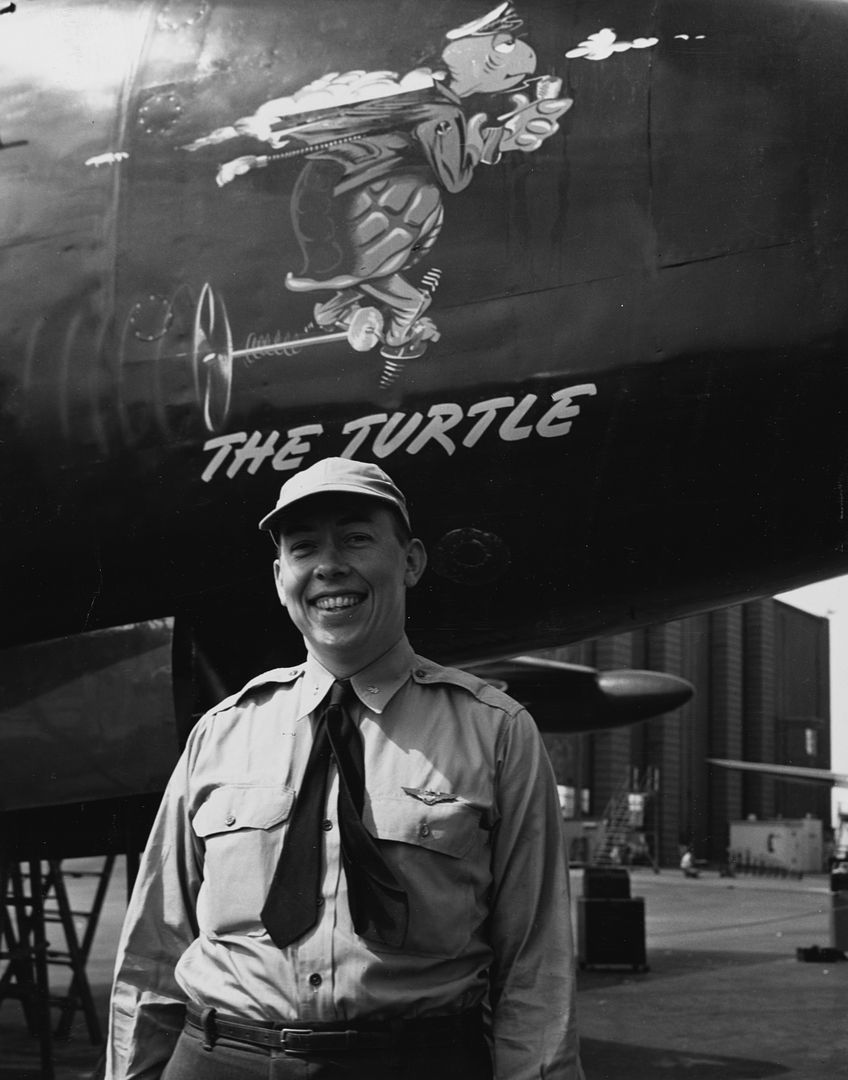
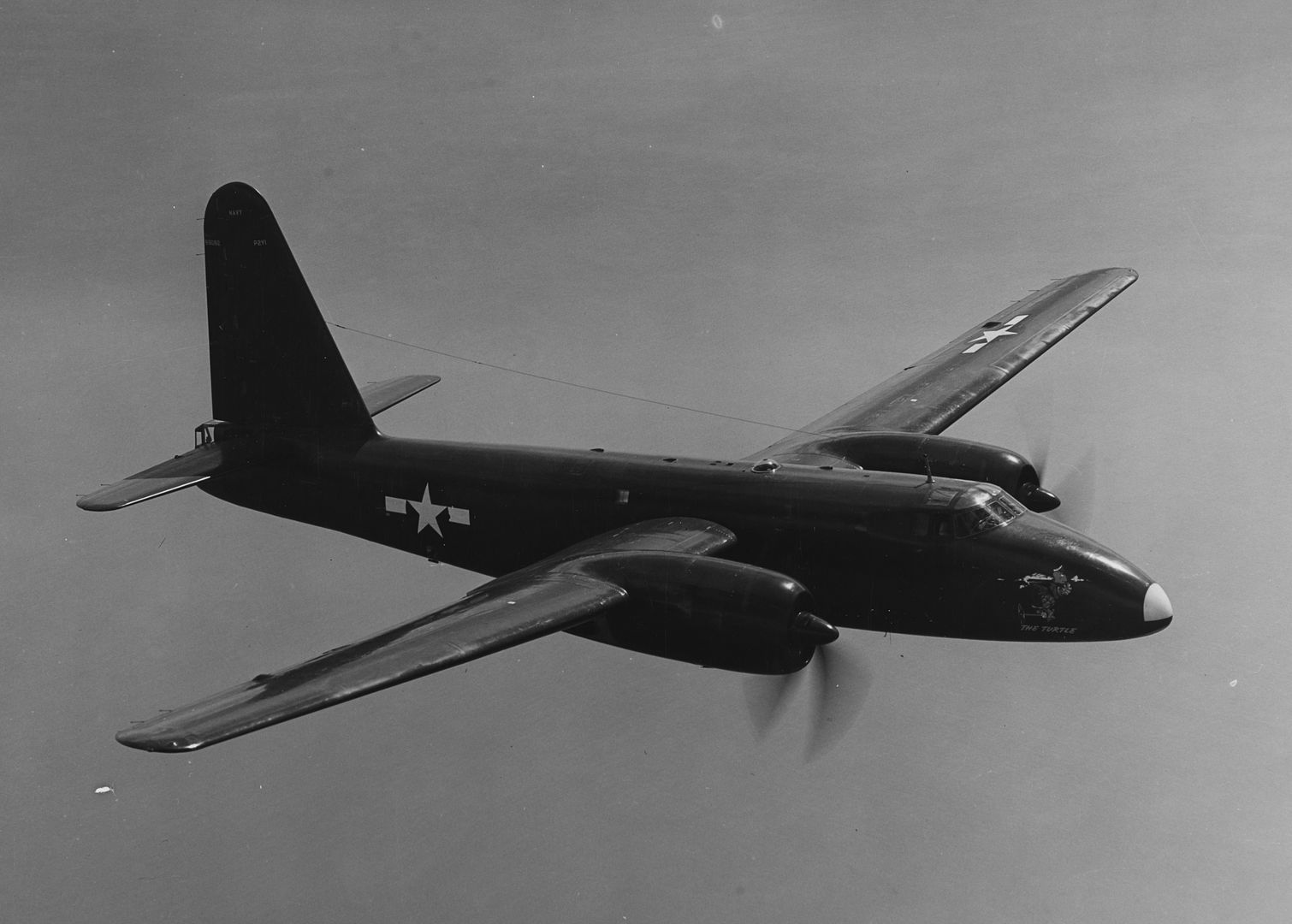
P2V-2
The prototype for the second series of Neptunes, the "P2V-2", was modified from the fifth production P2V-1 to produce a more effective aircraft with one less crew member. The P2V-2 prototype first took to the air on 7 January 1947. The P2V-2 featured an extended nose, much like that of the TRUCULENT TURTLE, that stretched the aircraft 76 centimeters (2.5 feet) and did much to improve its looks. The nose turret was replaced with six fixed forward-firing 20-millimeter cannon; the nose also contained radar. The dorsal turret was lowered and streamlined. The twin 12.7-millimeter tail guns were retained in early production, but were replaced by twin 20-millimeter cannon in the ninth and later aircraft. The wings were fitted with a total of sixteen stubs for 12.7-centimeter (5-inch) High Velocity Air Rockets (HVARs).
The P2V-2 had uprated Wright Cyclone R-3350-24W engines, providing 1,865 kW (2,500 HP) each, with takeoff power of 2,090 kW (2,800 HP) using water injection. The P2V-2 was fitted with three-bladed Hamilton Standard propellers, replacing the four-bladed props used on the P2V-1. Racks for four jet-assisted take off (JATO) rocket bottles were provided on each side of the rear fuselage. The JATO bottles could provide 35.3 kN (3,600 kgp / 8,000 lbf) of thrust for ten seconds. Some P2V-2s had a second dome aft of the bomb bay; it might have been for some type of signals intelligence (SIGINT) gear, such as a radio emitter locator.
The changes resulted in an increased maximum takeoff weight of 28.6 tonnes (63,078 pounds), and a slightly reduced range of 6,410 kilometers (3,980 miles). However, the more powerful engines gave the P2V-2 a higher top speed of 515 KPH (320 MPH).
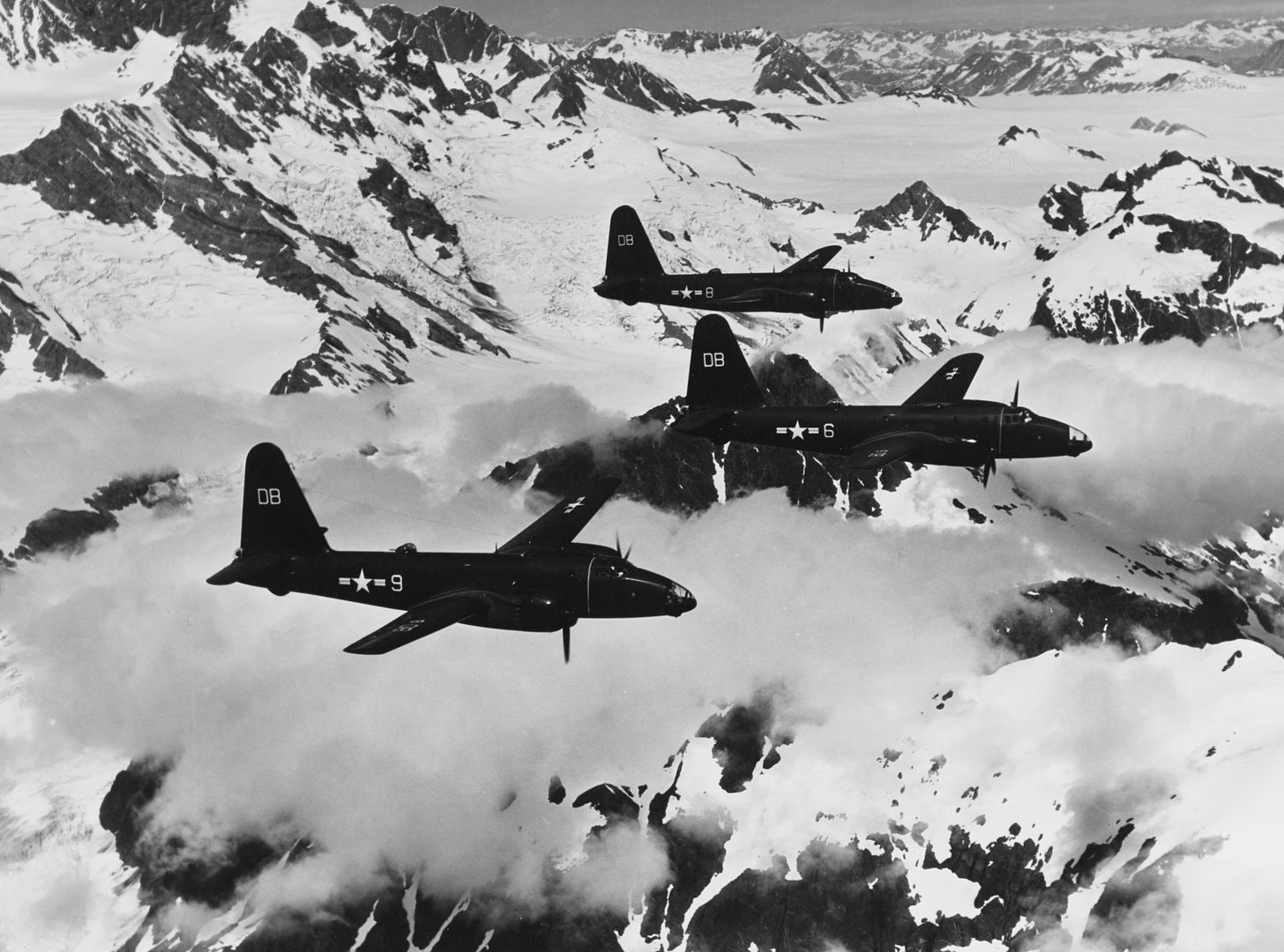
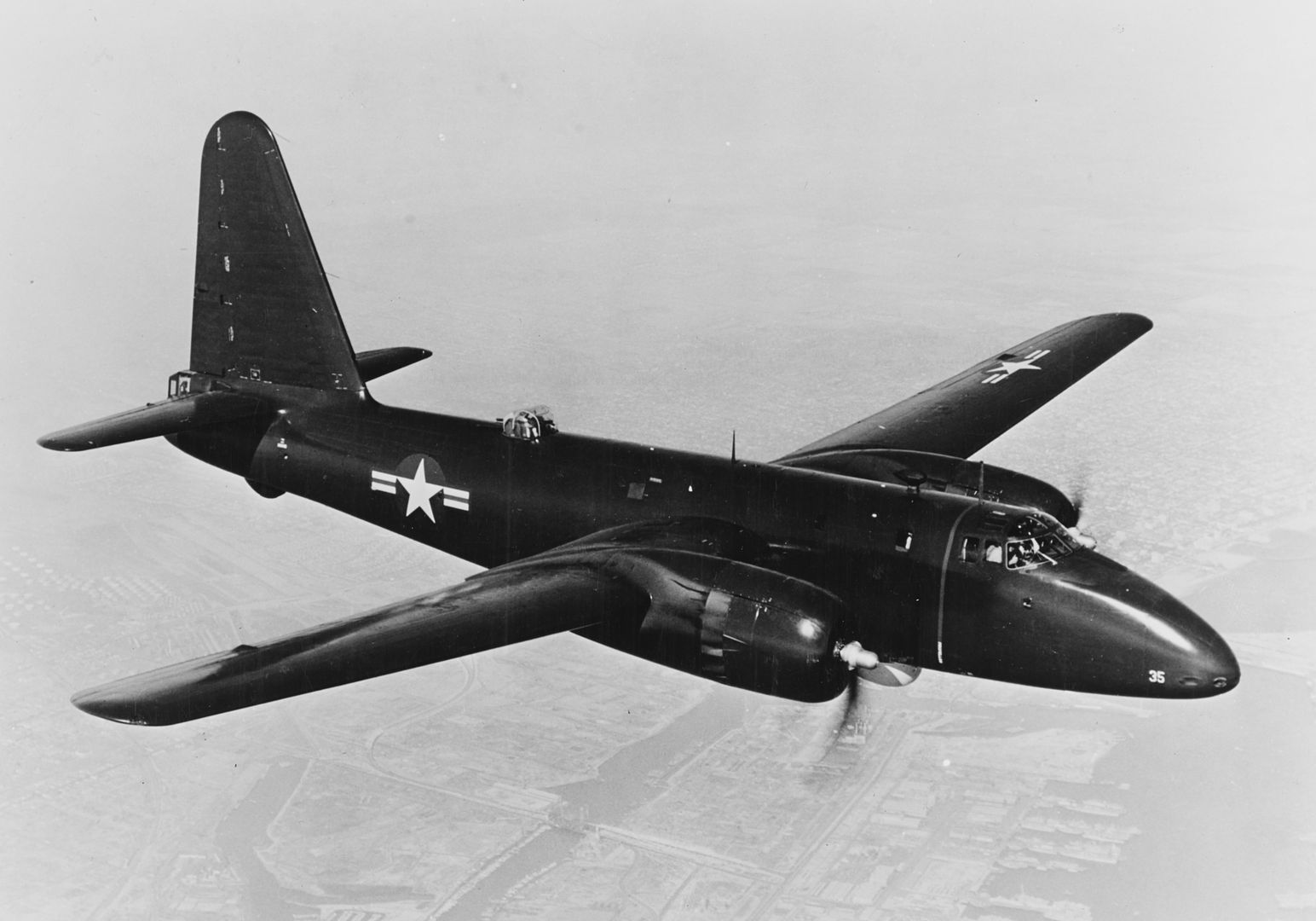
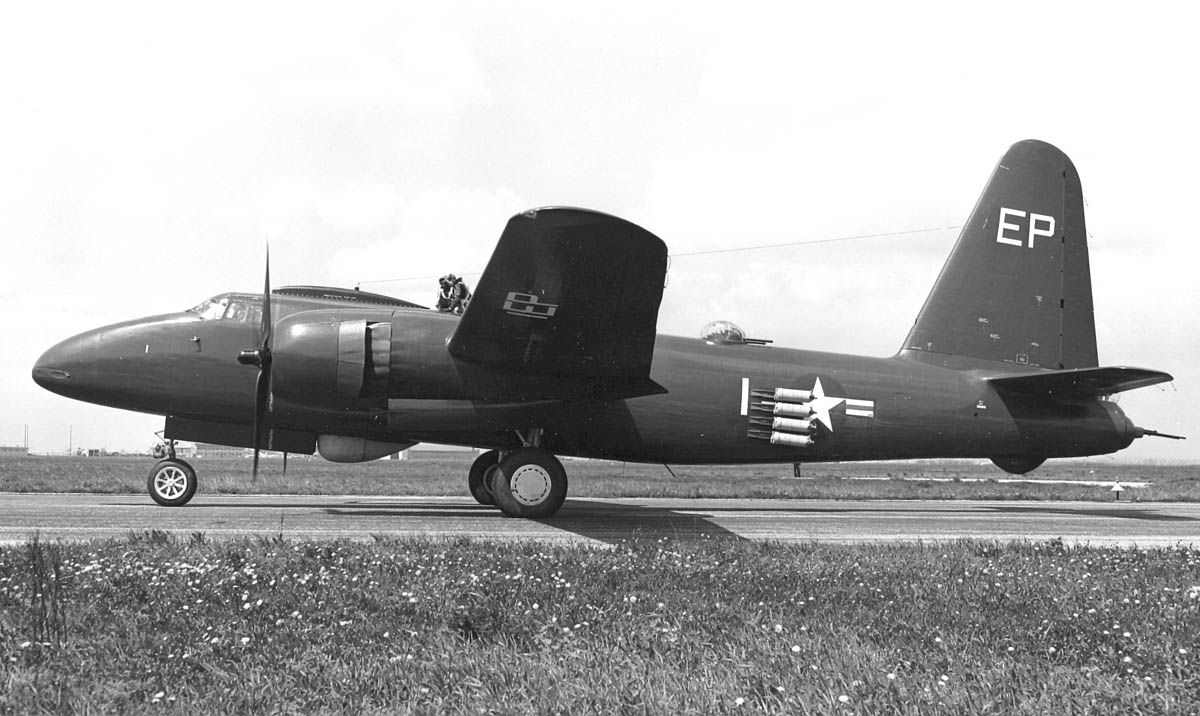
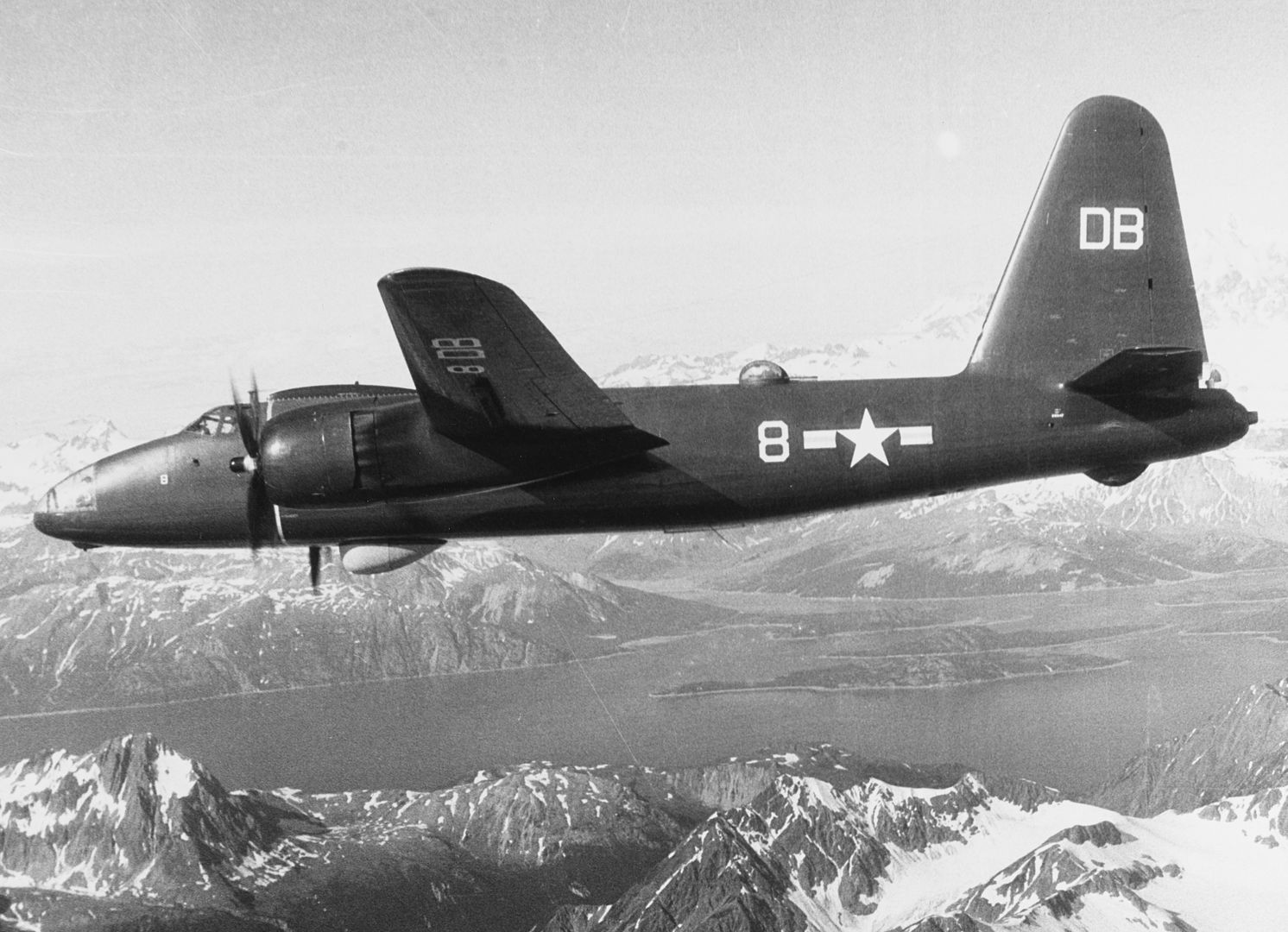
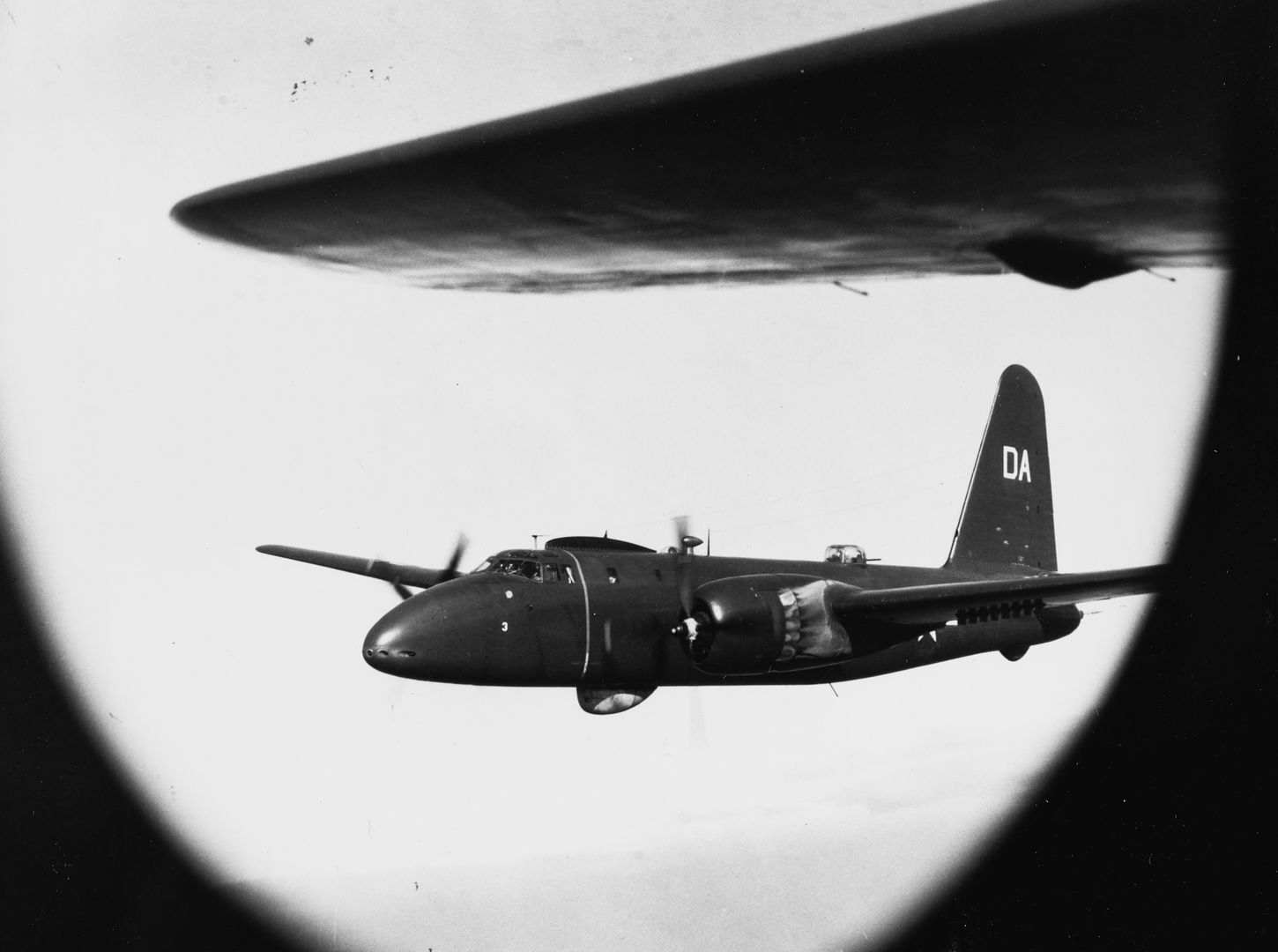
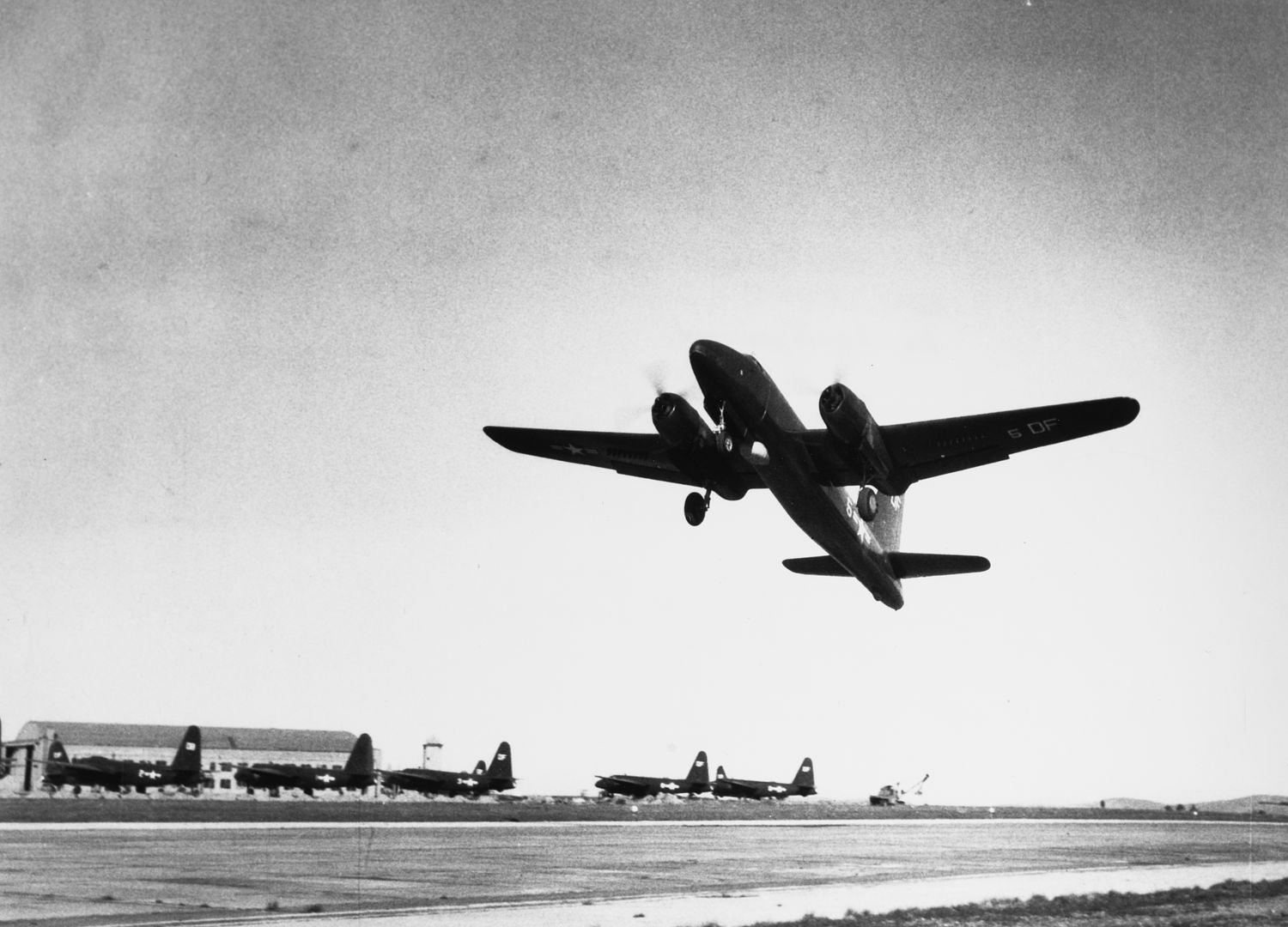
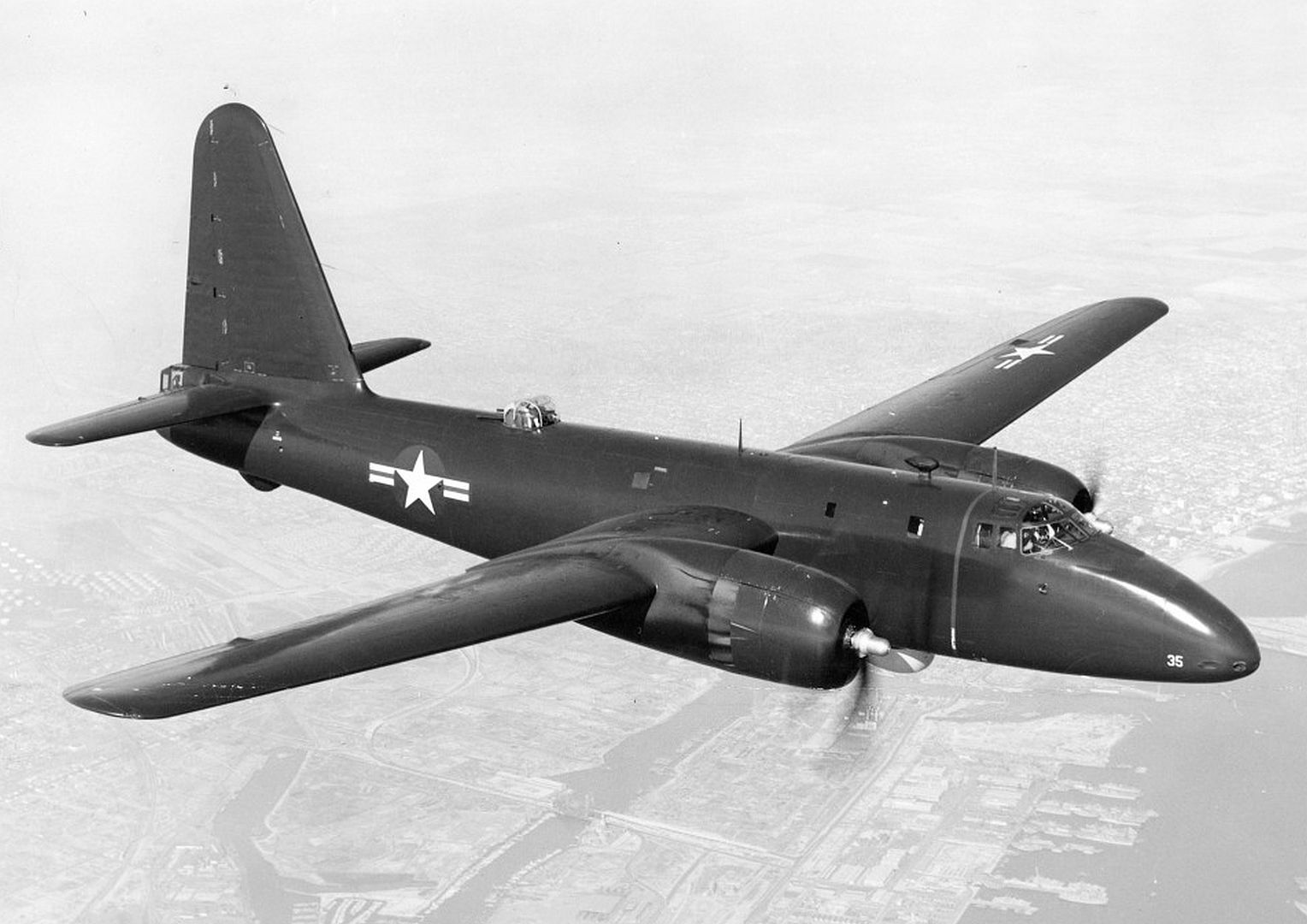
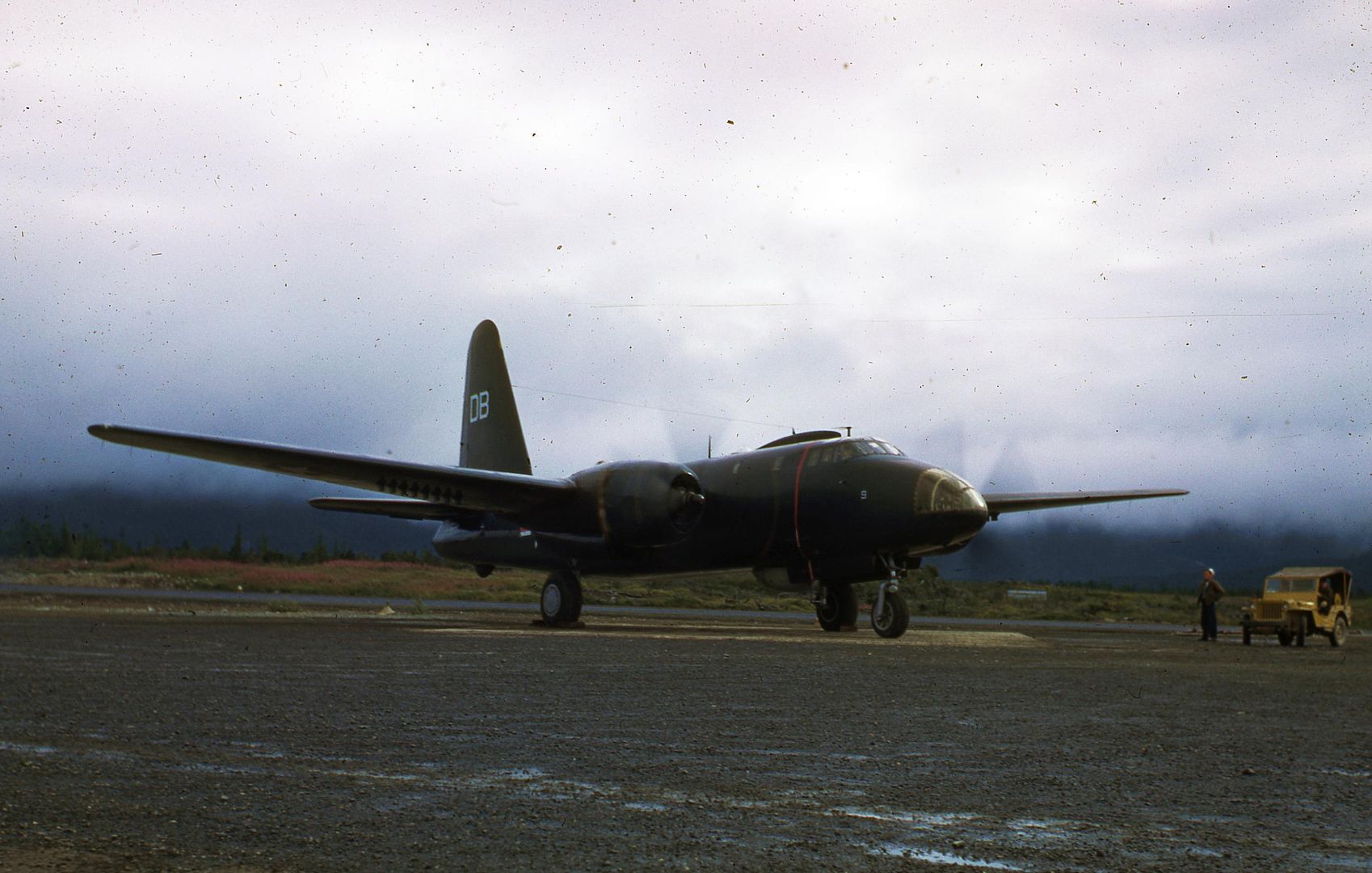
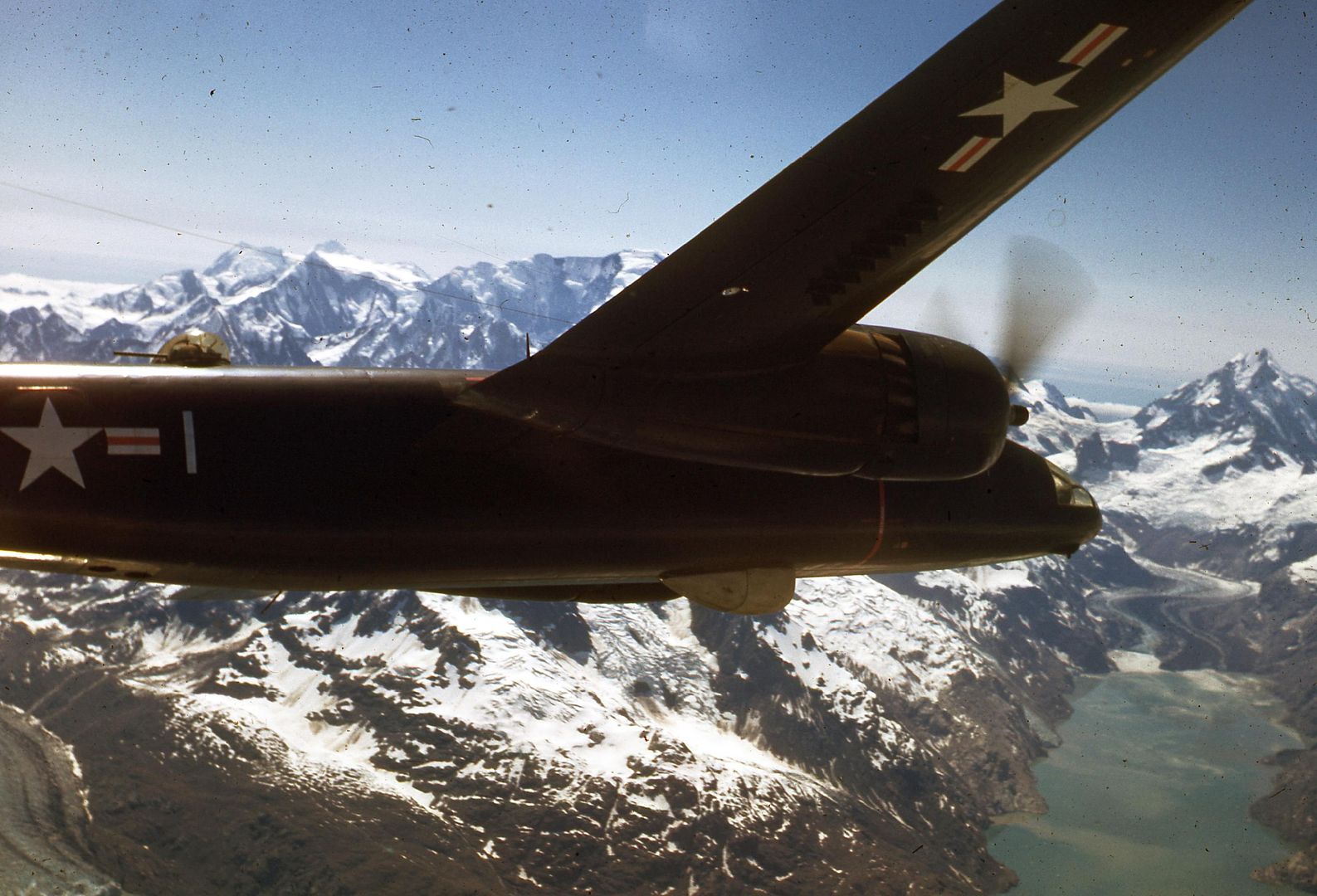
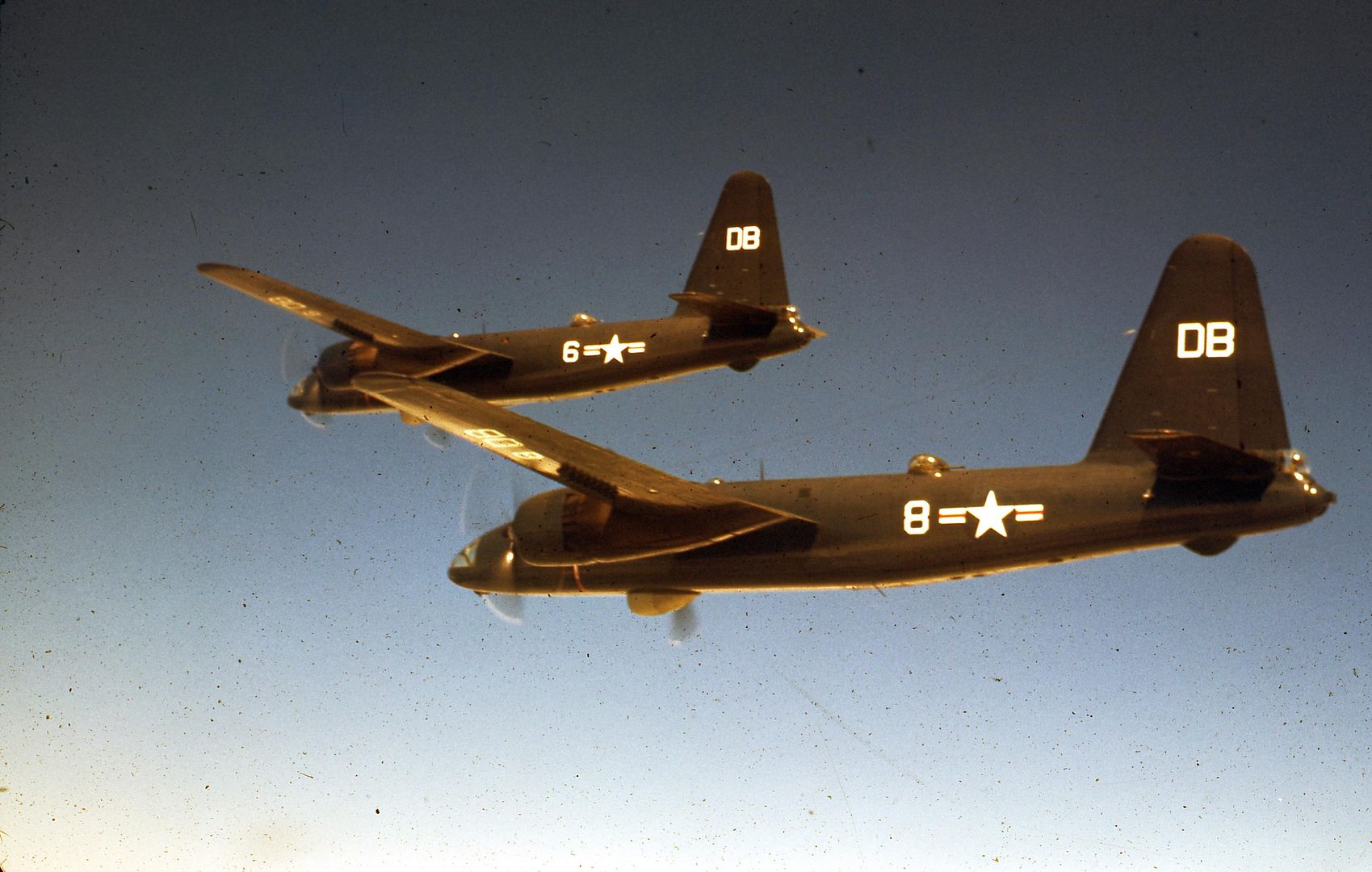
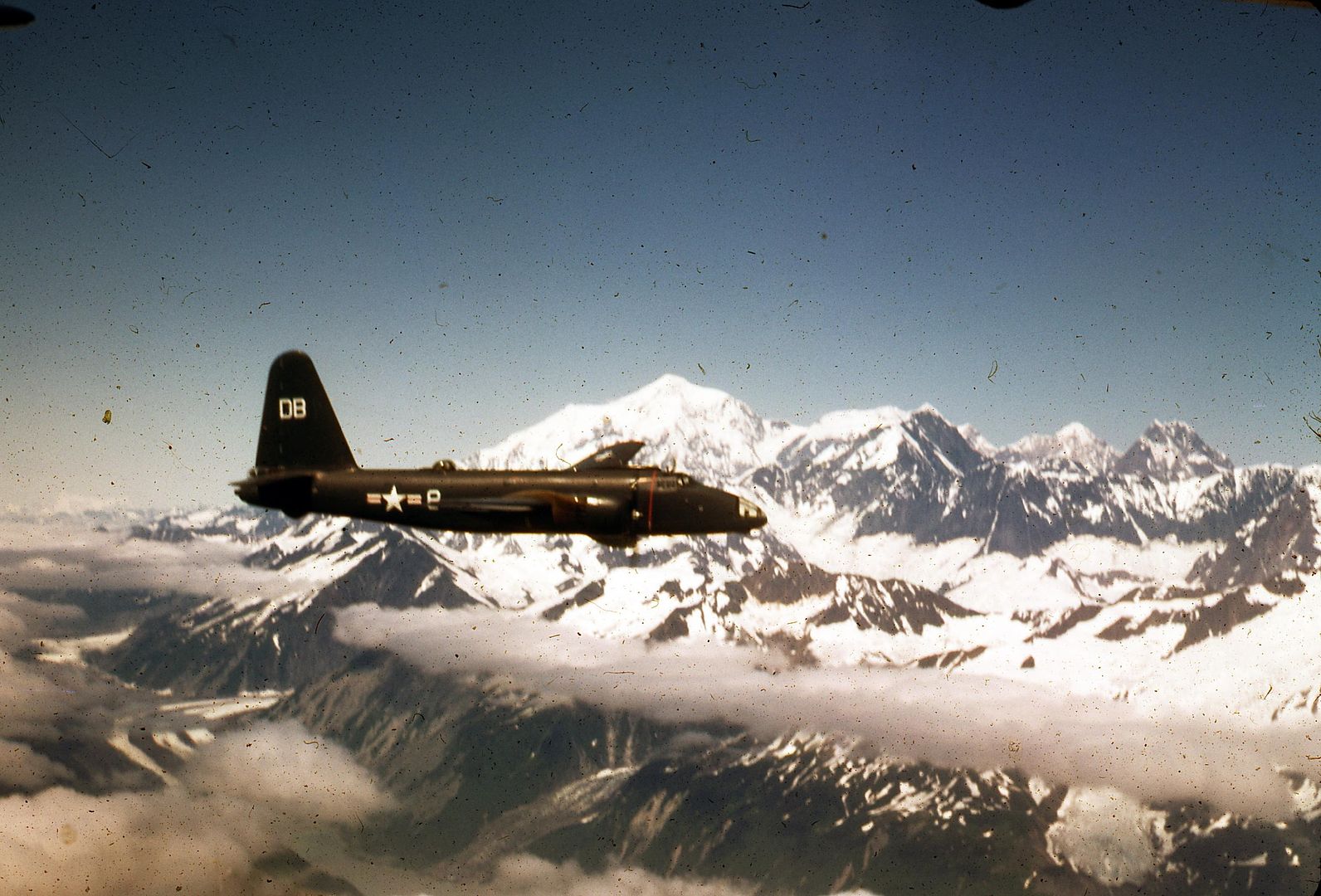
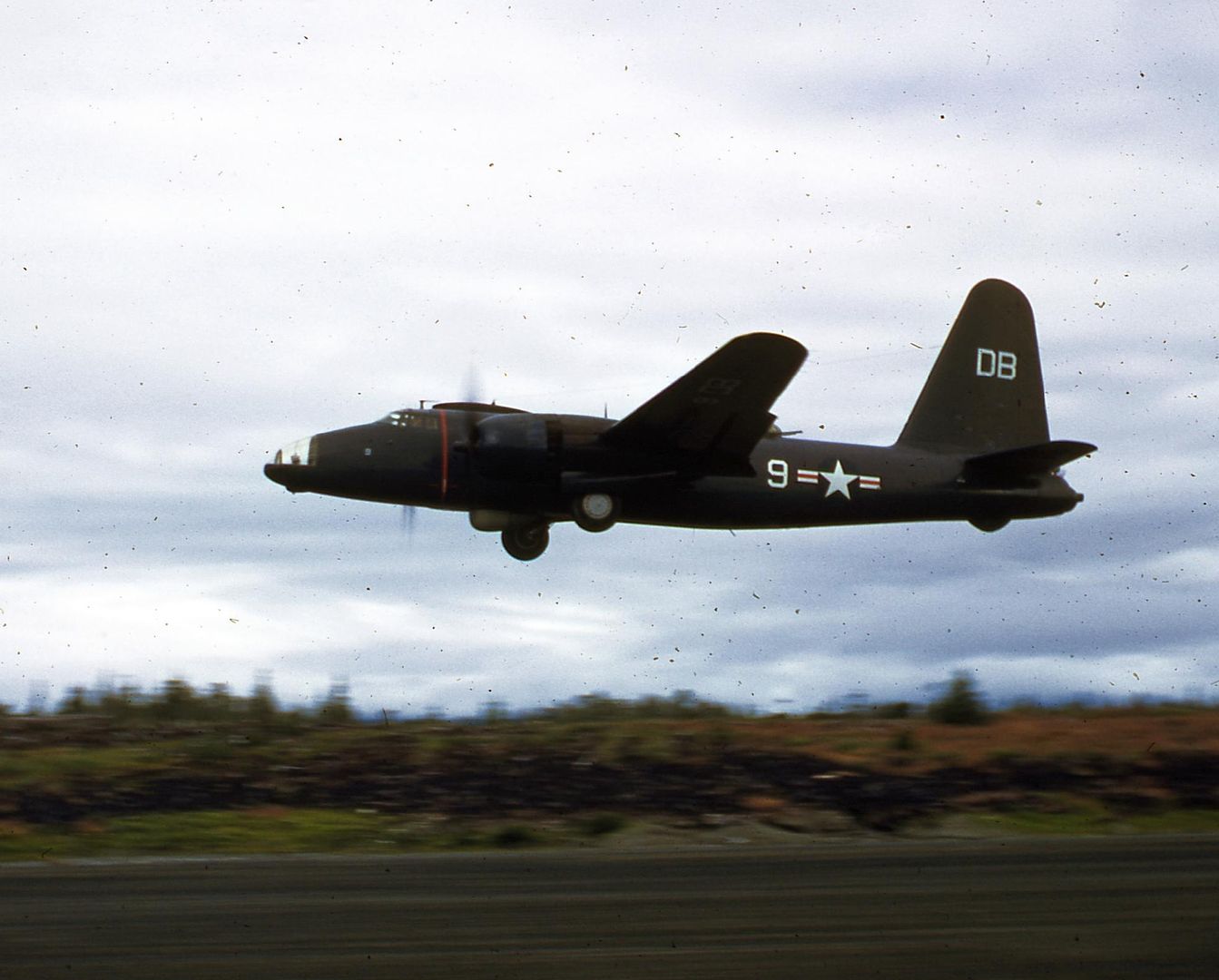
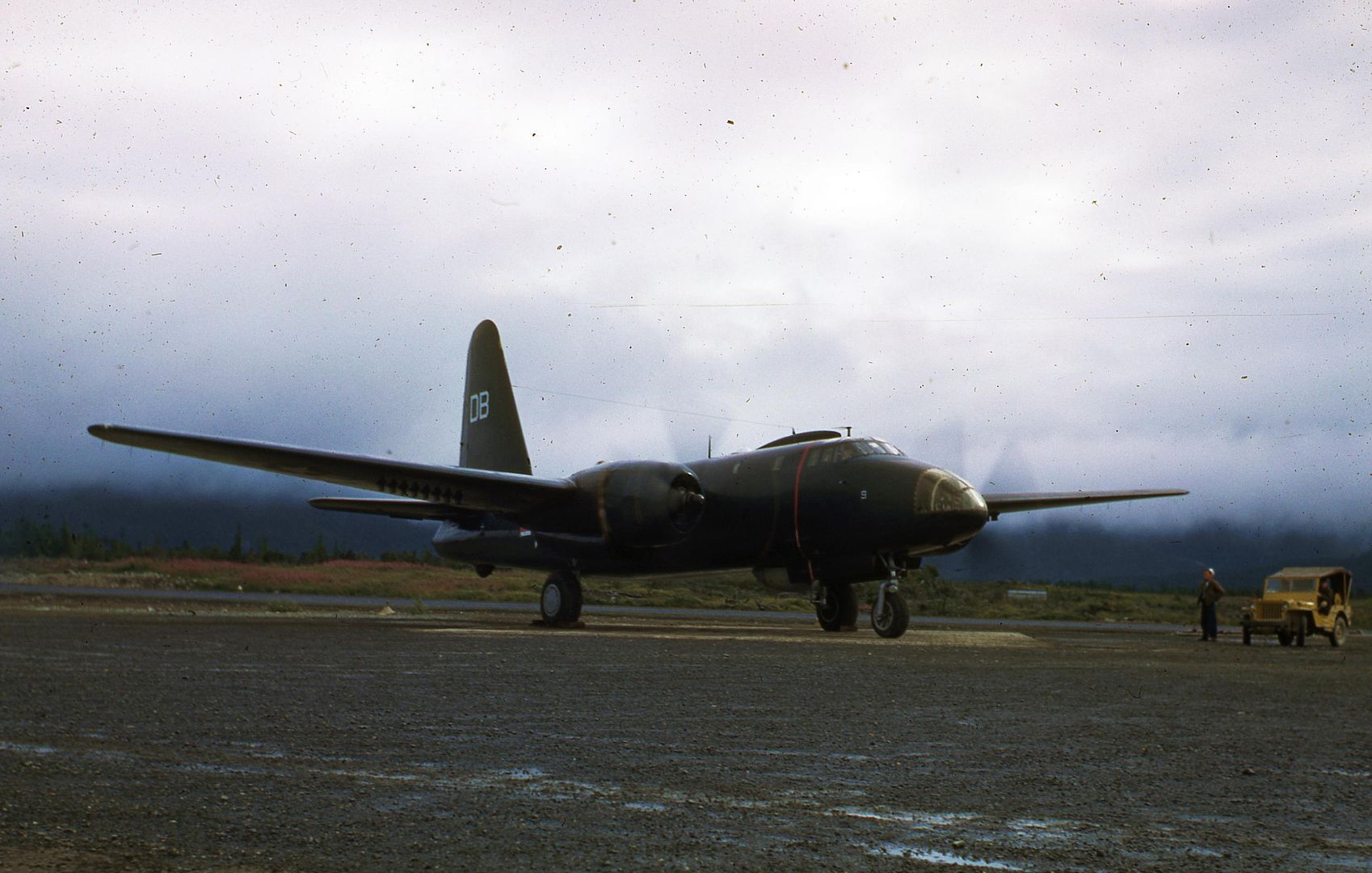

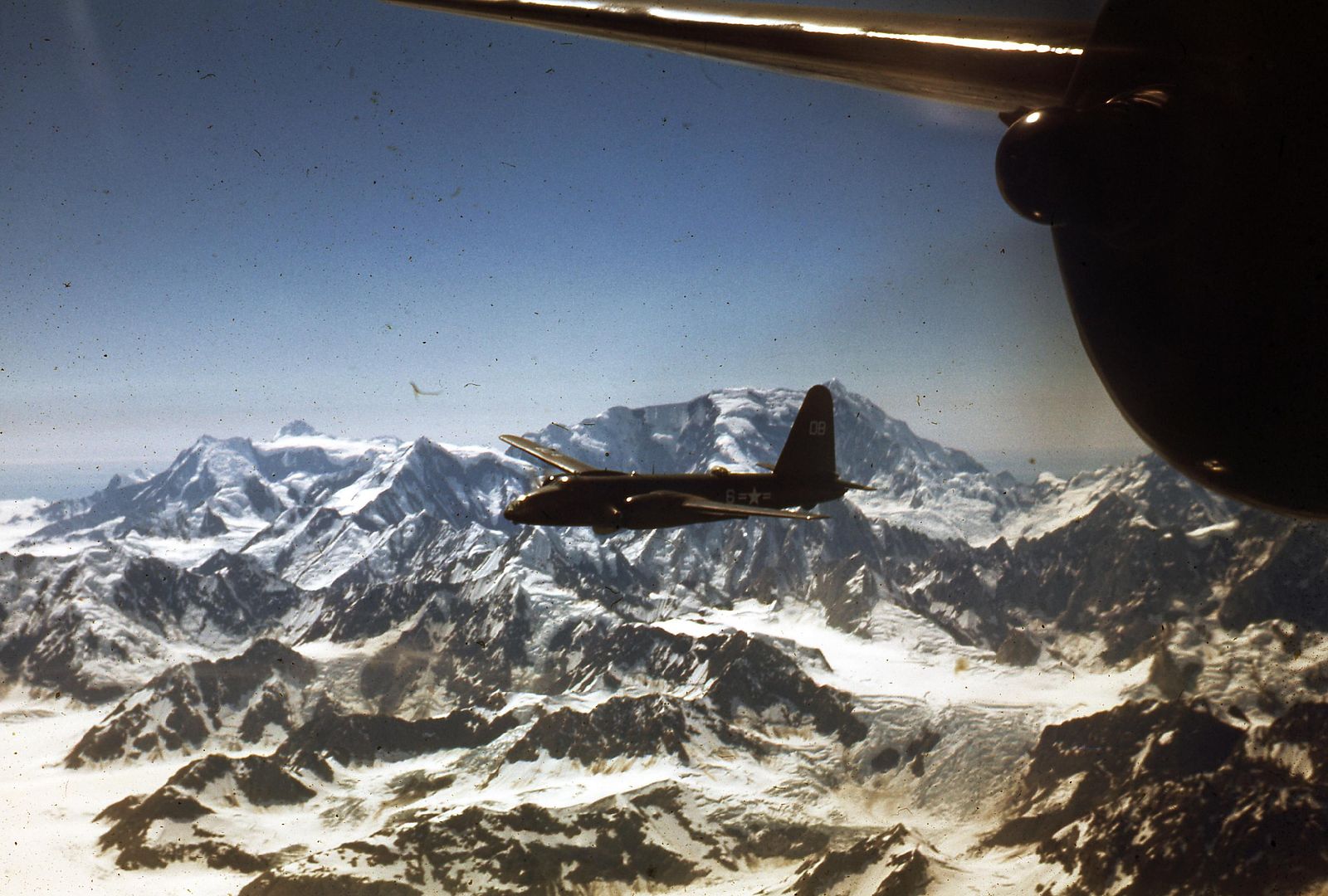

LOCKHEED P2V-2 NEPTUNE:
_____________________ _________________ ___________________________
spec metric english
_____________________ _________________ ___________________________
wingspan 30.5 meters 100 feet
wing area 92.90 sq_meters 1,000 sq_feet
length 23.8 meters 77 feet 10 inches
height 3.6 meters 28 feet 1 inch
empty weight 15,400 kilograms 33,960 pounds
max loaded weight 28,605 kilograms 63,080 pounds
maximum speed 515 KPH 320 MPH / 278 KT
cruise speed 287 KPH 178 MPH / 155 KT
service ceiling 7,925 meters 26,000 feet
range 6,410 kilometers 3,980 miles / 3,460 NMI
_____________________ _________________ ___________________________
The first P2V-2 went into US Navy service in 1947, with the last of the 81 built reaching the service in July of 1948.
* Two of the P2V-2s built were specially fitted for arctic operations and given the designation "P2V-2N"; they were apparently known as "Polar Bears". They were fitted with ski landing gear that wrapped around their tires, allowing the aircraft to land on either snow or a conventional runway. The landing gear was retractable, with the skis neatly faired into the nose and the engine nacelles in flight. The P2V-2Ns were intended for long-range arctic search and rescue, and had all armament removed, as well as the tail skid. They carried a primitive magnetic anomaly detector (MAD) probe in the tail in place of the tail turret.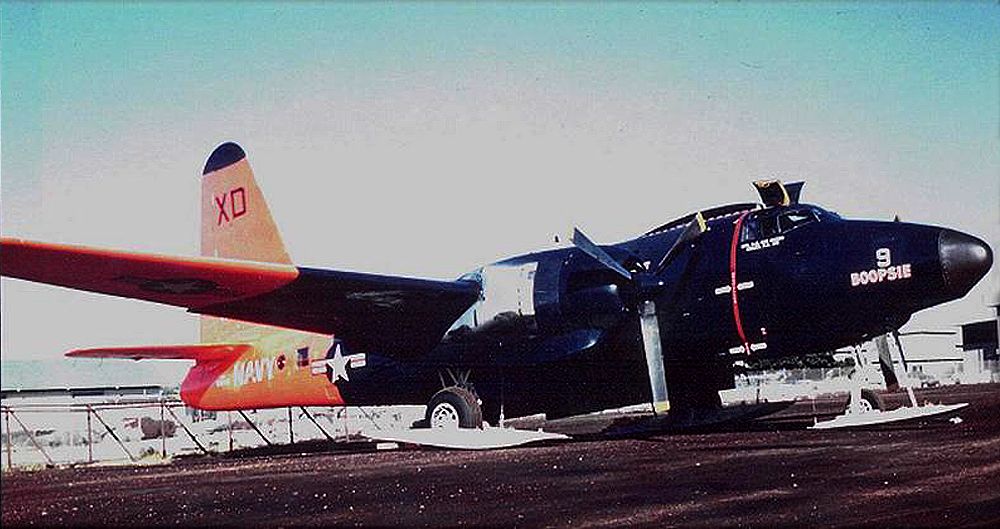
At least three P2V-2s were specially modified for photo mapping duties. The solid nose containing cannon was replaced by a glassed observation nose containing a mapping camera. All armament except for the dorsal turret was removed. Other P2V-2s were modified for training and other duties, and some were even refitted with four-bladed propellers.
-
 Main AdminP2V-3 / P2V-4
Main AdminP2V-3 / P2V-4
The "P2V-3" was externally very similar to the P2V-2, but featured even more powerful Wright R-3350-26W engines, with 2,390 kW (3,200 HP) for take-off. The P2V-3 was otherwise hard to tell from its predecessor. With the uprated engines, the P2V-3 had a top speed of 545 KPH (338 MPH). The first P2V-3 flew on 6 August 1948. A total of 83 was built, including subvariants, with the last delivered in January 1950. When Communist North Korea invaded South Korea later that year, the P2V-3 was pressed into service as a ground attack aircraft, plastering North Korean columns with 20-millimeter cannon fire and HVAR volleys.
There were four subvariants of the P2V-3:
The "P2V-3B" special armament aircraft, the "special" apparently meaning nuclear weapons. There were a total of 16 P2V-3Bs, all conversions of other P2V-3 models. The P2V-3B was fitted with the AN/ASB-1 Low Level Radar Bombing System, which was also used on the Douglas A-3 Skywarrior.
The "P2V-3Z" armed transport. Two P2V-3Zs were built as specialized armed transports to carry VIPs in combat zones. They included comfortable passenger accommodations and were heavily armored. The nose cannon, dorsal turret, and most combat avionics were removed, and they were also fitted with four-bladed propellers. Both P2V-3Zs were used operationally during the Korean War.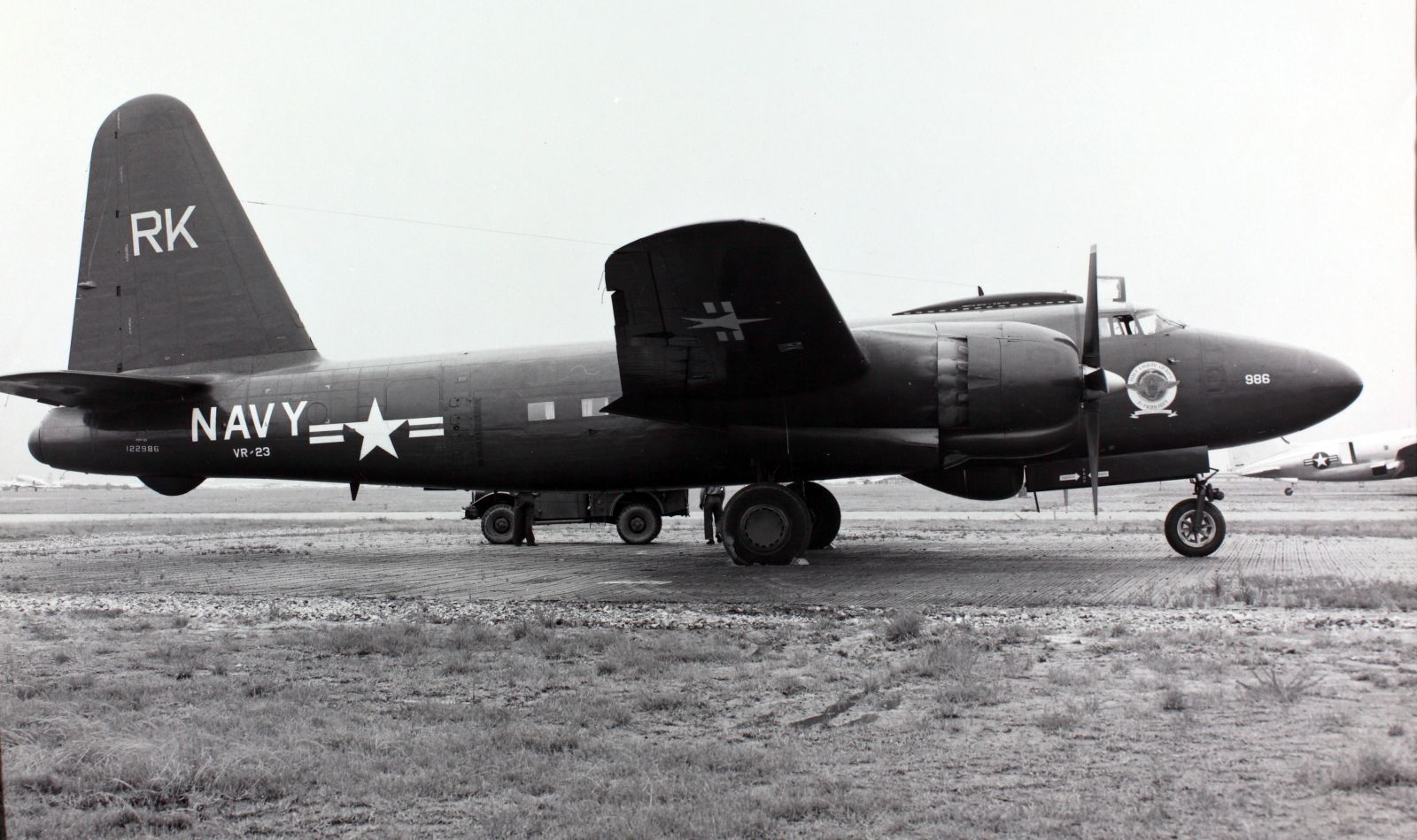
The "P2V-3C" carrier-launched aircraft. Eleven P2V-3Cs were built to provide the US Navy with a carrier-launched nuclear strike capability. These aircraft were fitted them with eight 4.4 kN (450 kgp / 1,000 lbf) thrust JATO bottles under the rear fuselage. Unsurprisingly, there was no provision for carrier recovery. Getting such a big aircraft off a carrier deck was impressive when the Neptune hadn't been designed to do such a thing to begin with, and landing it on a carrier would have been quite a trick. The aircraft was to fly to a friendly base after dropping its nuclear weapon, or ditch near a Navy vessel. The P2V-3C was purely a stopgap, a politically-driven measure intended to give the Navy a nuclear strike capability until the North American AJ Savage carrier-based nuclear bomber became available.
The P2V-3C was stripped of nose armament, dorsal turret, HVAR stubs, belly radome, astrodome, and tail skid. Additional fuel tanks were installed. Several P2V-3Cs set records for carrier-launched aircraft in 1948 and 1949.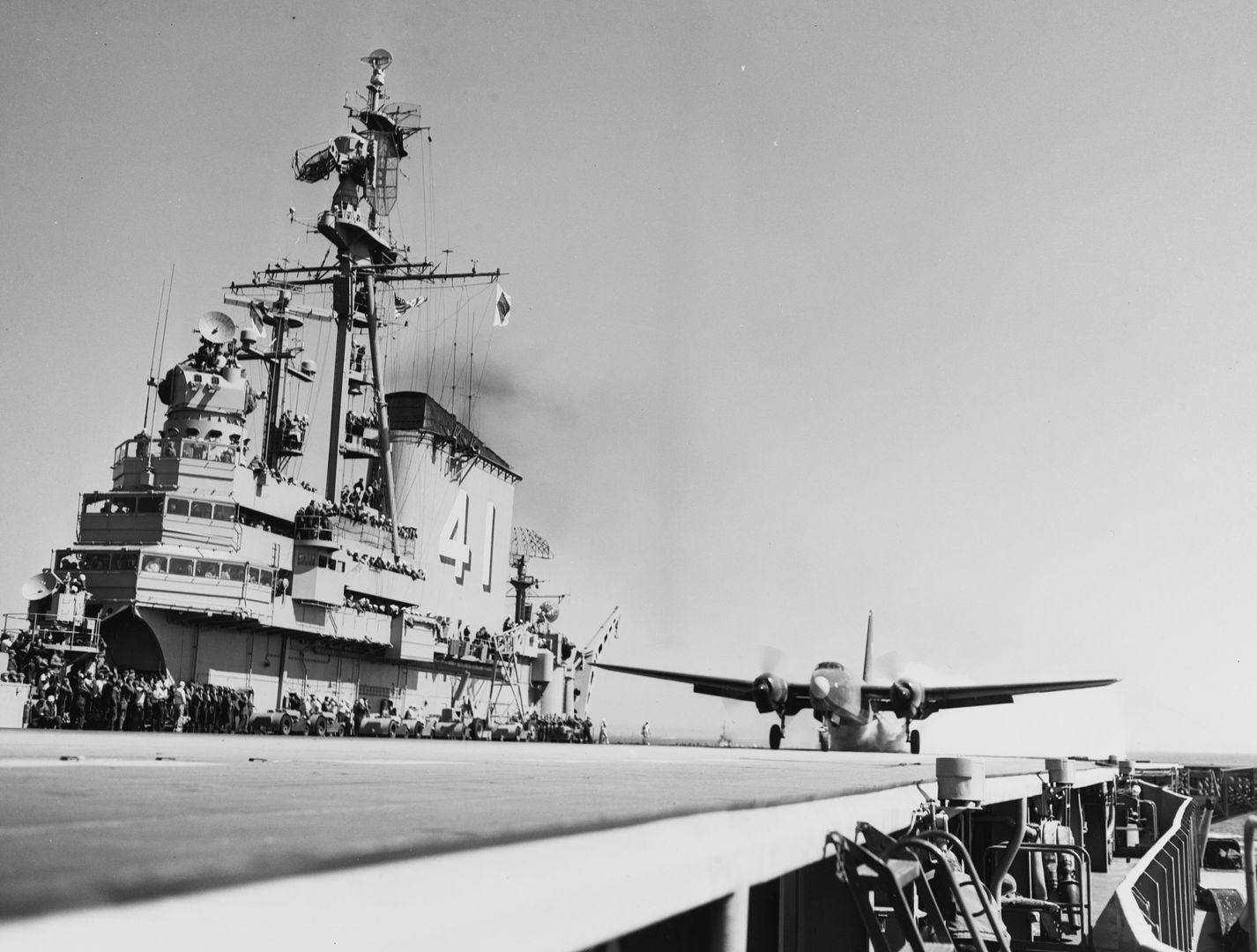
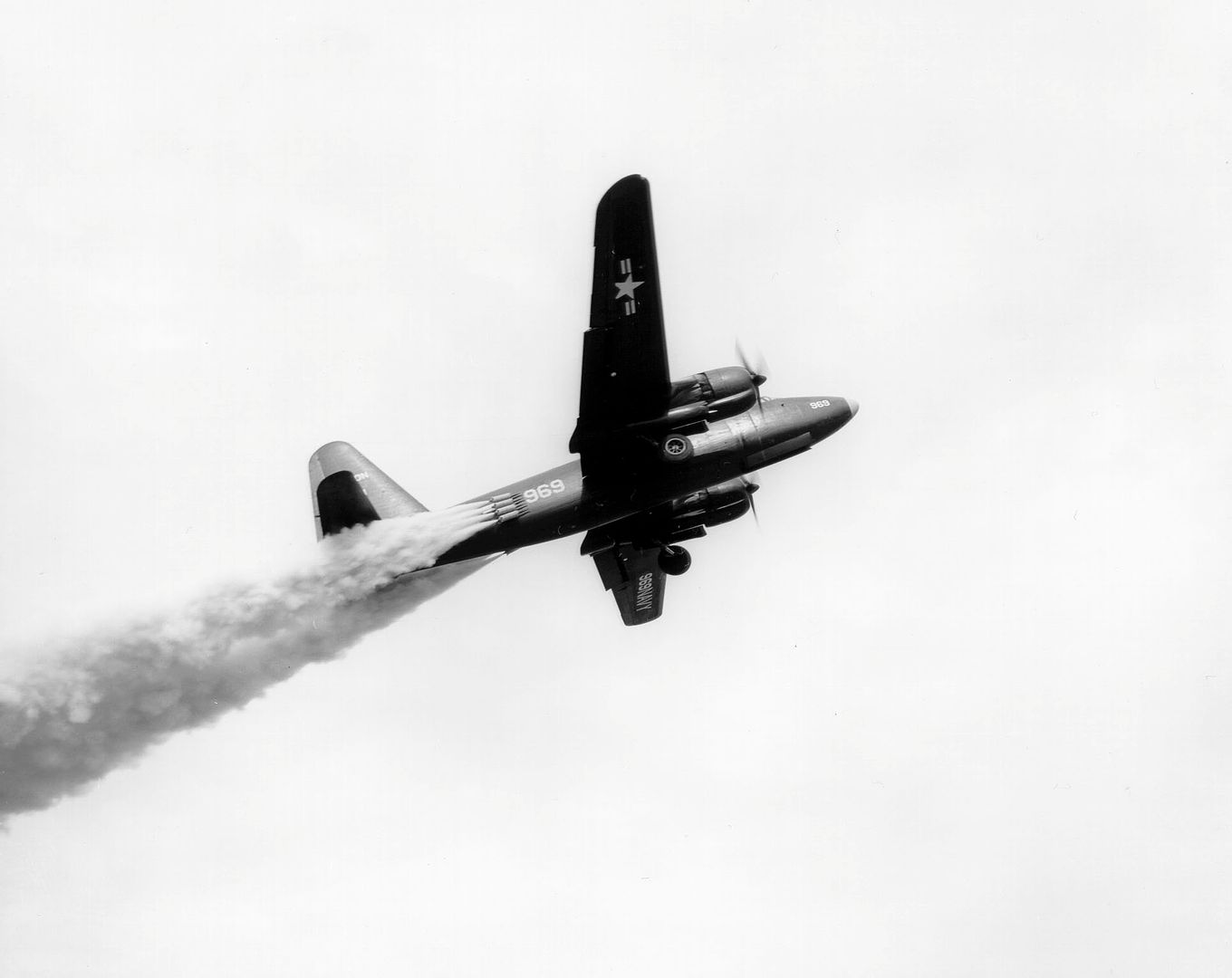
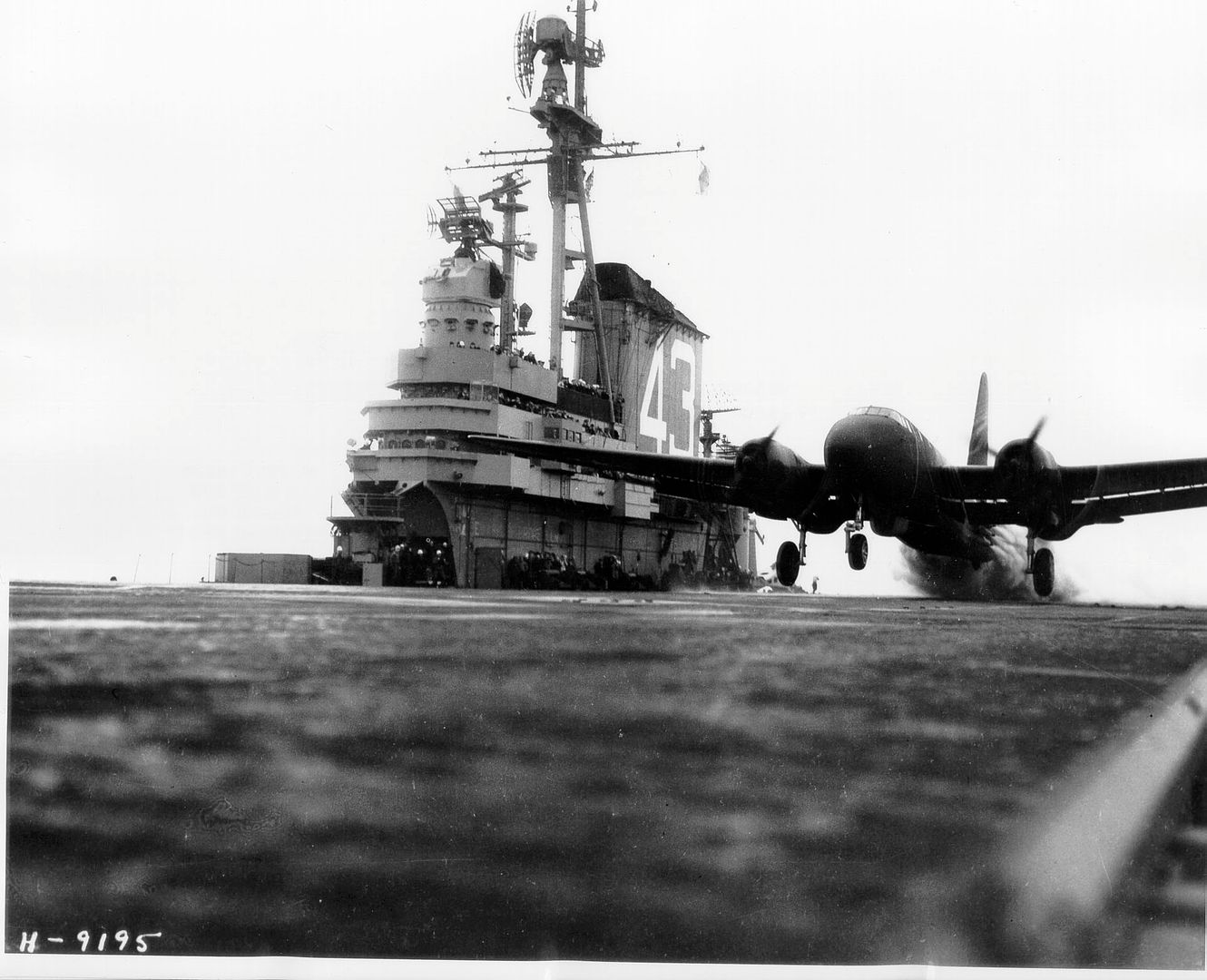
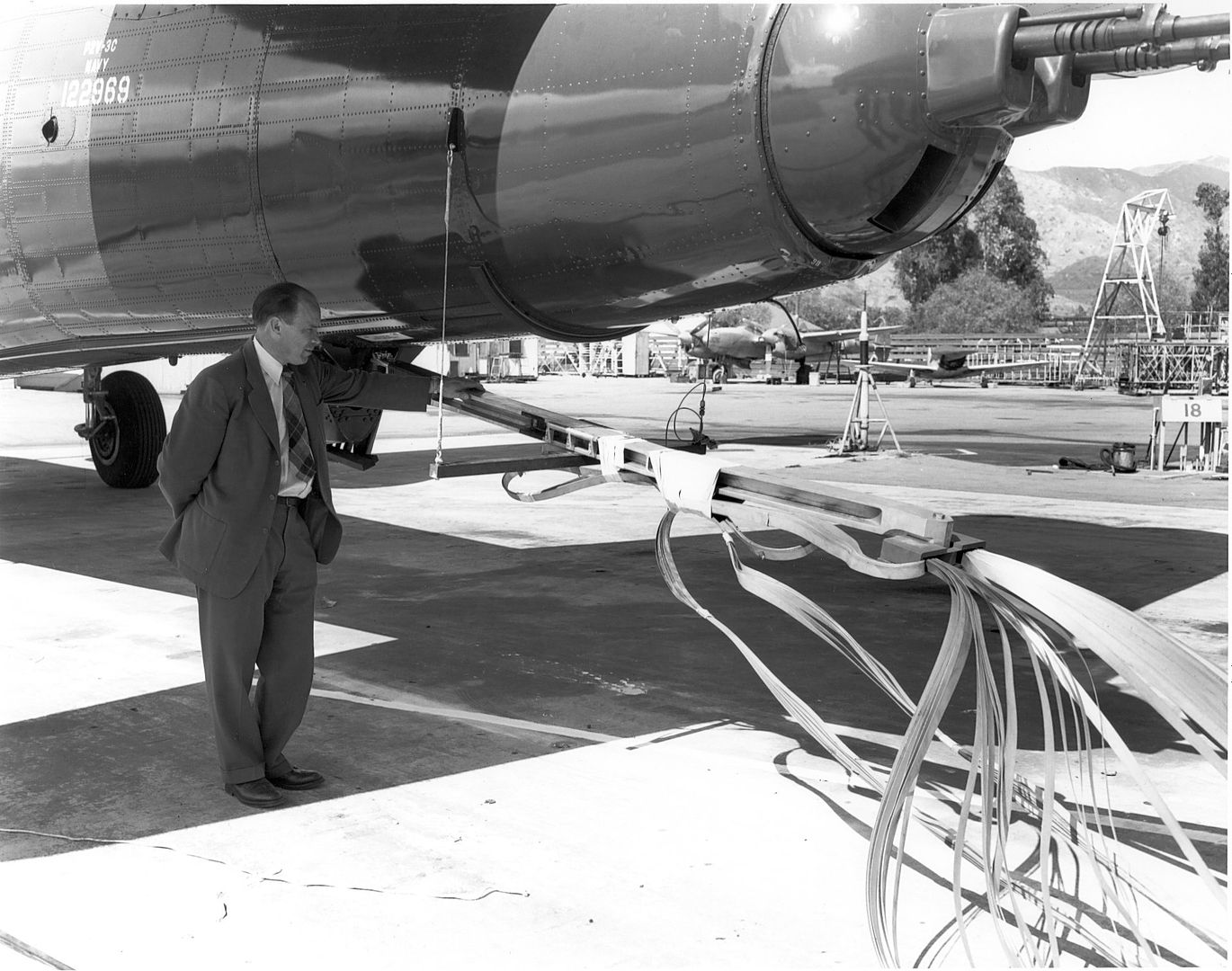
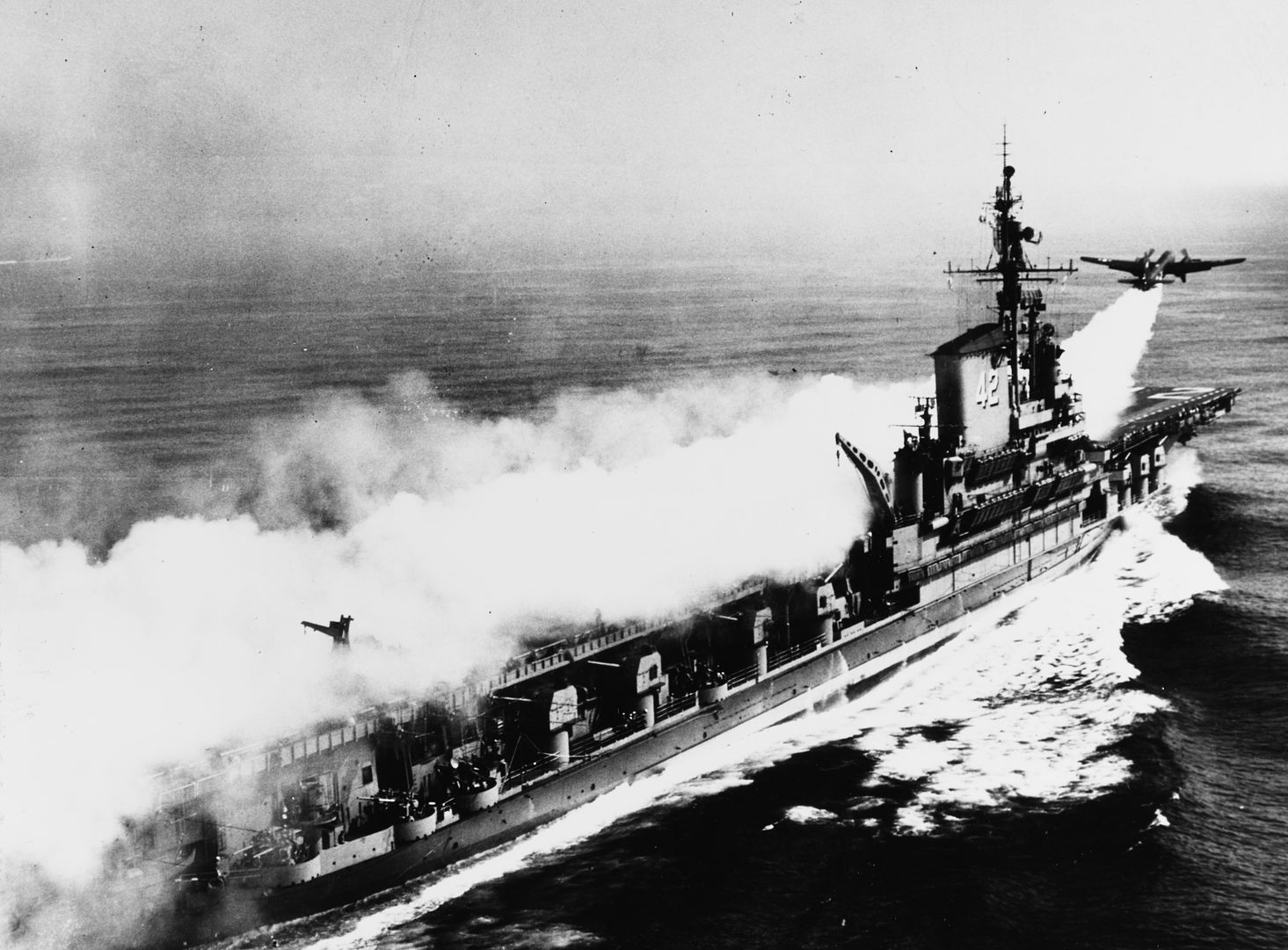
The "P2V-3W" aircraft, generally described as an early warning platform. 30 P2V-3Ws were built in all, and featured an AN/APS-20 search radar, mounted in a big radome under the forward fuselage. P2V-3Ws were used for secret electronic intelligence (ELINT) missions; it is unclear if these were special modifications of the P2V-3W with added ELINT gear, or if all the P2V-3Ws were actually spyplanes and the designation was simply a cover.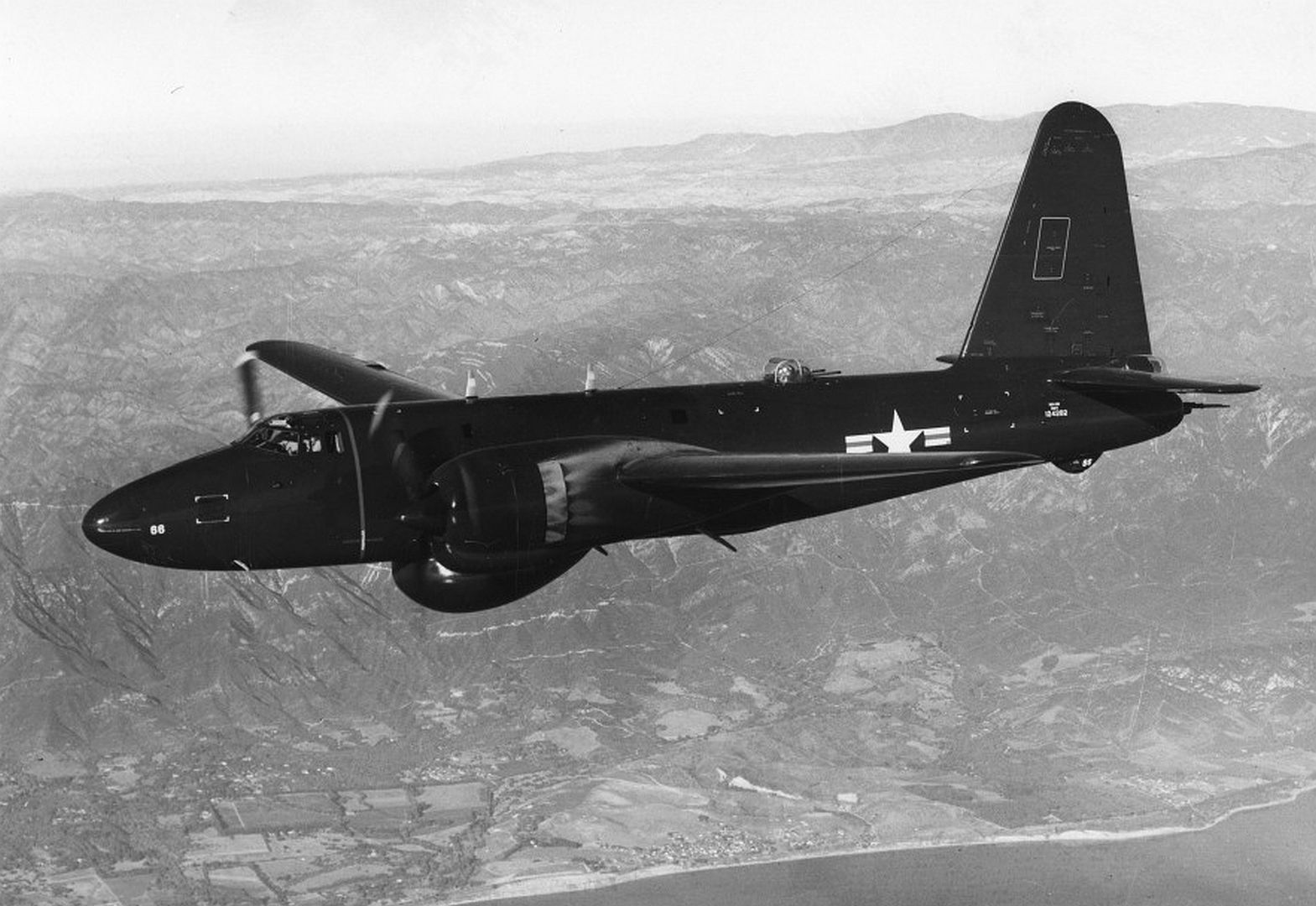
The P2V-3W may have been the first secret spy variant of the Neptune; it would certainly not be the last. Neptunes would be significant participants in covert "ferret" missions around (and sometimes over) the borders of the Soviet Union and other Communist bloc nations to characterize adversary defenses. They sometimes ran into trouble. The story of these secret spy missions only began to come out in the 1990s.
On 6 November 1951, Soviet MiG fighters jumped a P2V-3W probing the defenses of the Red Navy base area at Vladivostok, and shot the Neptune down, with all ten crew believed killed. The Soviets insisted it had been in their airspace, and had refused to follow fighters that tried to make it land. That may have well been true, but crews of US ferret aircraft were under strict instructions that they were not to obey orders to land, even if the alternative was death.
The Americans insisted the aircraft had been in international airspace. That might have been true, but sometimes the Soviets didn't care, particularly if they had been the victim of other US overflights, and simply wanted to make their irritation known. The MiG pilots were apparently given decorations, indicating that the shootdown was completely deliberate and approved of at the very top.
In the spring of 1952 a P2V-3W performed several overflights of the Kamchatka Peninsula, pinpointing reconnaissance targets for a Boeing RB-50 Superfortress flying at higher altitude. Oddly, the Neptune was escorted by MiGs several times, sometimes when it was over Soviet airspace, and not fired on, though the MiG crews took pictures of the P2V-3W. It certainly must have been a very stressful experience for the Neptune crew.
* The "P2V-4" was another stepwise refinement of the Neptune type, featuring yet another uprated powerplant fit, increased fuel capacity, and standard fit of the AN/APS-20 radar and associated enlarged radome used on the P2V-3W. The first P2V-4 flew on 14 November 1949.
The new powerplants were Wright R-3350-30W Turbo-Compound engines with 2,800 kW (3,750 HP) each, though early production aircraft had the R-3350-26W engines used on the P2V-3 and were upgraded to the new engines later. All the P2V-4s used four-bladed propellers. The top speed was increased once more, to 565 KPH (350 MPH). The additional fuel tanks fitted to the P2V-1 TRUCULENT TURTLE for its record breaking distance flight led Lockheed engineers to consider what might be done to improve the fuel capacity of the Neptune in general, and the P2V-4 incorporated additional fuel tanks in the fuselage and wings. It also featured spindle-shaped external tanks that were attached under the wing tips. The external tank attached to the right wingtip included a searchlight in its nose. The increased fuel capacity gave the P2V-4 a range of 6,750 kilometers (4,200 miles).
Armament fit of the P2V-4 was the same as that of the standard P2V-3. It carried radio sonobuoys to improve its antisubmarine capabilities, and was known as the "Snorkel Snipper" since its likely prey was to be diesel submarines operating with snorkels. Crew was increased to eight to include a sonobuoy operator.
52 P2V-4s were built. There were no formal subvariants. Some P2V-4s were used for ocean patrol during the Korean War. In 1962, the US military changed to a uniform aircraft designation system, and P2V-4s still in operation with the US Naval Reserve were redesignated "P-2Ds".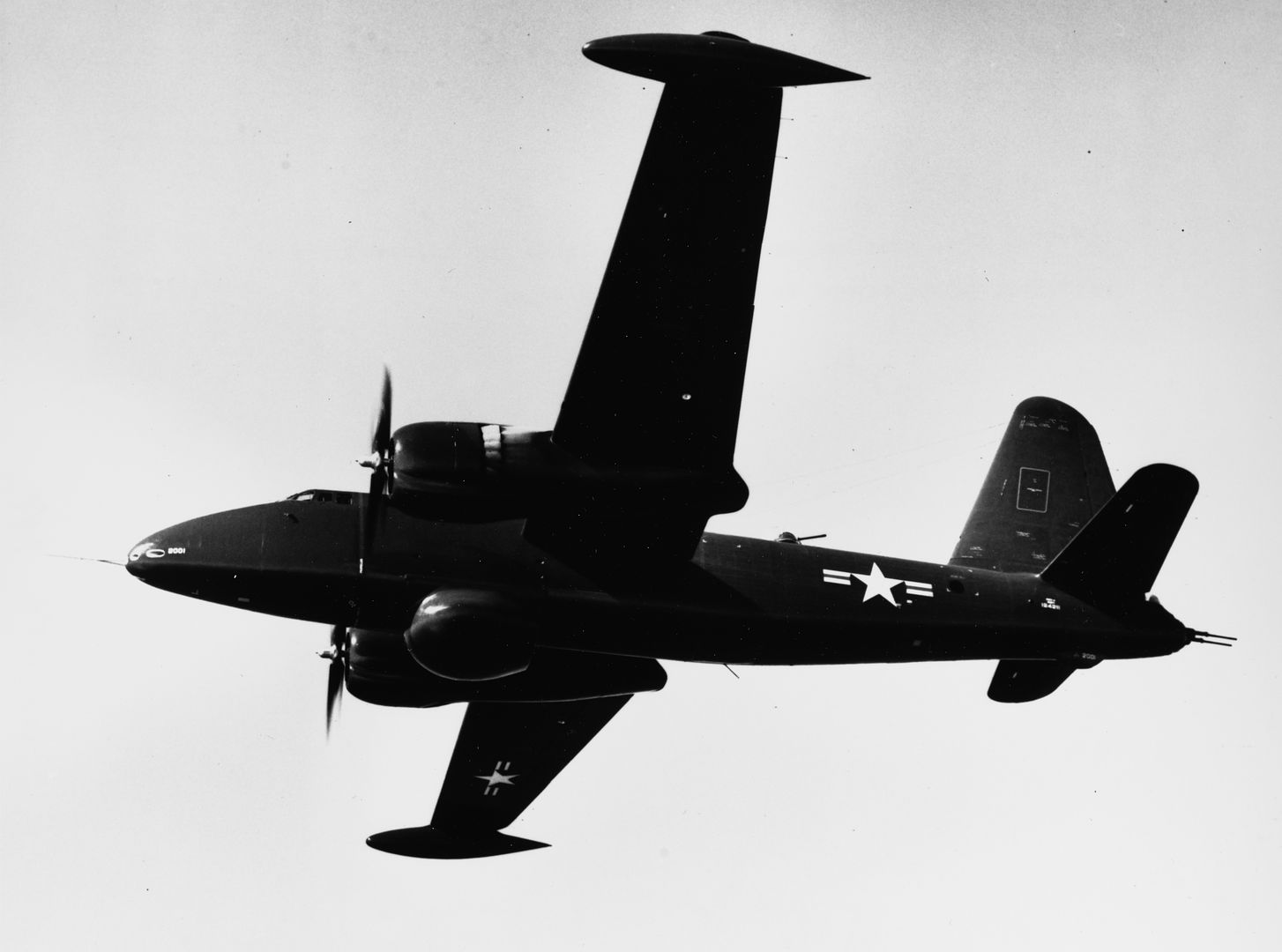
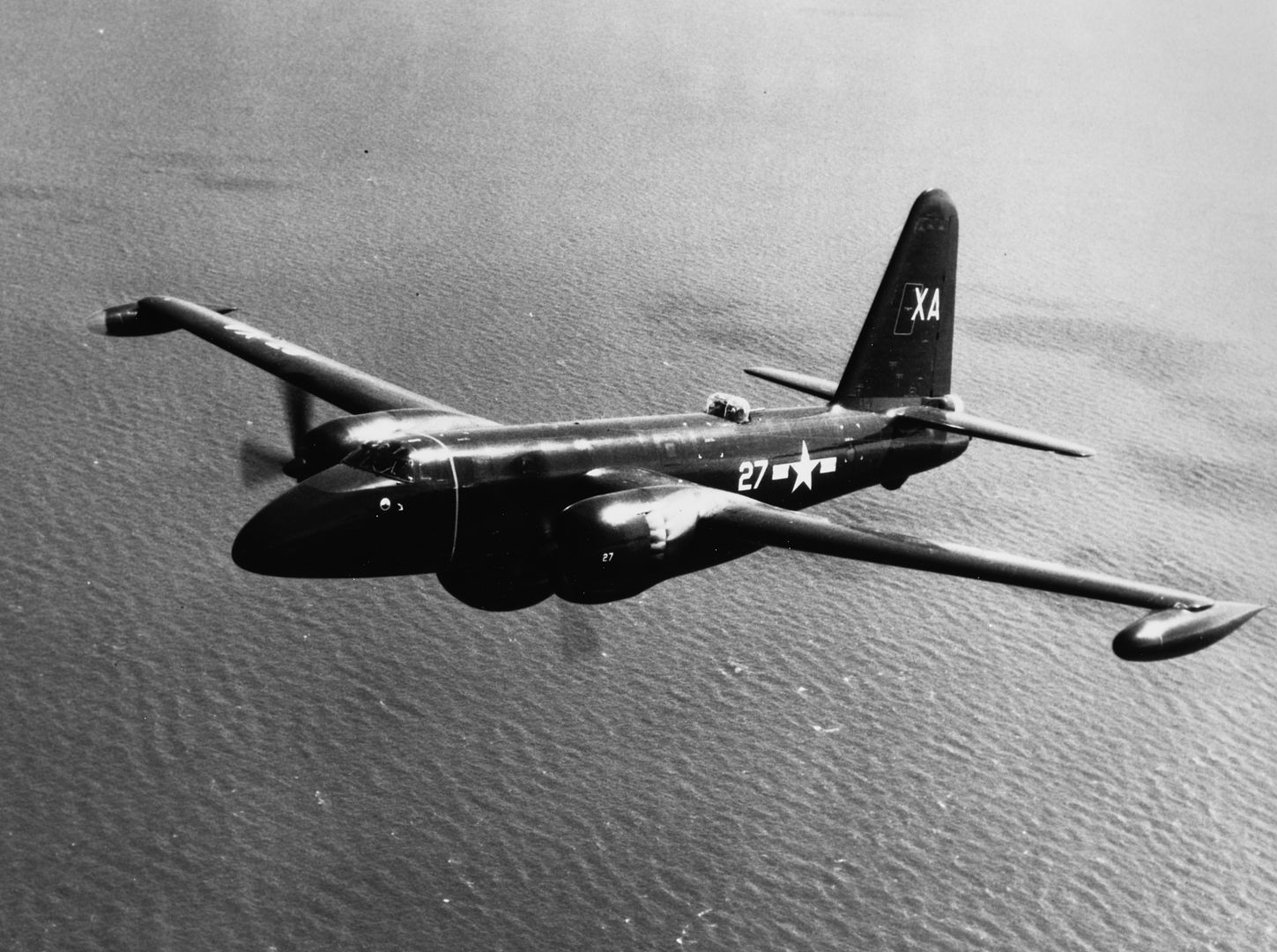
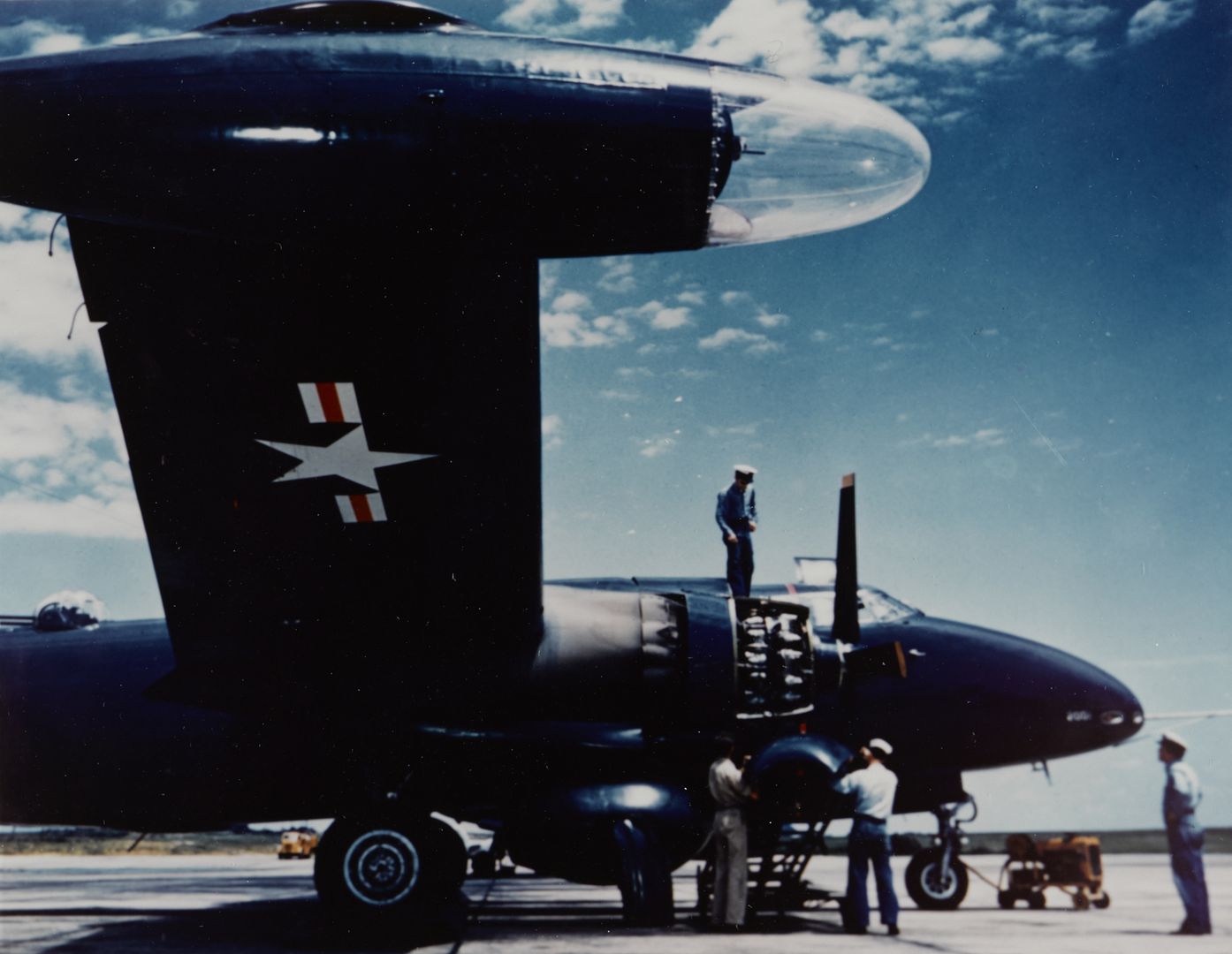
P2V-5
The "P2V-5" was the definitive Neptune variant, with 424 built. It replaced earlier Neptune variants in first line operation, relegating them to reserve status. Various changes and enhancements made through its subvariants resulted in an aircraft distinctly different in appearance from its predecessors. Its successors would retain much the same configuration.
The first P2V-5 flew on 29 December 1950, and the type performed ocean patrols during the later parts of the Korean War. The P2V-5 retained the same powerplants as the P2V-4, but the six fixed 20-millimeter cannon in the nose were replaced by an Emerson nose turret mounting twin 20-millimeter cannon. Additional anti-submarine warfare (ASW) and electronics countermeasures (ECM) gear -- particularly an AN/ALR-3 countermeasures receiving set, with small fairings on the side of the nose and rear fuselage -- were incorporated, and another crew member was added to operate the new ASW-ECM gear, bringing the total to nine.
The wingtip tanks introduced in the P2V-4 were enlarged and attached directly to the wingtips, instead of under them, though initial production retained the earlier tanks. Range was increased to 7,650 kilometers (4,750 miles). The bigger tanks had fins and could be dropped in an emergency. The right wingtip tank had a searchlight in front whose movement was synchronized to and boresighted with that of the nose turret. Apparently one of the wingtip tanks was also fitted with a short-range radar, variously given as the AN/APS-8 or AN/APS-31, and either fitted in the nose of the left wingtip tank or ganged to the searchlight in the right. In any case, the P2V-5 retained the AN/APS-20 search radar of the P2V-4.
The P2V-5 was upgraded with new features during production, such as:
A raised cockpit with bigger windscreens for improved visibility.
A clear glass observation position that replaced the nose turret.
A long AN/ASQ-8 MAD stinger that replaced the tail turret.
One of the most distinctive updates was a refit with two 15.1 kN (1,540 kgp / 3,400 lbf) thrust Westinghouse J34-WE-34 turbojets, fitted outboard of the piston engines. These turbojets were used to assist in take-offs and for additional combat speed. The number of HVAR stub launch rails was reduced from 16 to 8 when the turbojets were fitted. This subvariant was designated the "P2V-5F".
LOCKHEED P2V-5F NEPTUNE:
_____________________ _________________ ___________________________
spec metric english
_____________________ _________________ ___________________________
wingspan 31.7 meters 103 feet 10 inches
wing area 92.90 sq_meters 1,000 sq_feet
length 27.8 meters 91 feet 2 inches
height 3.6 meters 28 feet 1 inch
empty weight 18,935 kilograms 41,755 pounds
max loaded weight 34,535 kilograms 76,150 pounds
maximum speed 520 KPH 323 MPH / 280 KT
cruise speed 333 KPH 207 MPH / 180 KT
service ceiling 7,705 meters 23,200 feet
range 7,650 kilometers 4,750 miles / 4,130 NMI
_____________________ _________________ ___________________________
The P2V-5F led to further subvariants. The "P2V-5FD" was a modification to act as a target drone controller. All armament was removed as well as most of the combat avionics, and the aircraft was fitted with drone control systems and a pair of pylons for carrying Ryan Firebee drones. These drone controllers remained in service until the early 1970s.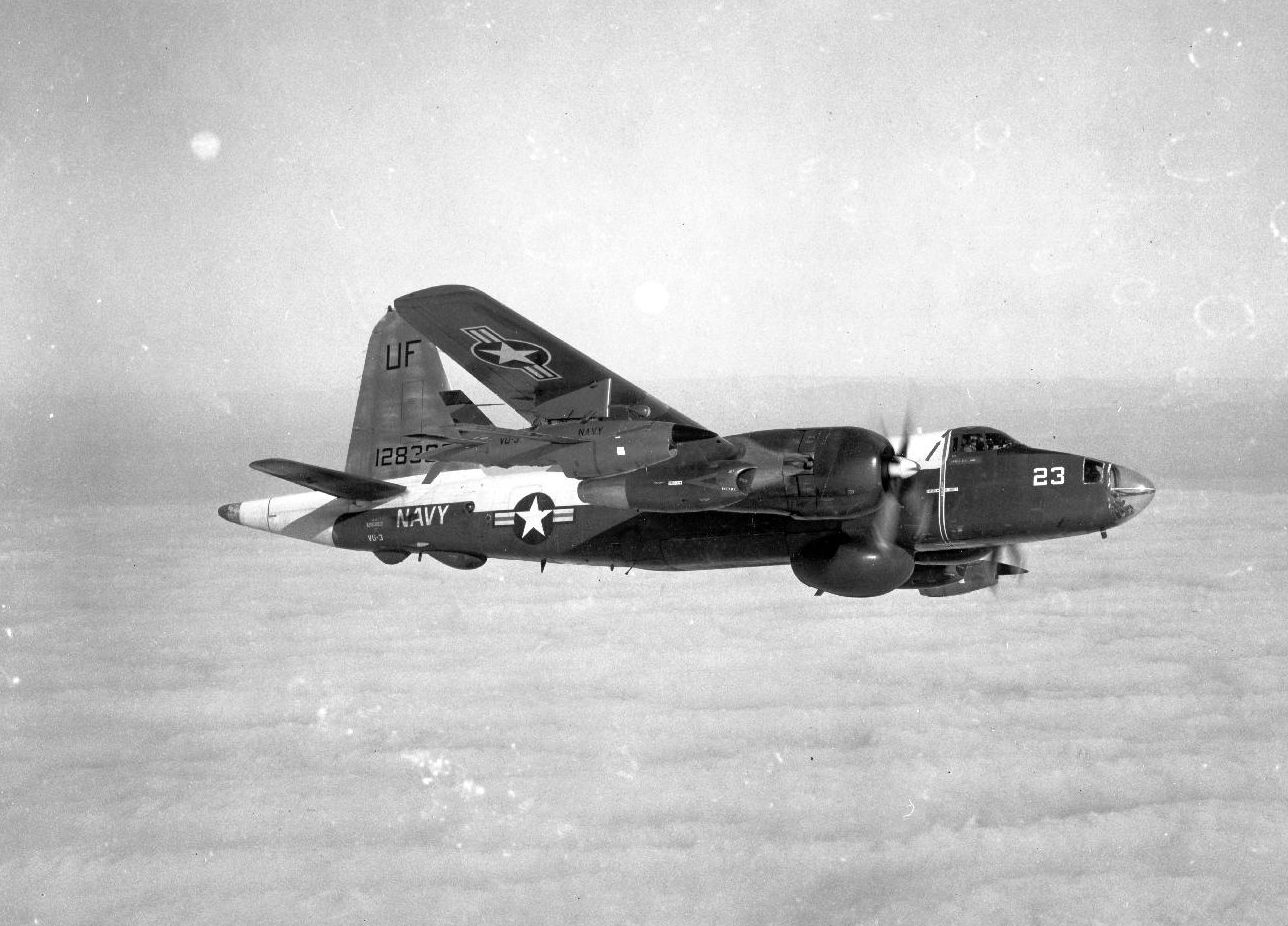
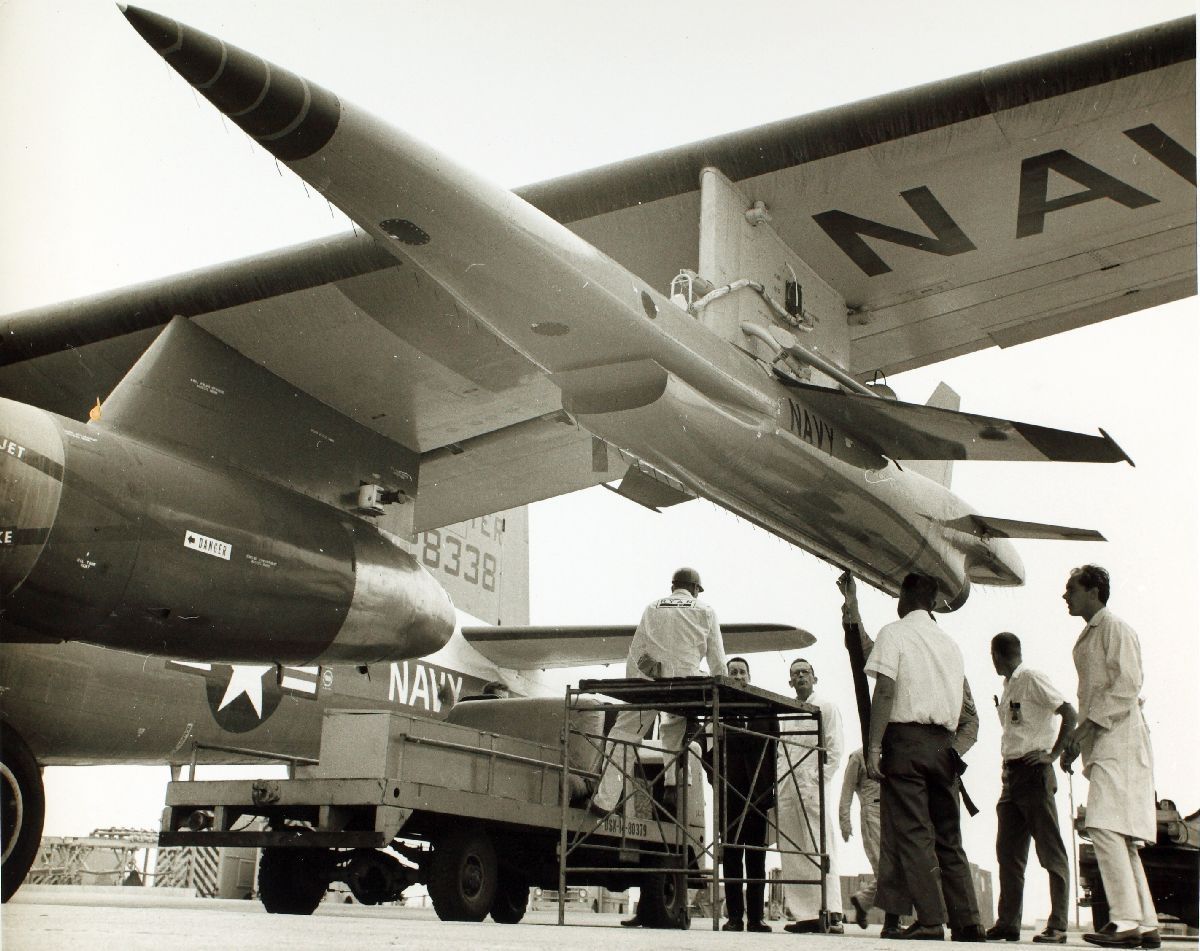
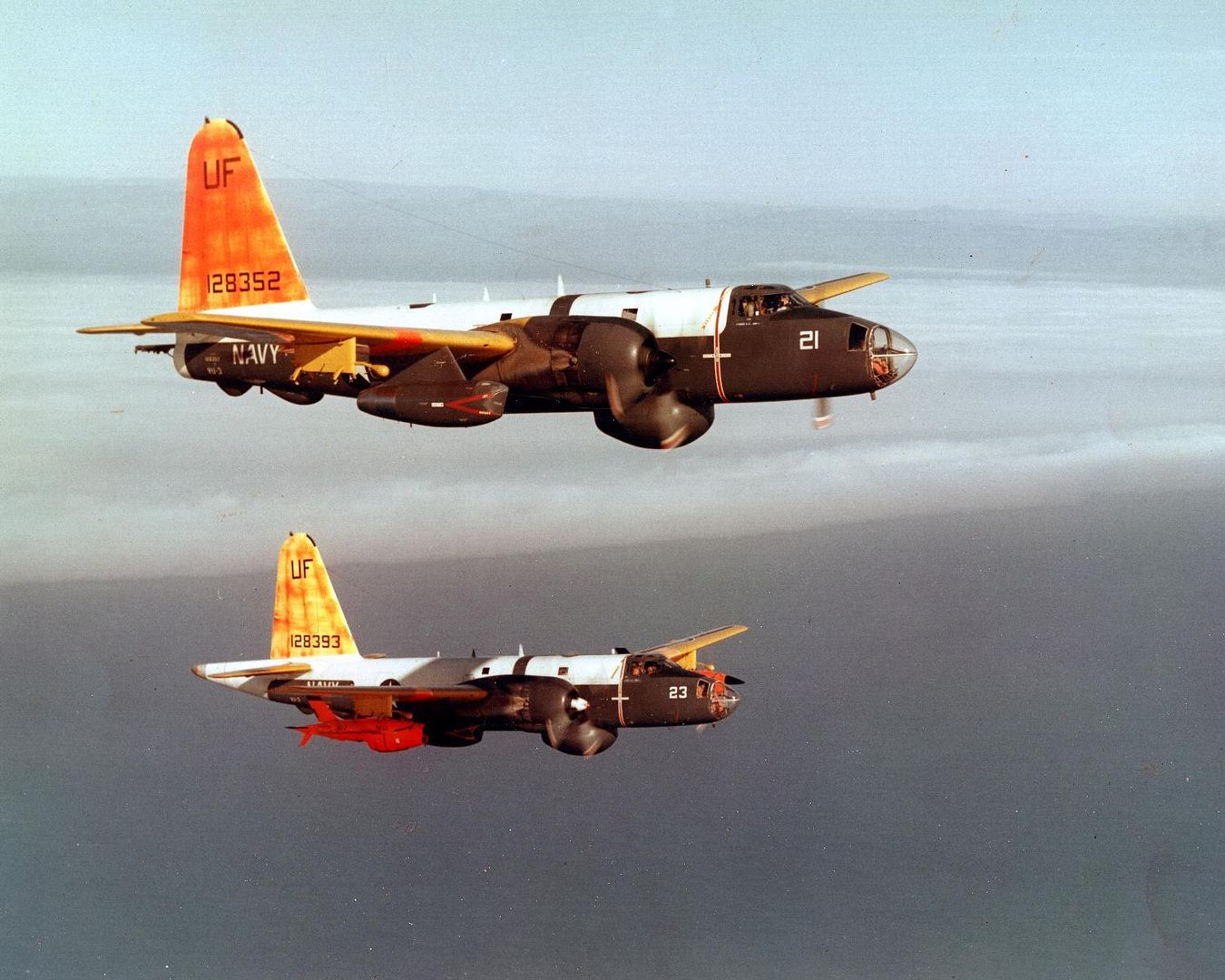
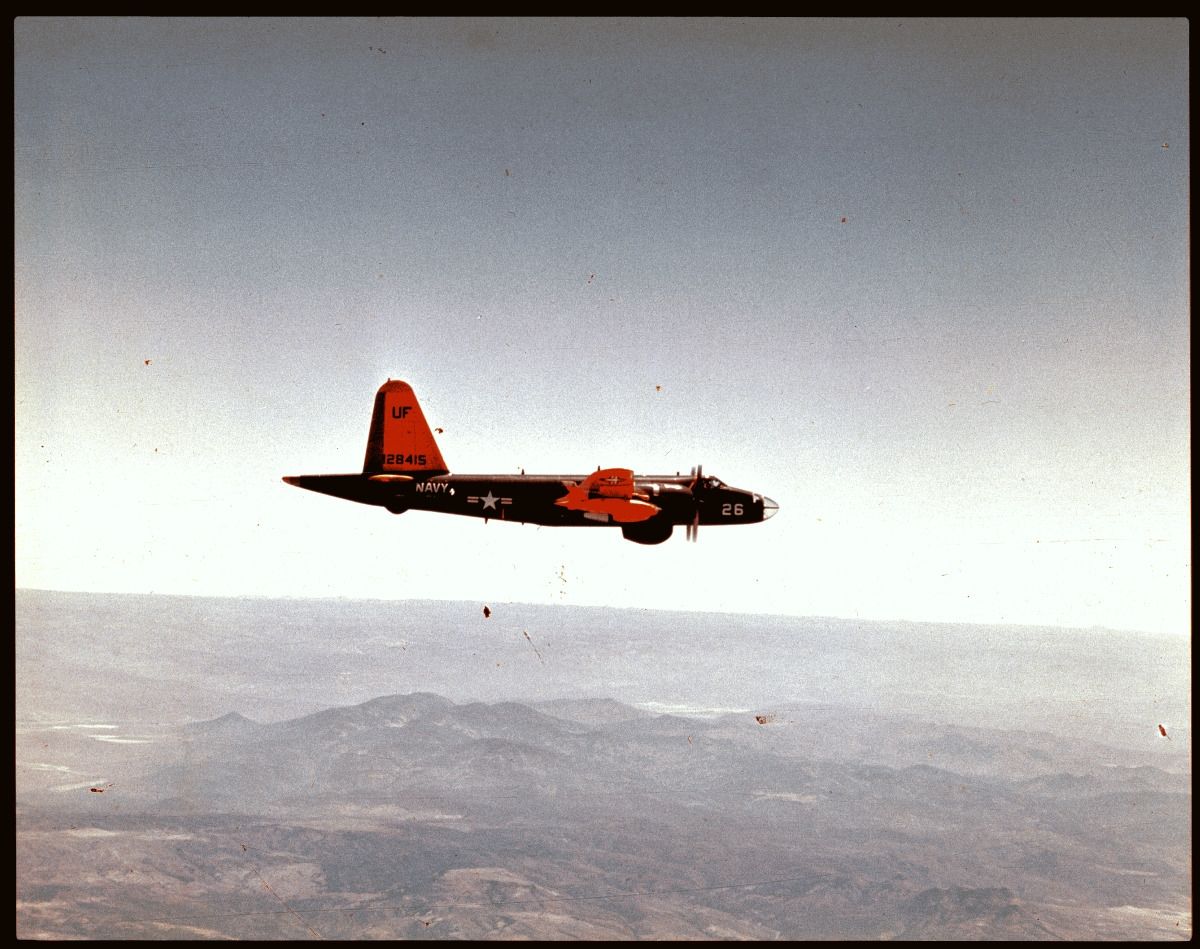
There was also a "P2V-5FE", which was fitted with unspecified additional avionics, possibly for ELINT, and a "P2V-5FS" which carried the "Julie-Jezebel" sonar system. Some P2V-5Fs were stripped of all armament and used as US Navy "hurricane hunters", flying into hurricanes to perform weather observations.
* As with the P2V-3Ws, P2V-5s on ELINT missions sometimes got into trouble. One was shot down by Chinese ground fire near the port of Swatow on the Formosa Straits on 18 January 1953, ditching at sea. A Navy PBM-5 Mariner flying boat picked up survivors of the Neptune's crew, only to then come under fire from shore batteries itself. The pilot tried to take off but crashed. A US Navy destroyer, the USS HALSEY POWELL, intervened, also taking hits, and managed to rescue 7 of the original 13 on board the Neptune and 3 of the 8 on board the Mariner. Another Mariner and the destroyer USS GREGORY were involved and took hits themselves. It is unclear if the destroyers returned fire on the Chinese shore batteries, but in hindsight the whole affair sounds less like an "incident" than like a full-scale battle.
On 4 January 1954, a P2V-5 on a ferret mission around Dairen on the Manchurian coast went down with ten crew in the Yellow Sea. The circumstances of this incident are particularly murky. The mission was being conducted at night and in intermittent snow squalls, and the P2V-5 reported that it had suffered engine trouble and was returning to base. That was the last that was heard from it, and there is some suspicion that it strayed into a restricted area and was shot down by "friendlies". Its IFF (identification friend or foe transponder) may have been damaged, and its Navy radios didn't operate on the same band as the radios used by Air Force controllers. True or not, such things do happen. The families were told that their loved ones had been lost in an accident on a "routine training flight".
There was another loss in 1954, on 4 September, when a Neptune (variant unclear, but likely a P2V-5 by simple numeric odds) was jumped by Soviet MiGs. It escaped but had to ditch in the Sea of Japan, with nine of the ten crew rescued. A P2V-5 on a ferret mission was shot up by two Soviet MiG-15s over the Bering Straits in international airspace on 22 June 1955, with the burning aircraft performing a forced landing on Saint Lawrence Island in the Aleutians. 7 of the 11 crew were injured by shrapnel or burned, but there were no fatalities. Surprisingly, for whatever motives, the Soviets issued an official diplomatic apology and paid reparations for the incident, though they only gave half as much as the US demanded.
The full story of the Cold War missions of the Neptunes remains incomplete. Witnesses who served in naval air stations where Neptunes often went out on "don't ask" missions recall that it was nothing too unusual to see shot-up P2Vs, and hear rumors that aircrew were in the hospital or the morgue.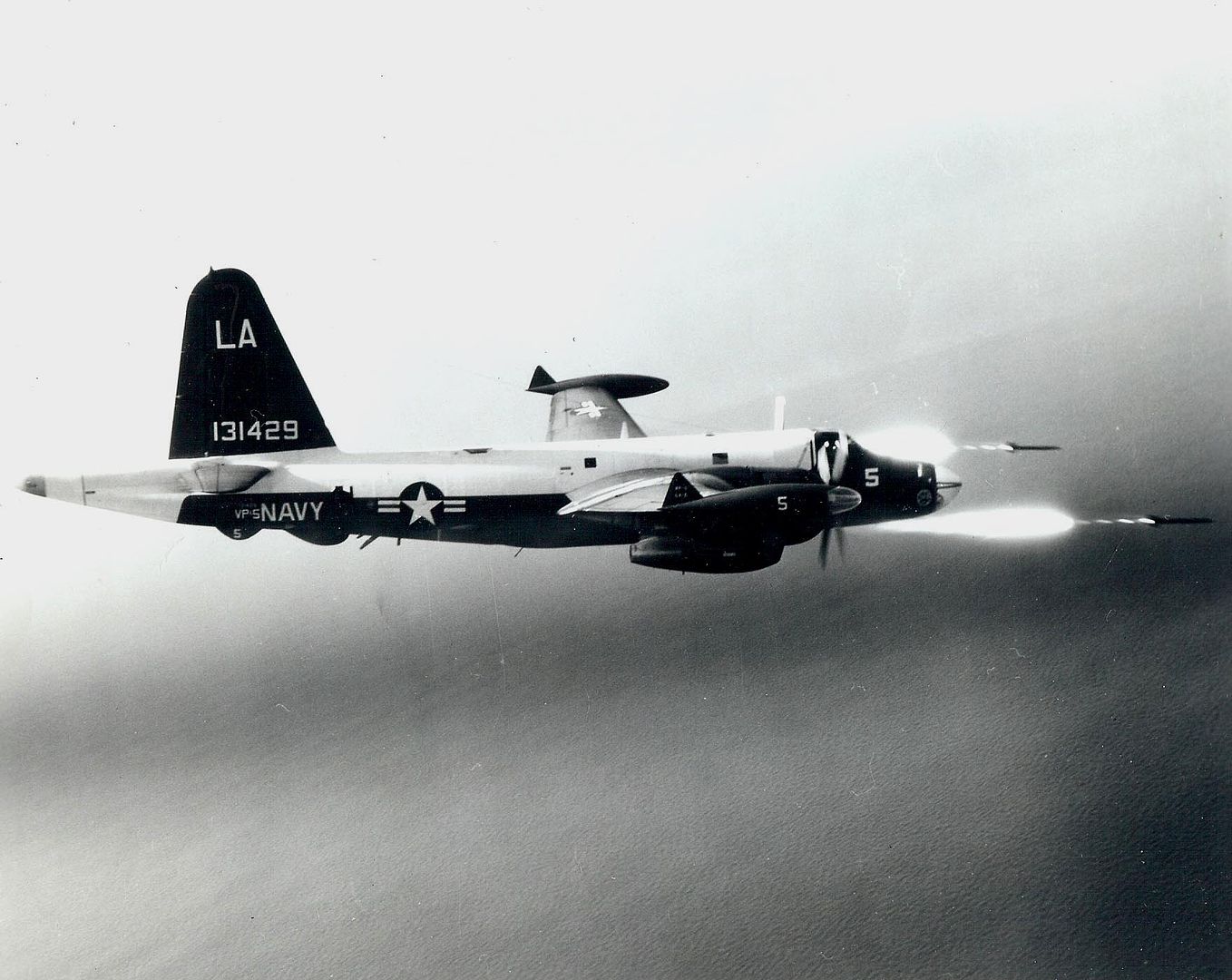
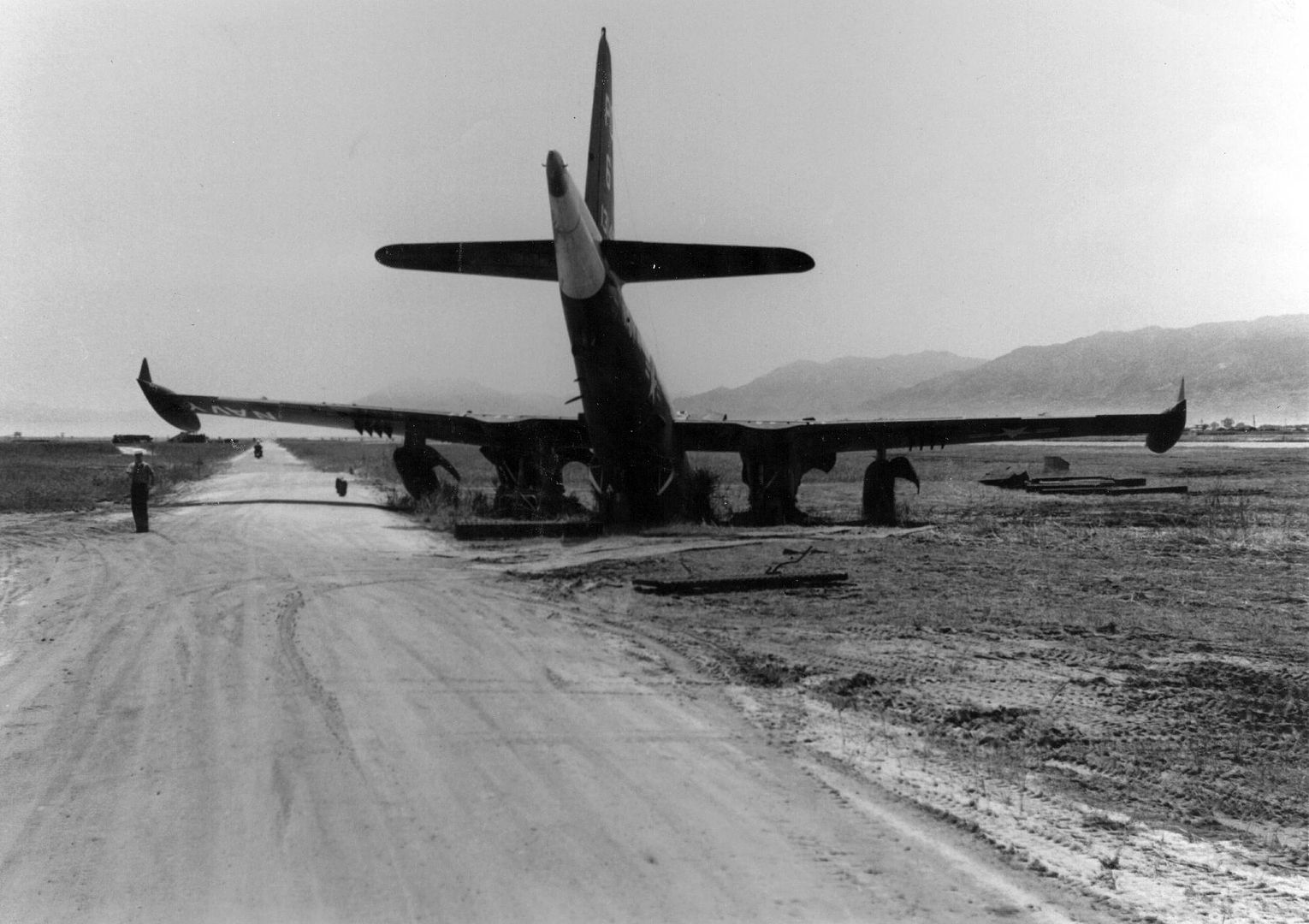
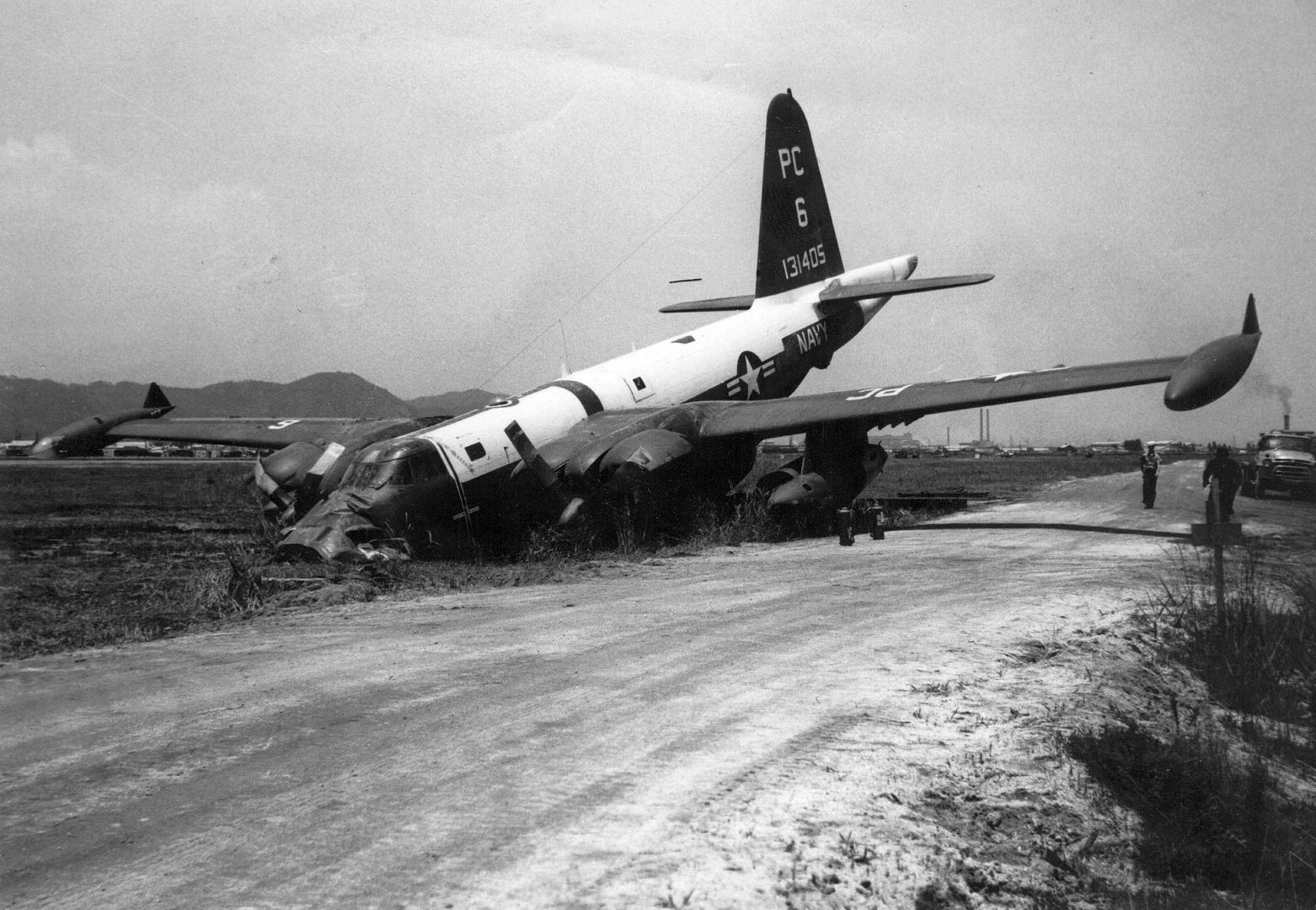
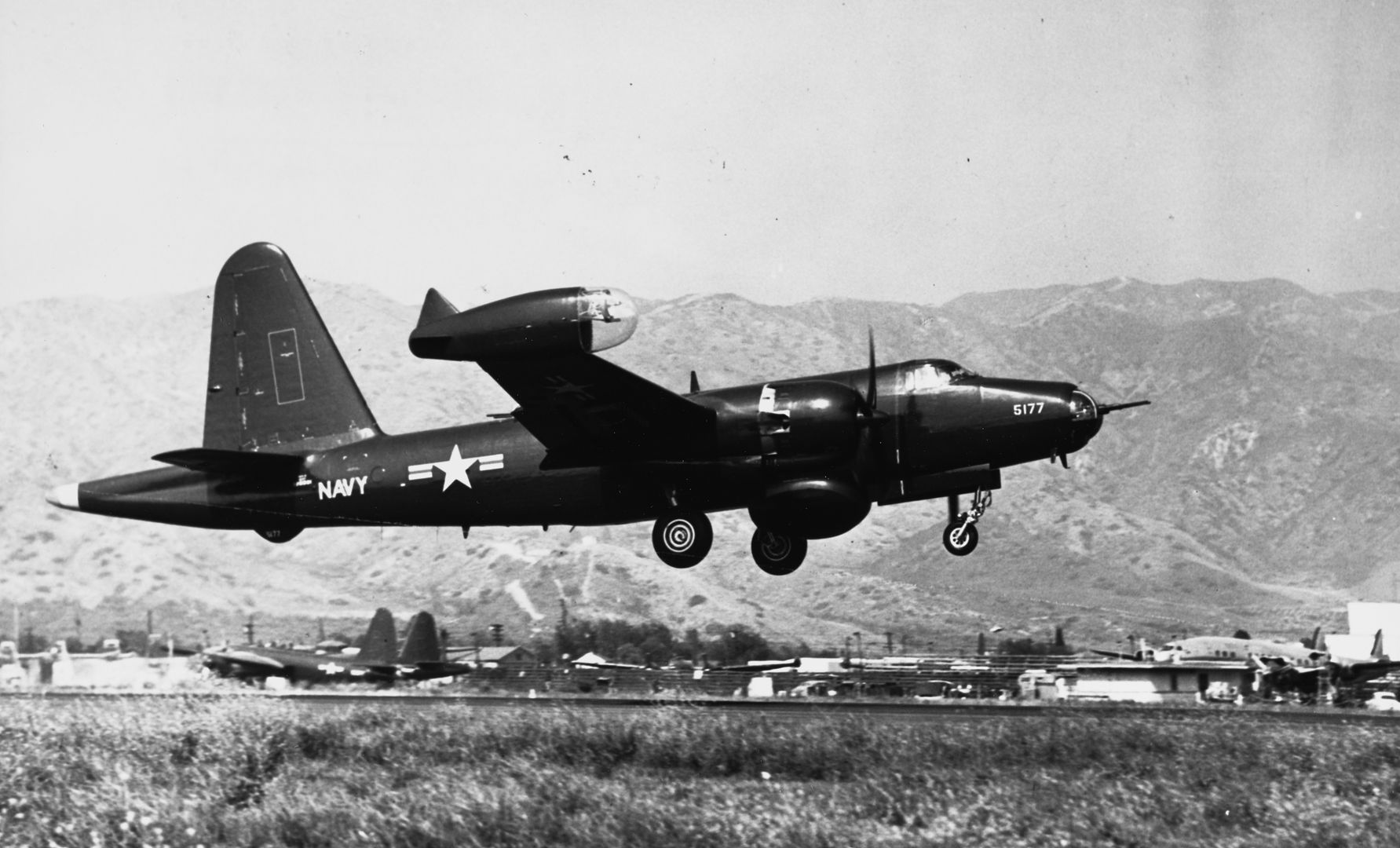
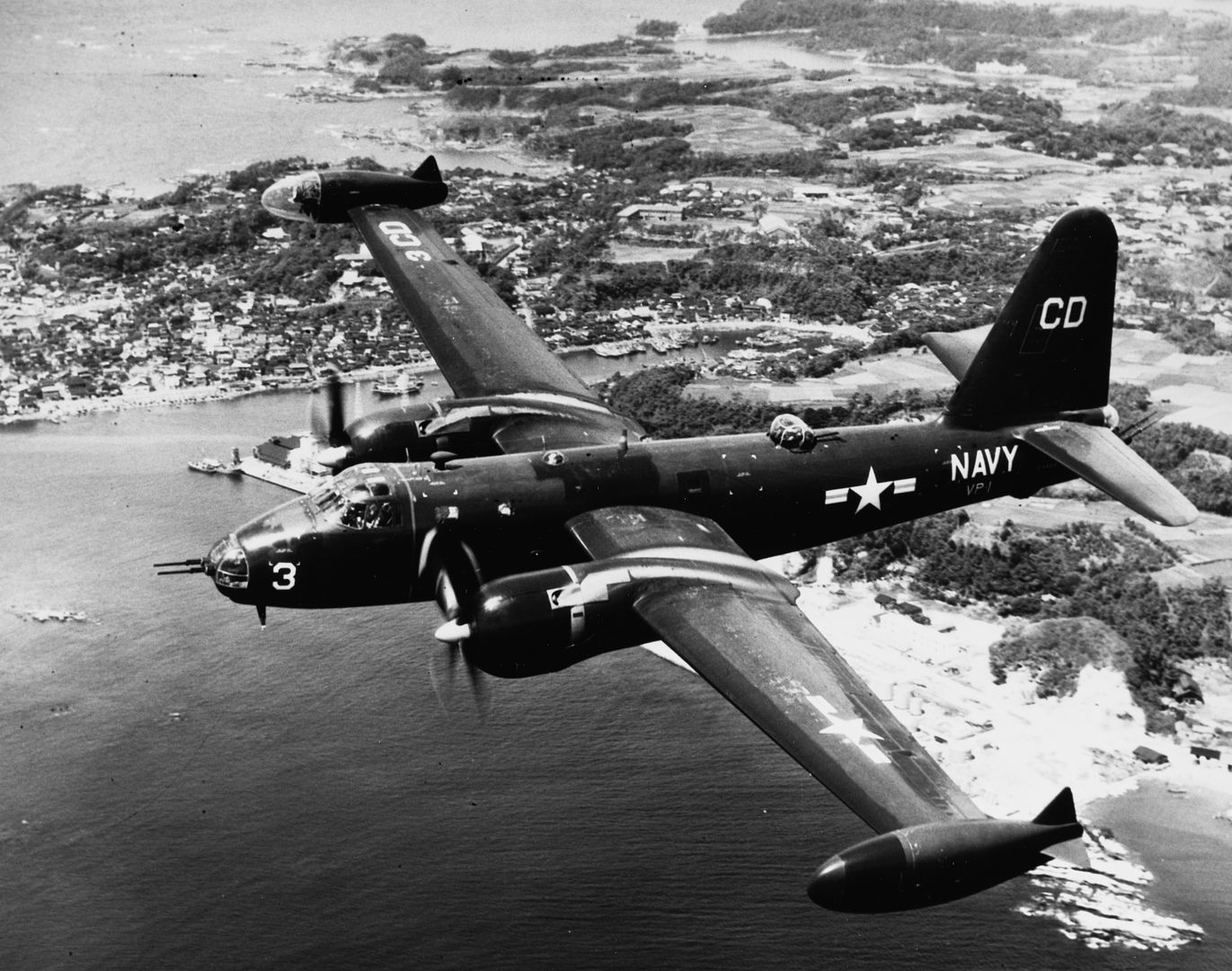
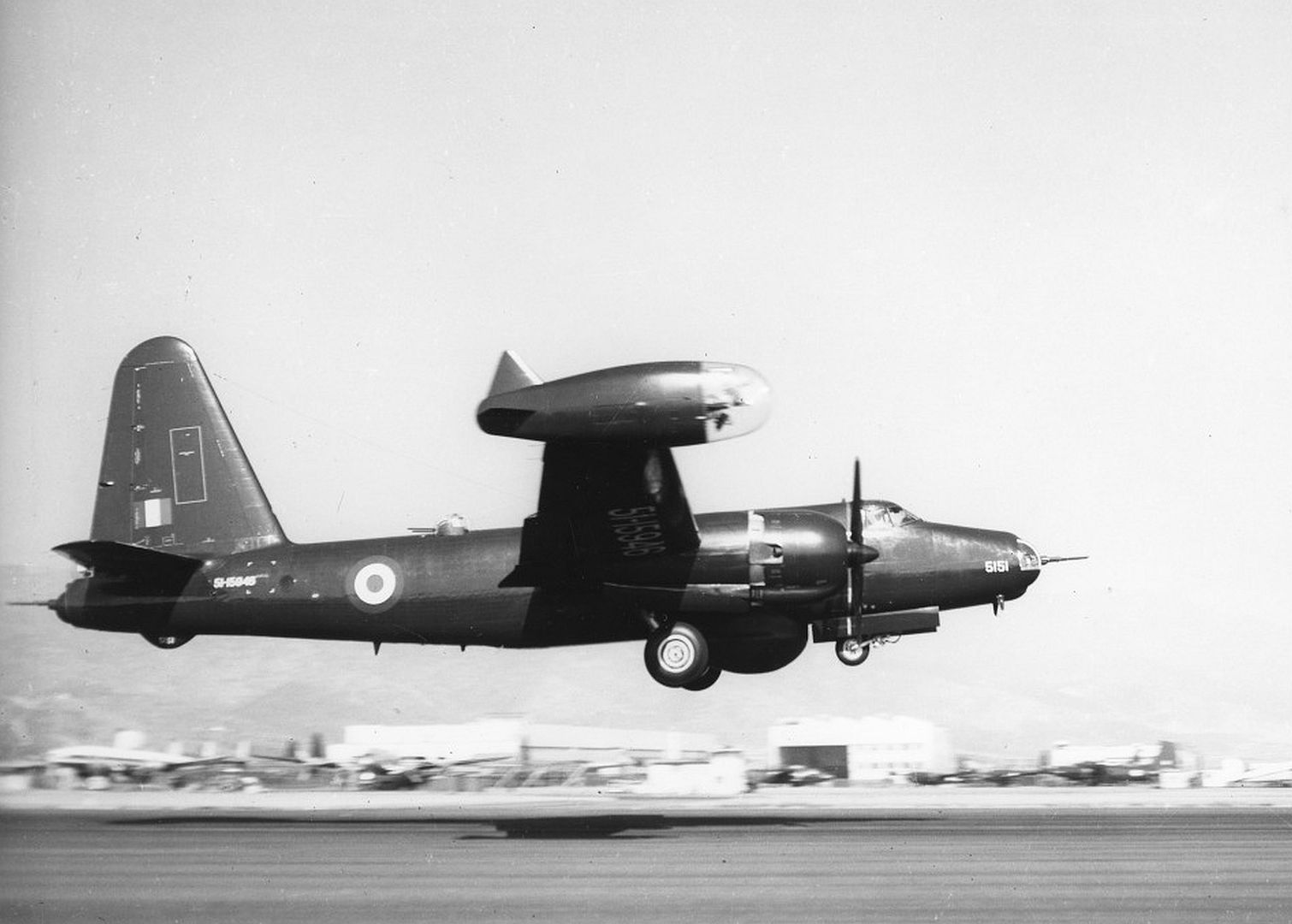
* The British RAF Coastal Command received 52 P2V-5s in 1952. After four years in British service, these aircraft were passed on by various paths to the Netherlands, Portugal, Argentina, Brazil, and Australia. In the 1960s, the P2V-5 and P2V-5F were redesignated "P-2E". The subvariants were redesignated as follows:
P2V-5FD: DP-2E
P2V-5FE: EP-2E
P2V-5FS: SP-2E -
 Main AdminP2V-6
Main AdminP2V-6
The "P2V-6" was essentially a P2V-5 with different electronic equipment fits for mine-laying and antisubmarine warfare, and generally resembled the P2V-5. The P2V-6 reverted to the Emerson nose turret with twin 20-millimeter cannon, and featured an AN/APS-70 (some sources state AN/APS-33) radar, not the AN/APS-20 radar, in a smaller radome.
83 P2V-6s were built in 1952 and 1953. There were a number of subvariants, including: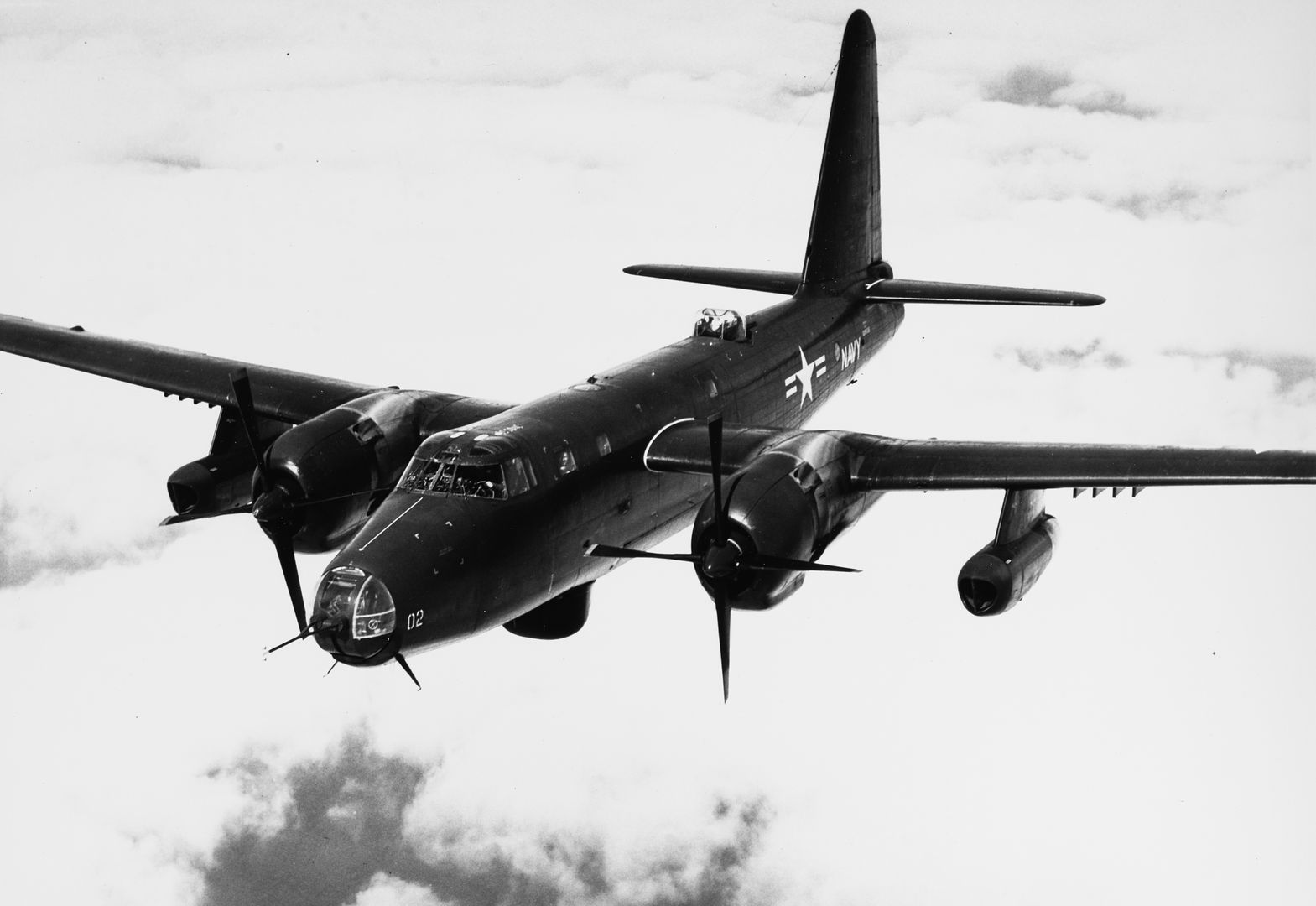
The "P2V-6B", later redesignated "P2V-6M", was fitted to carry the Fairchild Petrel AUM-N-2 antisubmarine missile, which was a winged booster carrying a homing torpedo.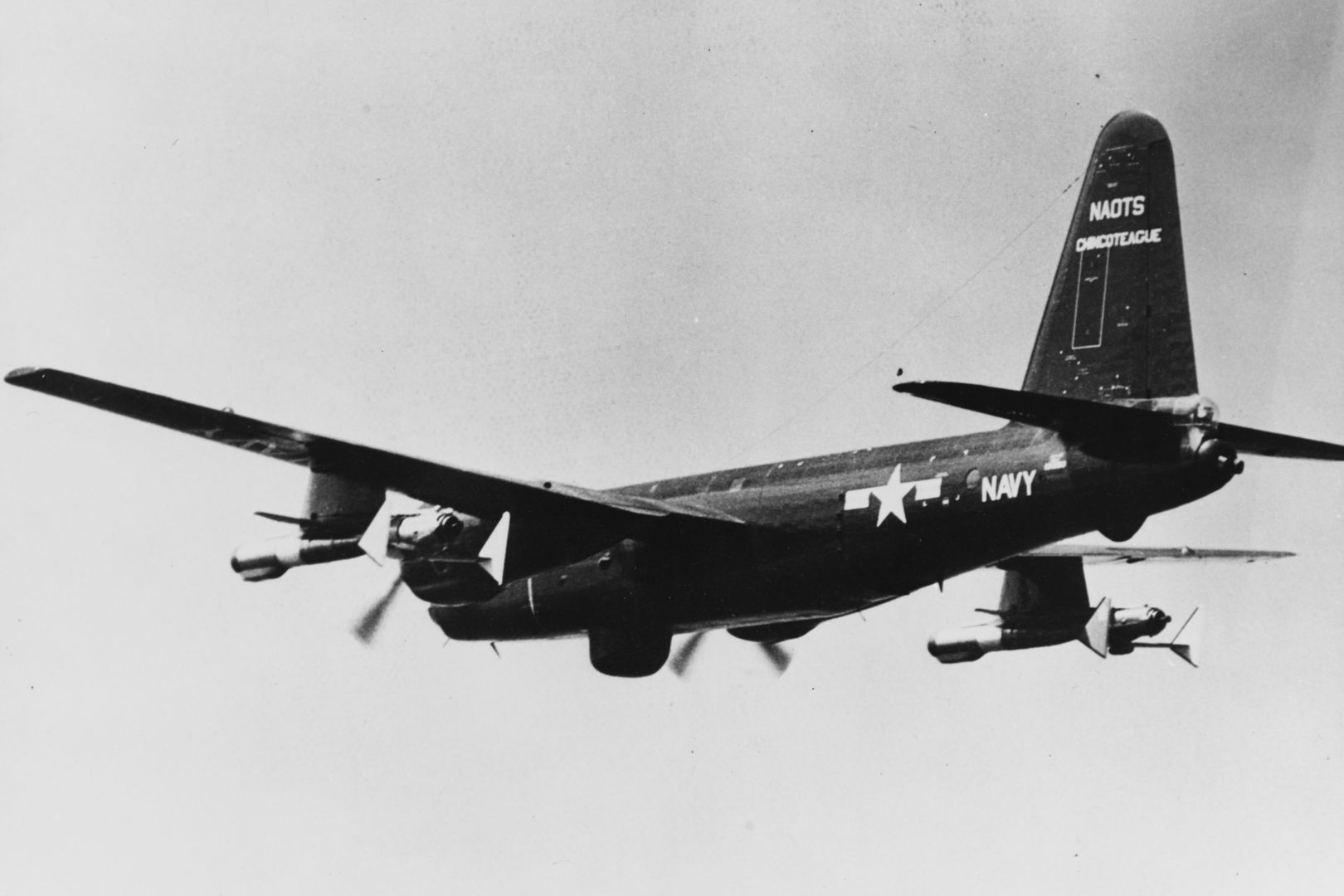
The "P2V-6F" was a field retrofit with twin J34-WE-34 jet engines, like the P2V-5F.
The "P2V-6T" was a trainer, with all armament and wingtip tanks deleted.
In the 1960s, the surviving P2V-6s and P2V-6Fs were redesignated the "P-2G". The P2V-6M was redesignated the "MP-2F", and the P2V-6T was redesignated the "TP-2F".
P2V-7
The P2V-7 had a distinctive enlarged canopy with a better all-round view, and a longer fuselage. Wingtip tanks were streamlined and made smaller. Early production had nose, tail, and dorsal turrets, but these were quickly eliminated in favor of a clear nose, MAD boom, and observer dome respectively. The P2V-7 reverted to the AN/APS-20 radar used on the P2V-5, with its large radome, though the radome was mounted farther forward.
LOCKHEED P2V-7 NEPTUNE:
_____________________ _________________ ___________________________
spec metric english
_____________________ _________________ ___________________________
wingspan 31.7 meters 103 feet 10 inches
wing area 92.90 sq_meters 1,000 sq_feet
length 28.0 meters 91 feet 8 inches
height 3.6 meters 28 feet 1 inch
empty weight 19,505 kilograms 43,010 pounds
max loaded weight 36,300 kilograms 80,000 pounds
maximum speed 586 KPH 364 MPH / 316 KT
cruise speed 300 KPH 188 MPH / 165 KT
service ceiling 6,830 meters 22,400 feet
range 7,000 kilometers 4,350 miles / 3,735 NMI
_____________________ _________________ ___________________________
There were two subvariants of the P2V-7, including the "P2V-7S" with improved ASW gear; and the "P2V-7LP" with aluminum skis similar to those used on the P2V-2N, JATO bottle attachment points, and other fits for use in Antarctica. Four P2V-7LPs were built.
Some 359 P2V-7s were built in all, beginning in 1954, including 48 built by Kawasaki in Japan for the country's Self-Defense Forces. P2V-7s were also operated by Canada, Australia, France, the Netherlands. The type was redesignated "P-2H" in the 1960s. The P2V-7S became the "SP-2H", and the P2V-7LP became the "LP-2J".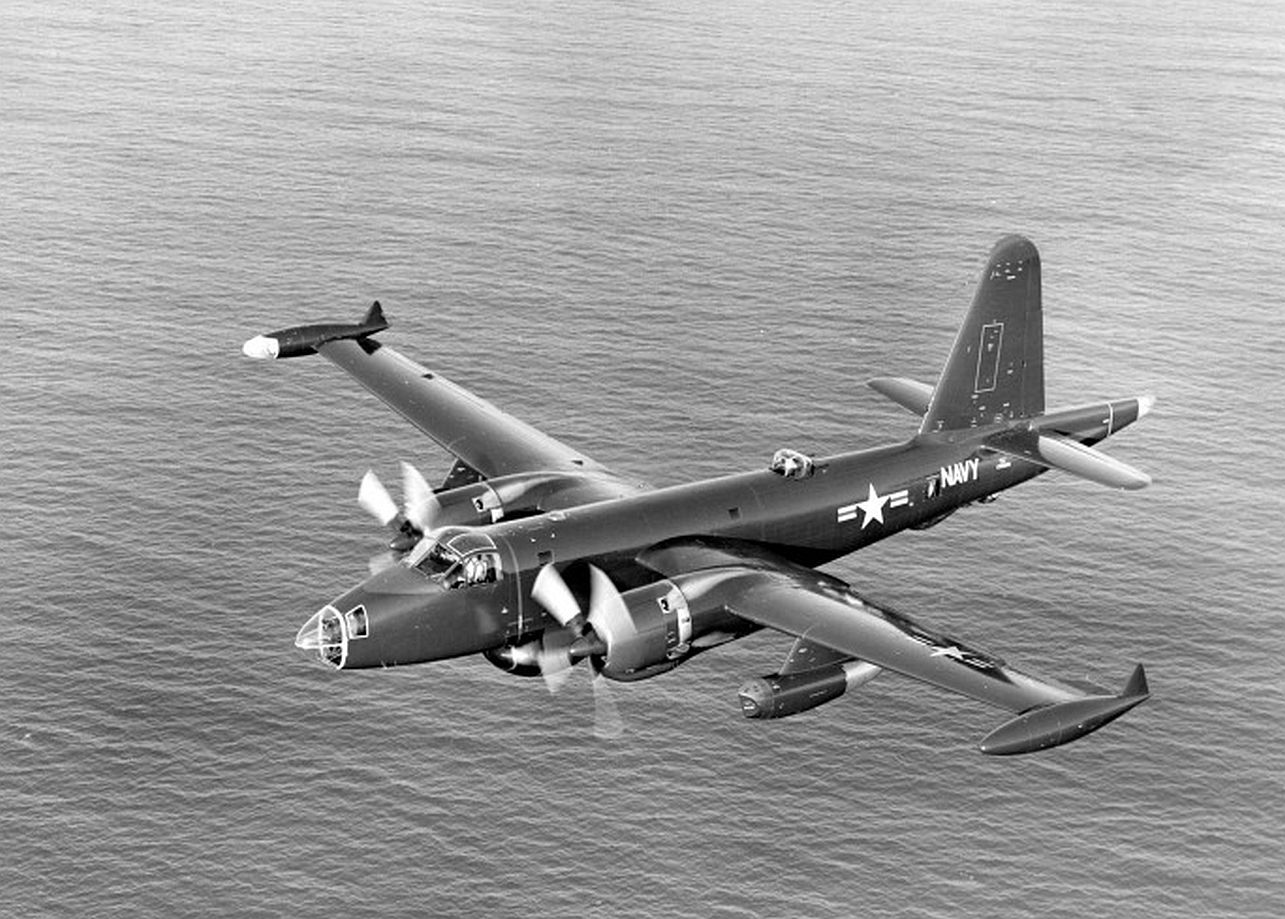
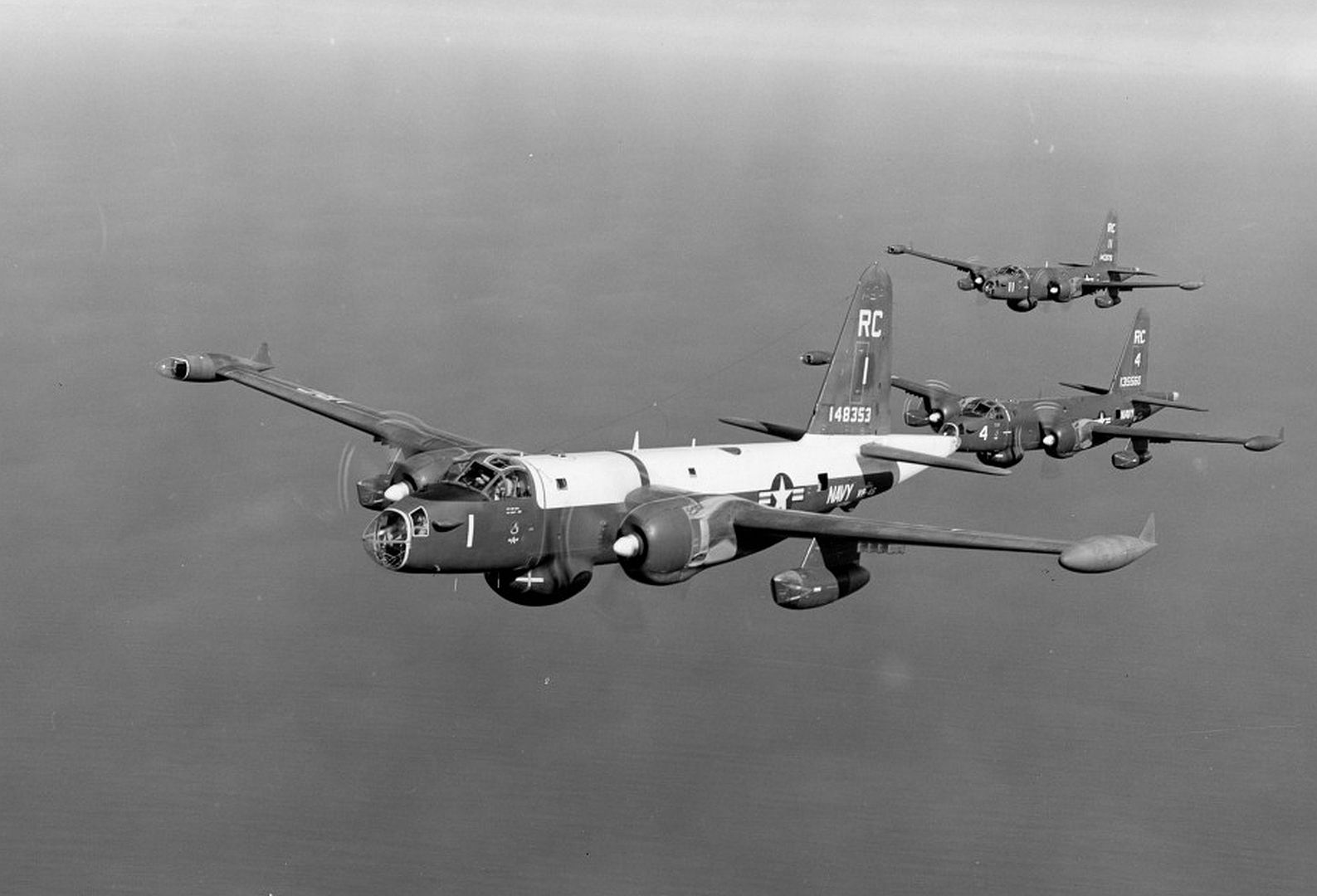
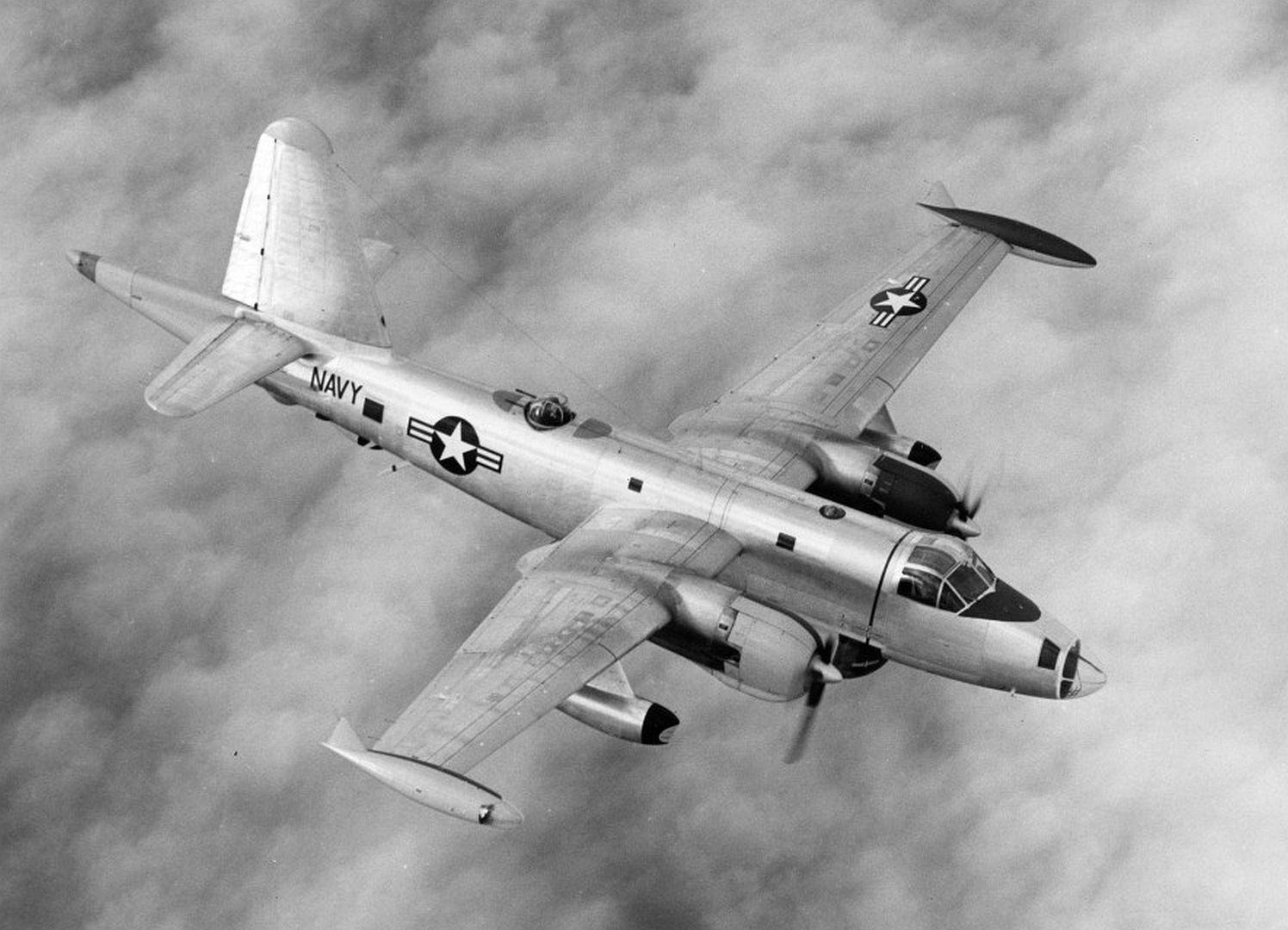



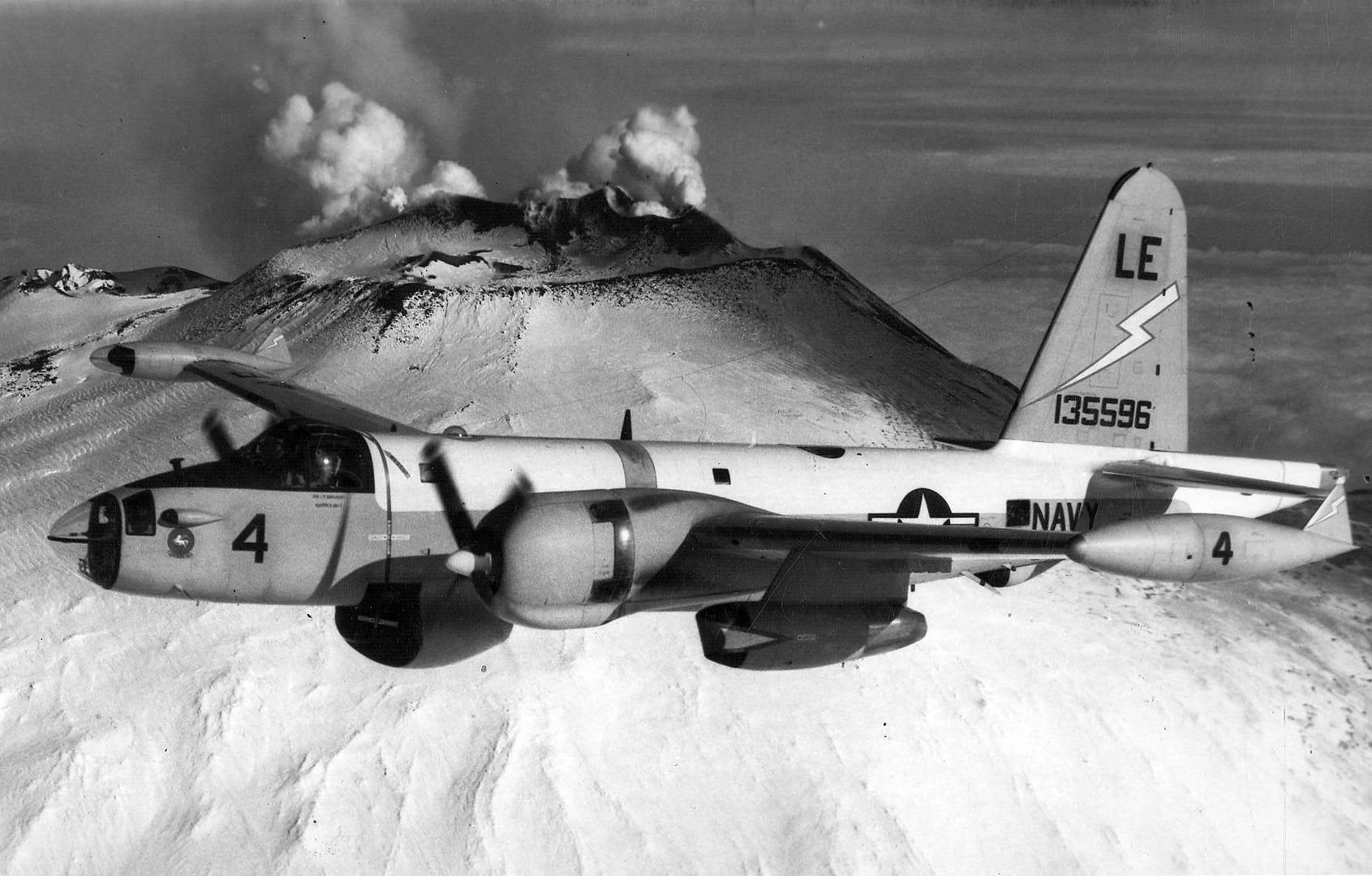
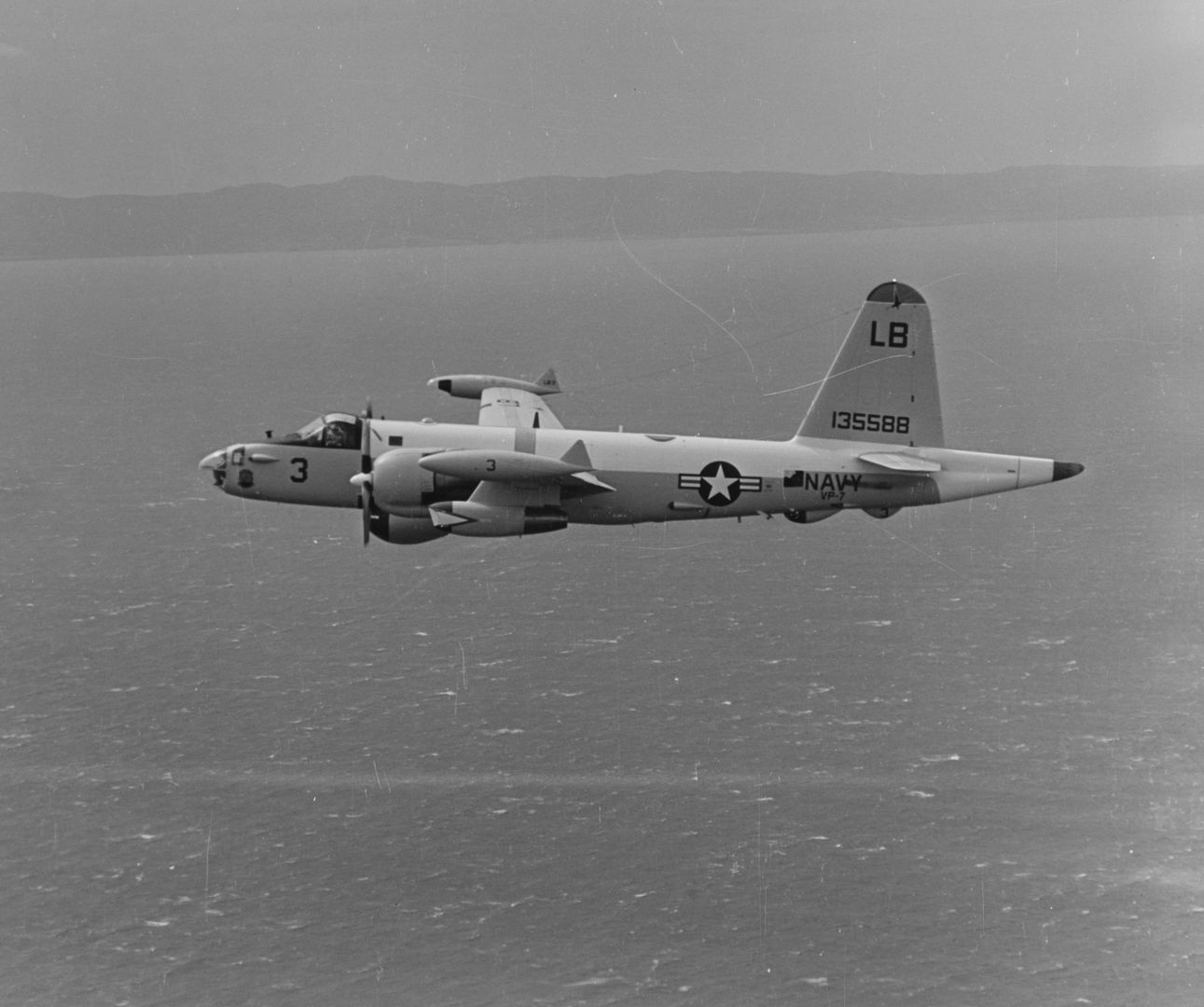
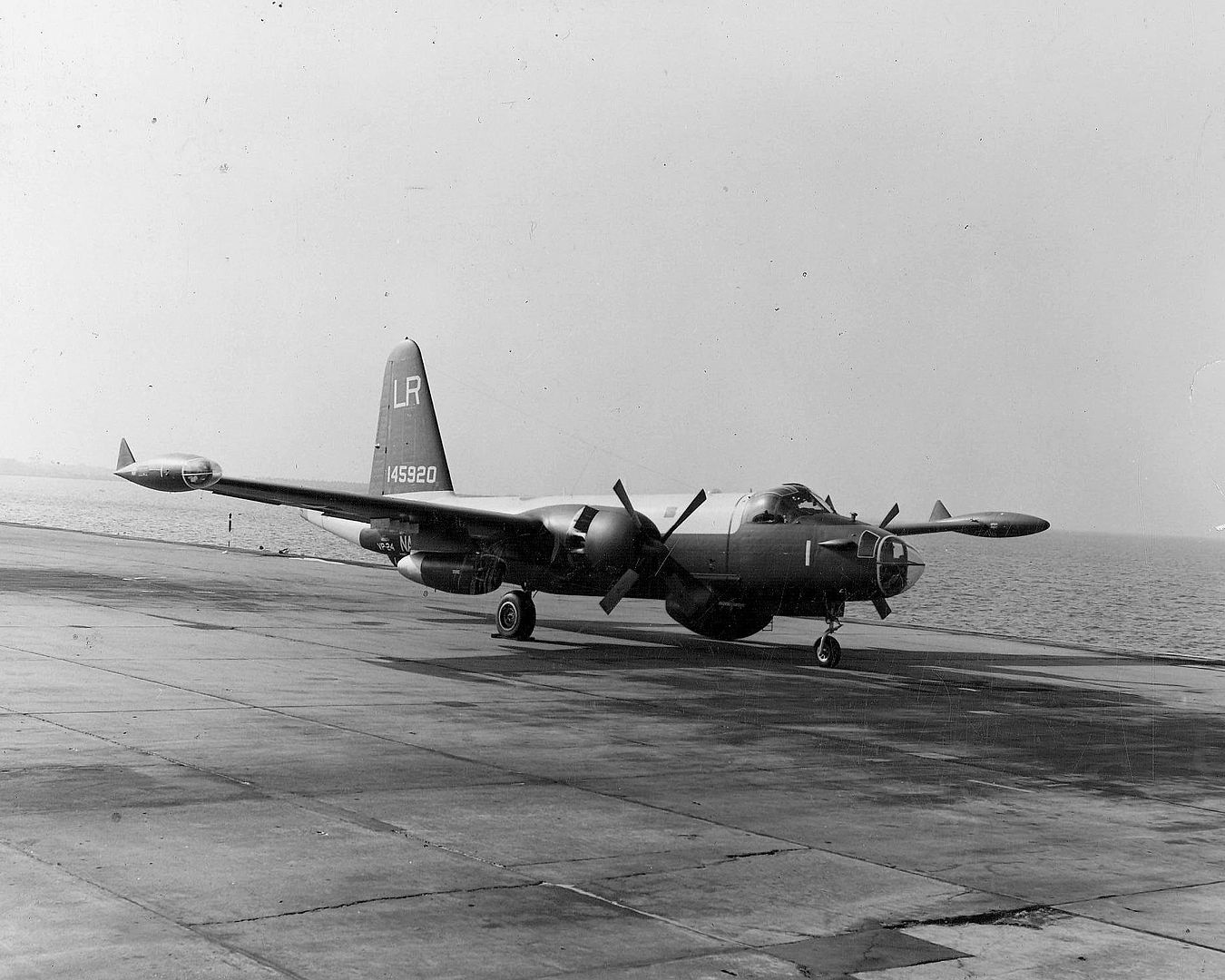
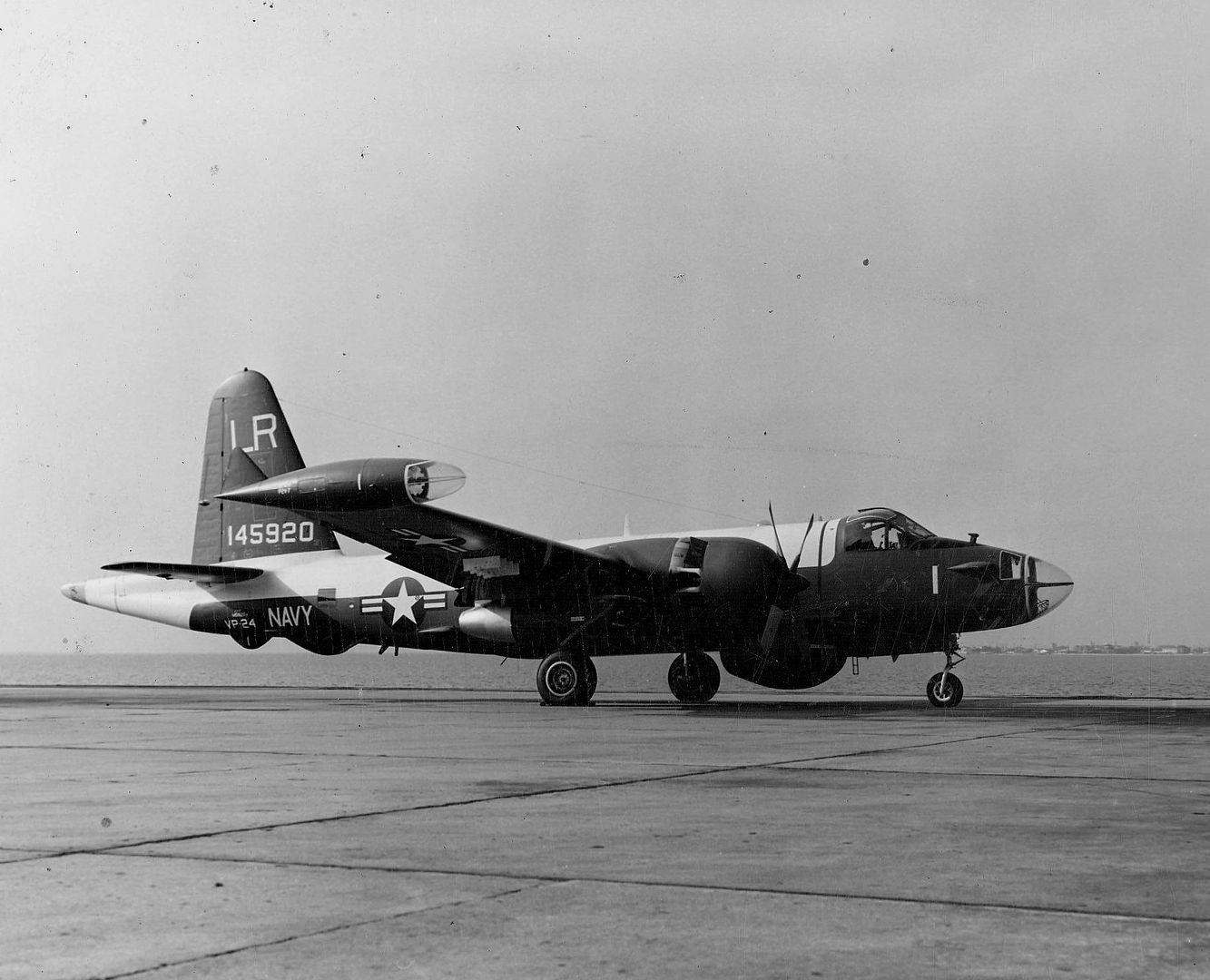
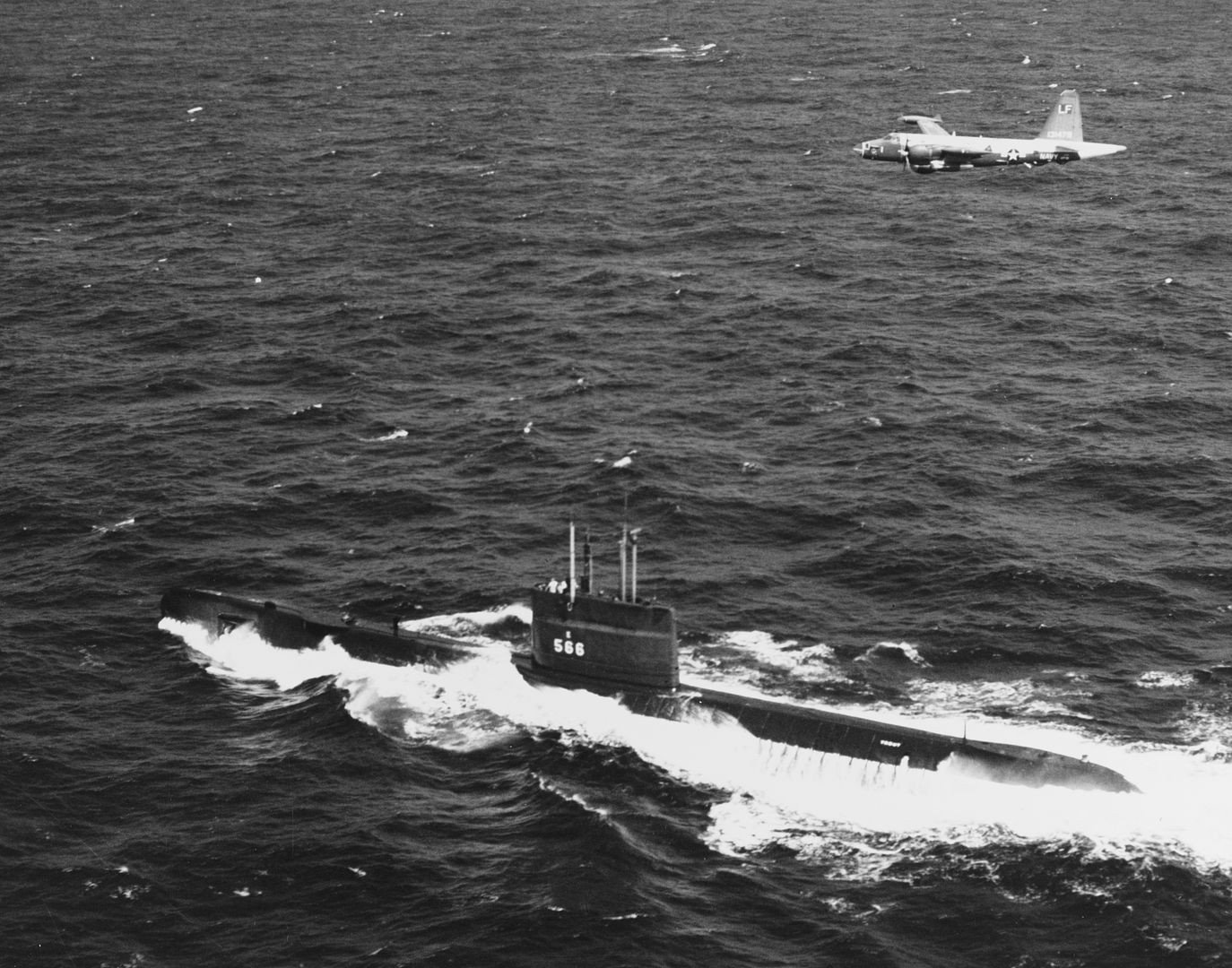




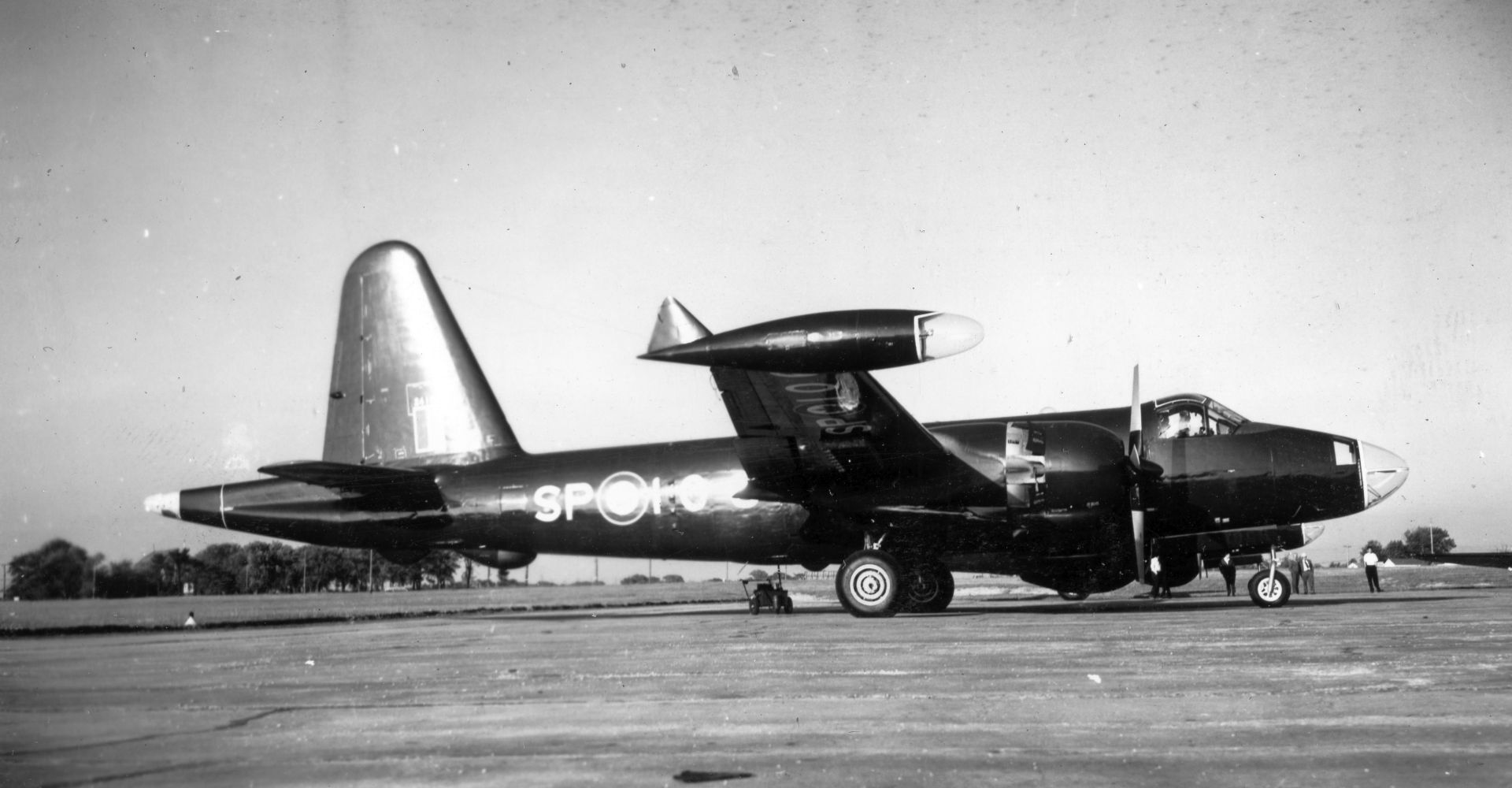
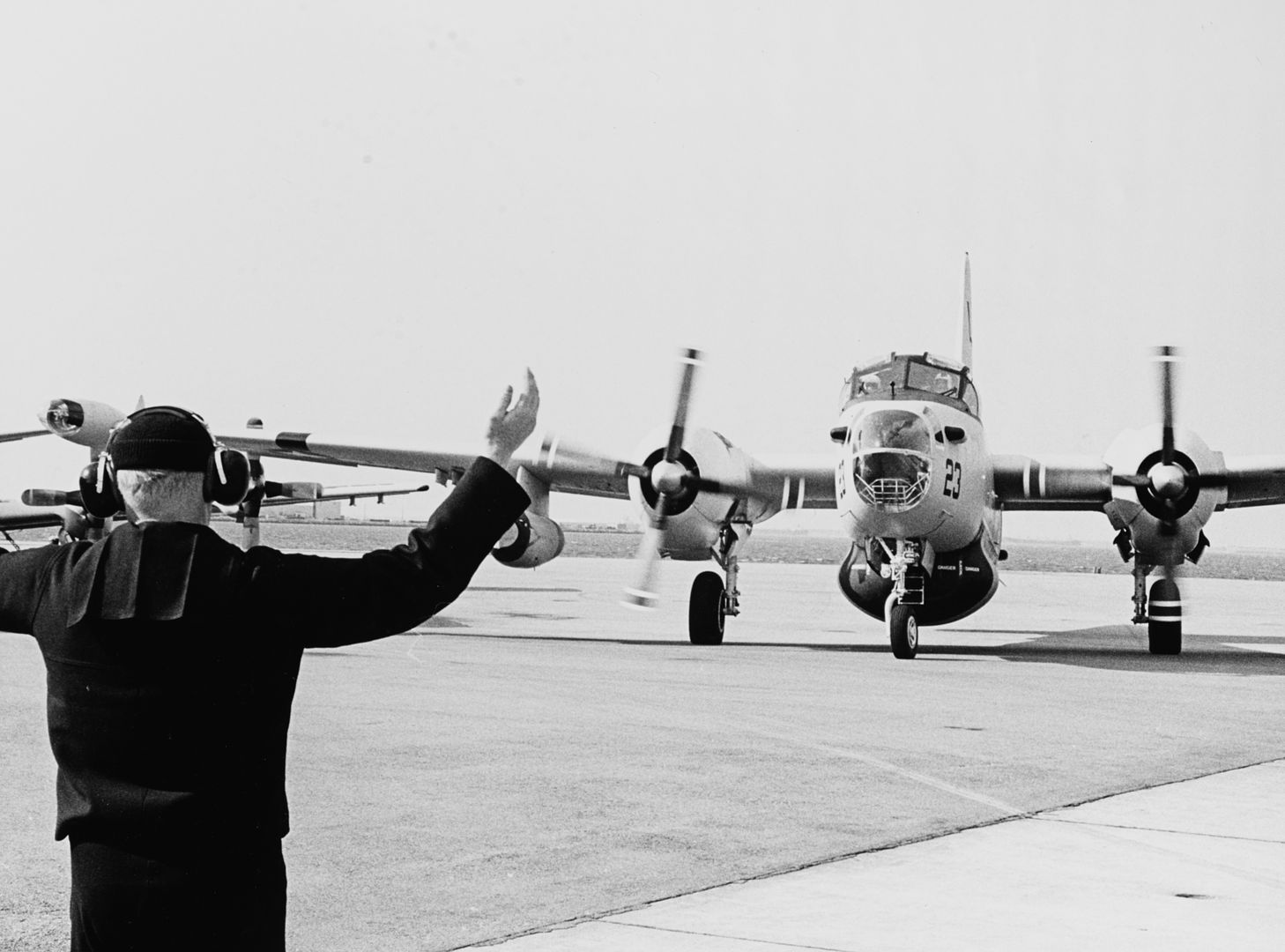

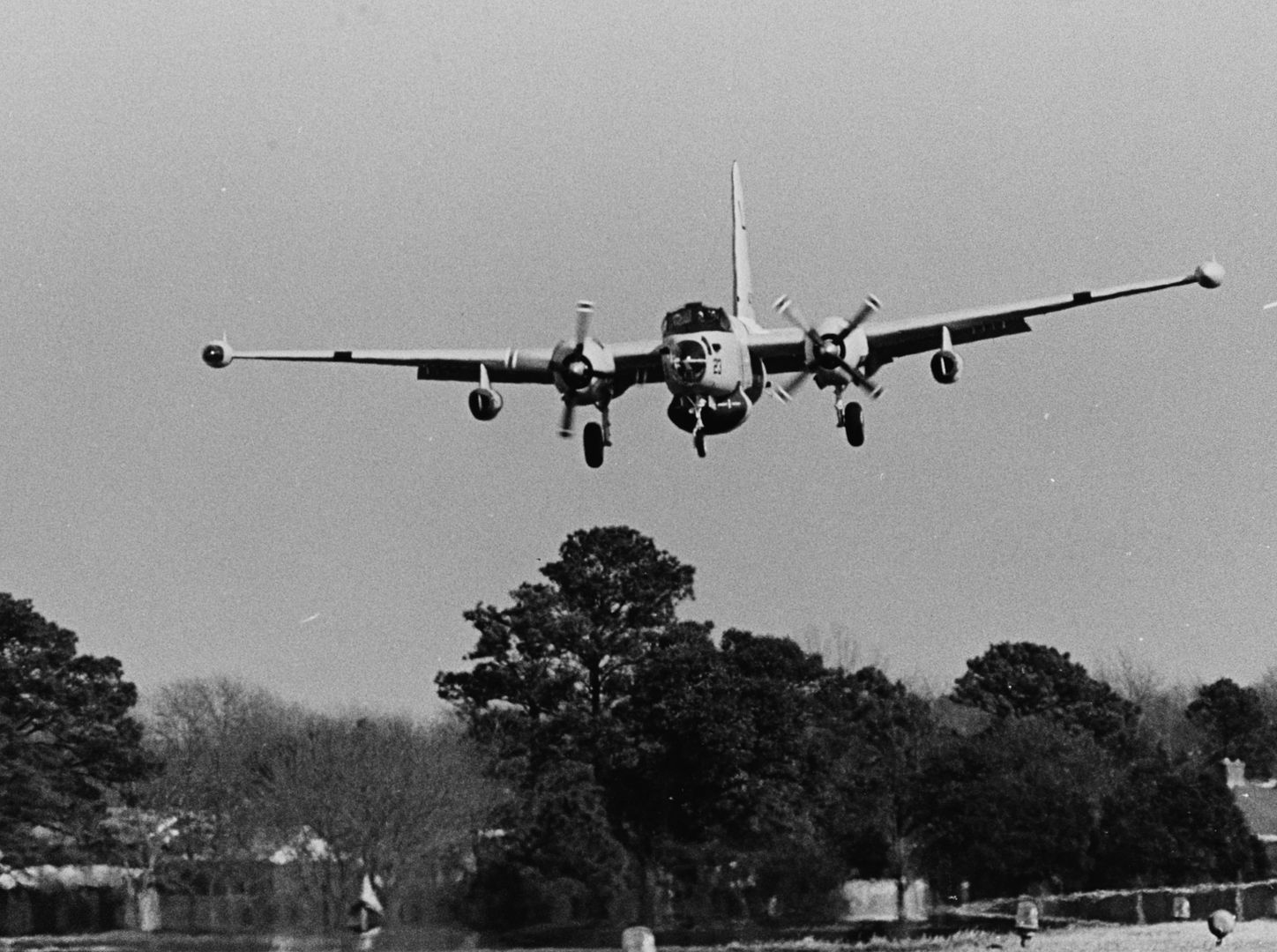
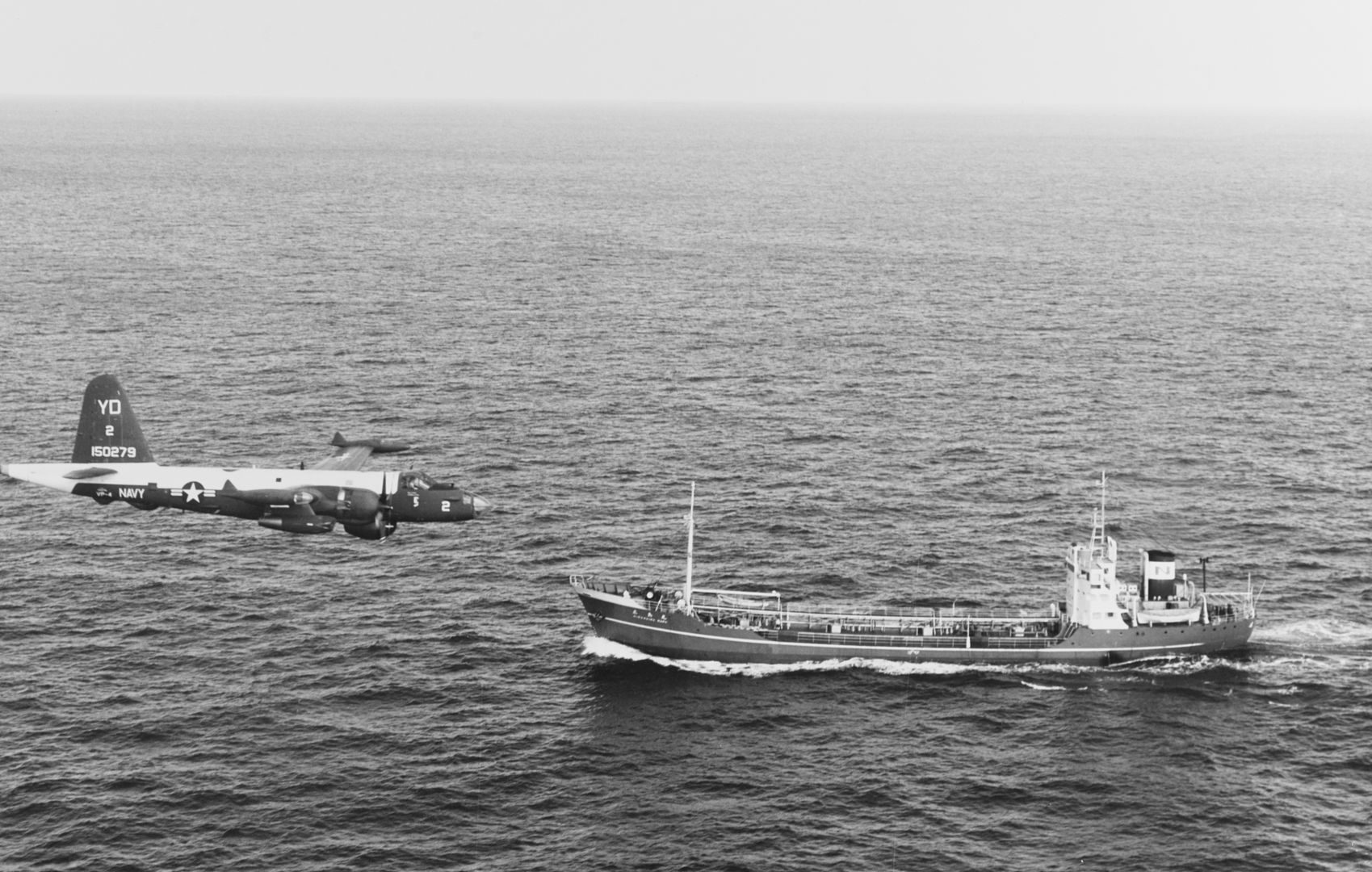

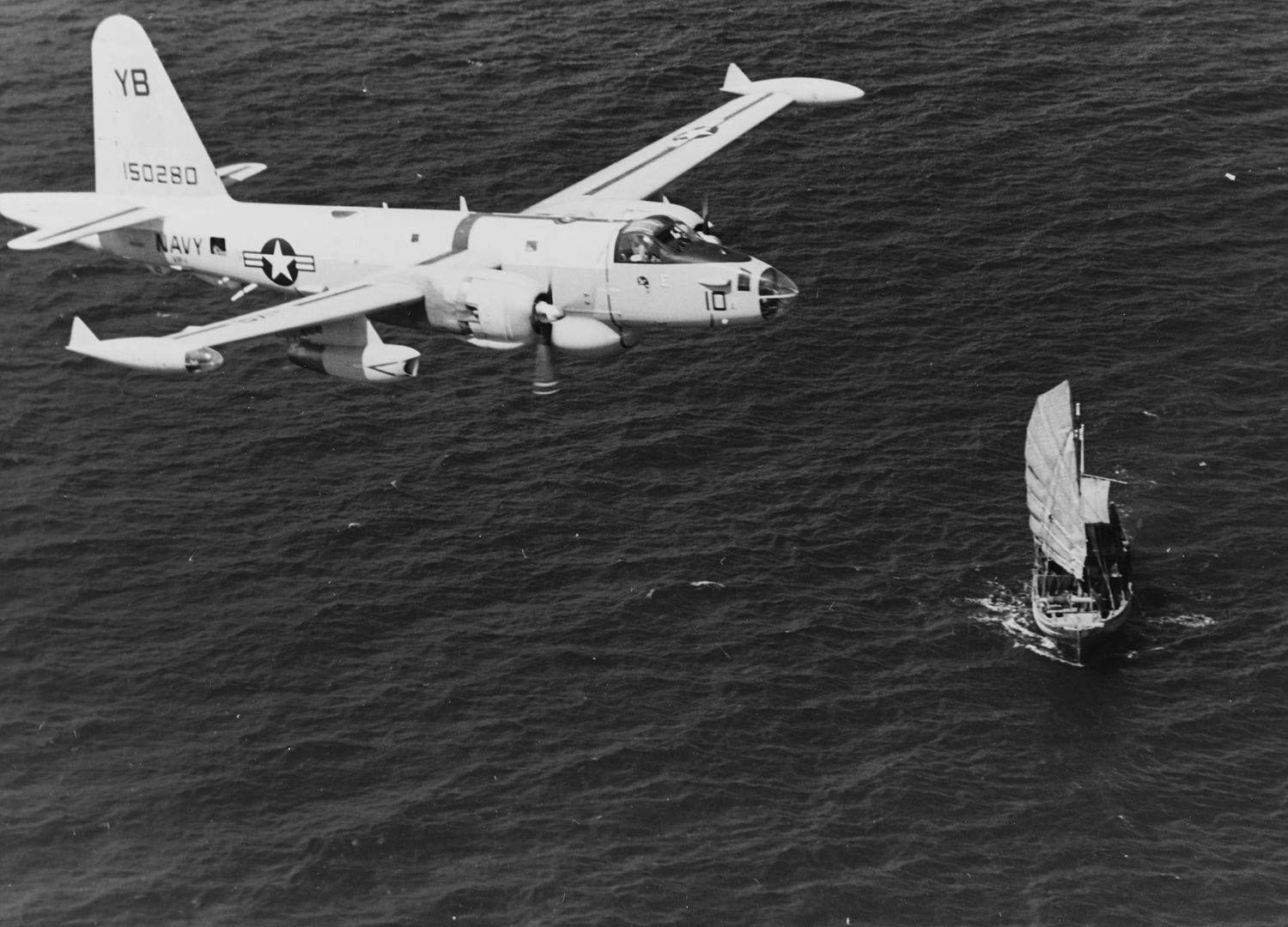
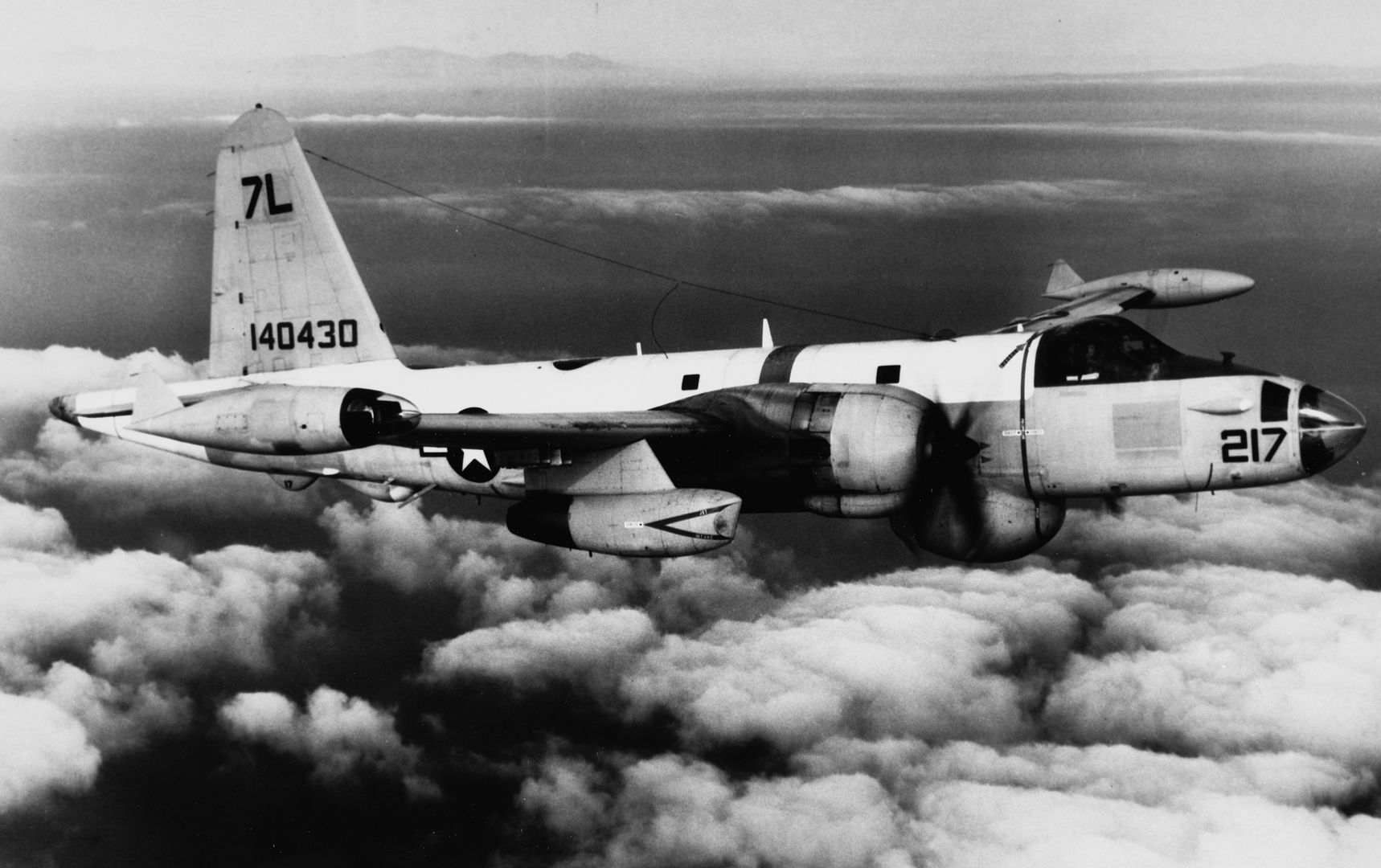
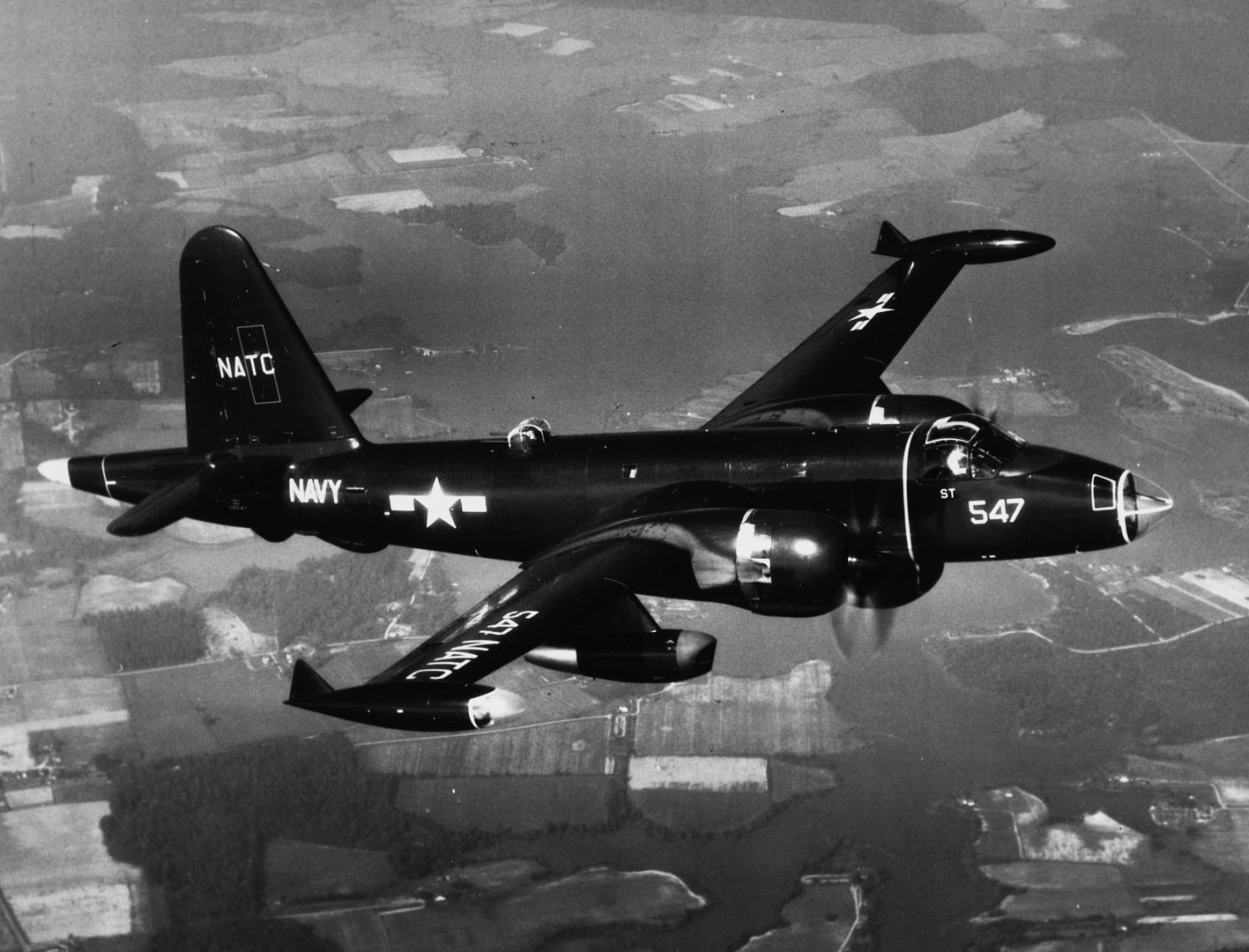
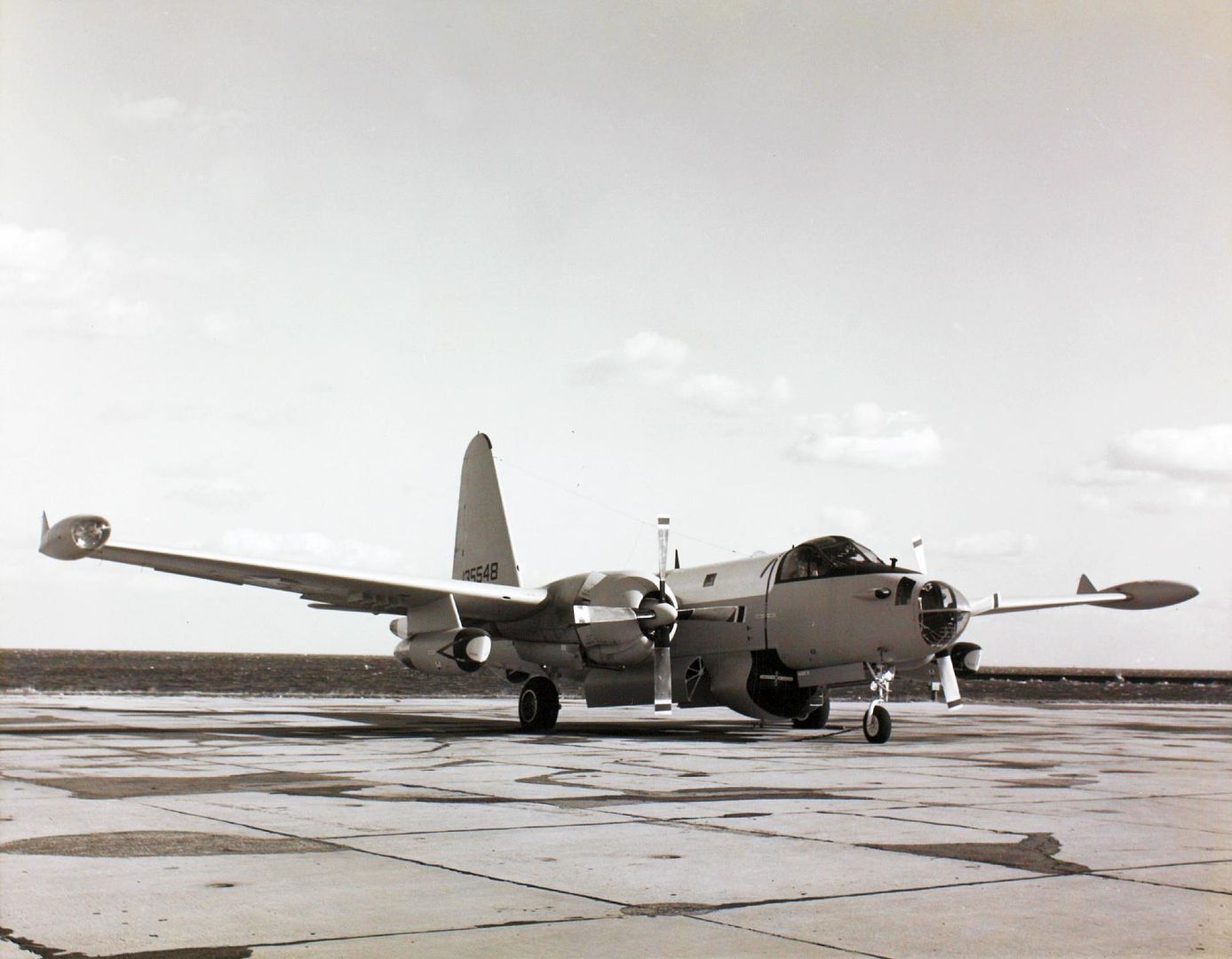
SPECIAL MISSION NEPTUNES
There were a number of interesting modifications of the Neptune during its career, and some of these modifications were operated by other US services.
The US Central Intelligence Agency (CIA) took note of the way the US Navy made use of the Neptune for ferret missions, and in 1954 the agency bought five new P2V-7s and obtained two used ones from the Navy. They were configured with cameras and electronics intelligence gear, with the range of options being too great for any one Neptune to carry. As a result, the CIA Neptunes were reconfigurable to a degree, and no two of them flew in a completely common configuration. One of the most prominent items was a side-looking airborne radar (SLAR) antenna attached on the fuselage from behind the wing to in front of the tailplane. Other gear configured them for leaflet drops, dropping agents or cargo, or for "snagging" payloads with a "Skyhook" system. The "Secret Seven" were painted dark sea blue.
The CIA could leverage off US Navy maintenance facilities and personnel that kept US Navy Neptunes in the air, but the Navy drew the line at having the CIA fly their Neptunes in Navy markings. As a result, they were flown in US Air Force markings and designated "RB-69A", though Lockheed referred to them with the designation "P2V-7U"; some sources still erroneously claim these were USAF aircraft. The US Navy also operated three P-2Hs (P2V-7s) that were modified to a similar configuration.
The RB-69As were flown under Project CHERRY, which later became Project WILD CHERRY. The CIA operated two of the RB-69As from Wiesbaden in West Germany to keep an eye on Eastern Europe. These two RB-69As were retired in 1963. Their fate is unknown, but they may have been converted back to standard P2V-7 / SP-2H configuration and returned to US Navy service. The other five were operated from Taiwan to perform night intrusions into China; they drove Chinese defense officials wild. All five machines were lost:
The first went down in an accident while en route to South Korea on 25 March 1960.
The second was shot down by Chinese anti-aircraft fire on 6 November 1961.
The third simply disappeared without a trace over China on 8 January 1962.
The fourth and fifth were both shot down by Chinese fighters, on 14 June 1963 and 11 June 1964 respectively.
* A number of P-2Es (P2V-5Fs) were modified for US Army SIGINT missions, with appropriate electronics equipment, and redesignated "AP-2E". The Army operated them out of Cam Rahn Bay from the summer of 1967 to the spring of 1972. The AP-2E still very much looked like a Navy Neptune, but other Vietnam modifications were more drastic.
The Navy "OP-2E" was a highly modified P-2E (P2V-5F) with antisubmarine avionics, the AN/APS-20 radome, and MAD tailboom removed, giving it an awkward bobtailed appearance. There were twelve such modifications, with the aircraft refitted with a chin radome and a camera pack under the tail; armed with 7.62-millimeter six-barreled Gatling "minigun" pods under the wings, along with provisions for mounting a machine gun in a window on either side of the rear fuselage; and painted jungle green. The OP-2Es operated out of Thailand between the fall of 1967 and the summer of 1968, where they dropped sensors on the Ho Chi Minh Trail as part of the IGLOO WHITE operation to block North Vietnamese movement over the Ho Chi Minh Trail into South Vietnam.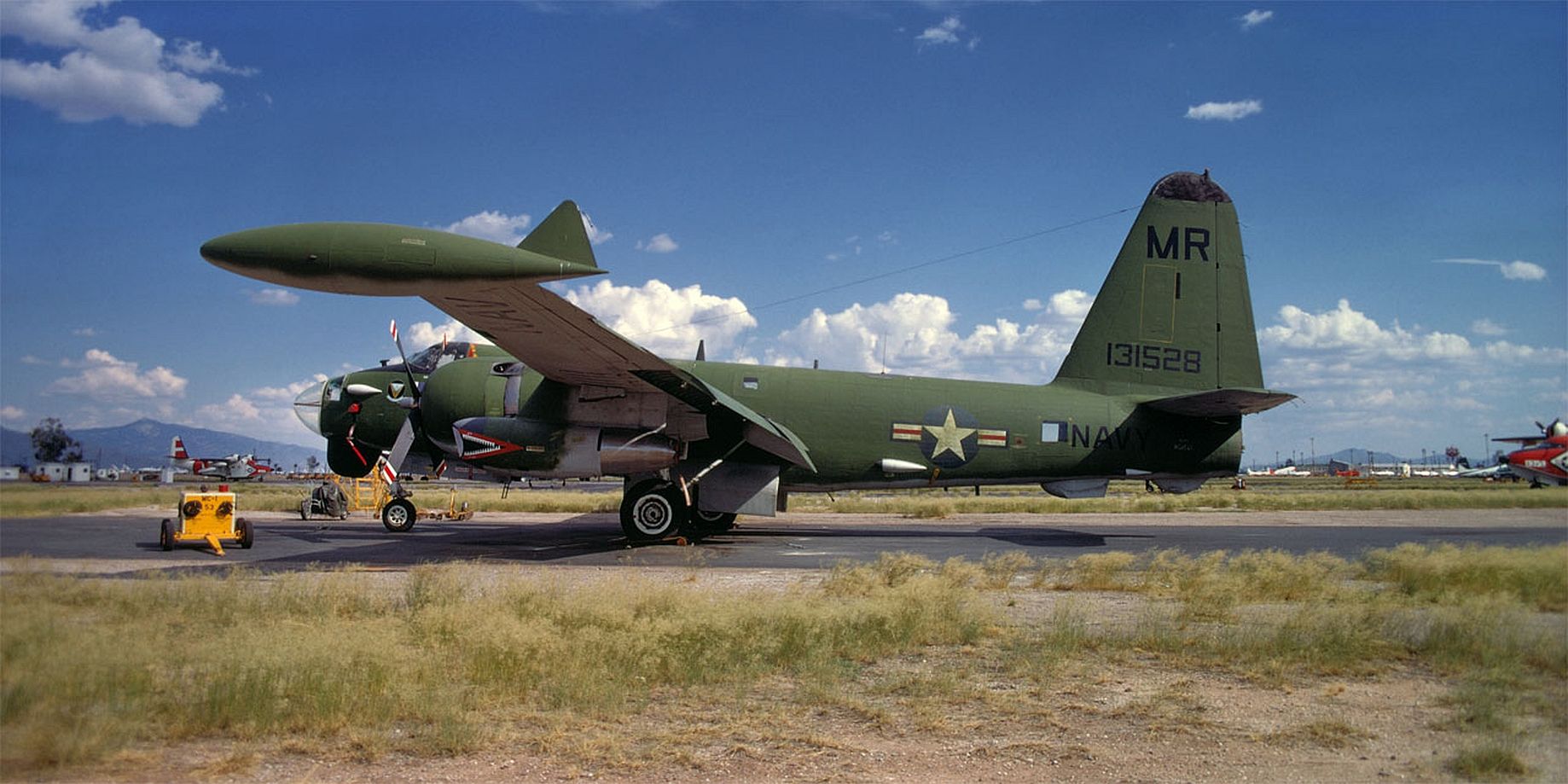
The CIA came up with a modification of a P-2H (P2V-7) for night reconnaissance under Project MUDDY HILL, with the result being known as the "NP-2H". It featured a low-light-level television (LLLTV); a forward-looking infrared (FLIR) camera; a terrain-following radar; a panoramic camera in the tail; reticulated foam in the wing tanks; and seat armor for the pilot and copilot -- the last being salvaged from crashed helicopters by the aircrew. Only one was made, the exercise being for combat test and evaluation of advanced sensor technologies, though the NP-2H performed dozens of missions.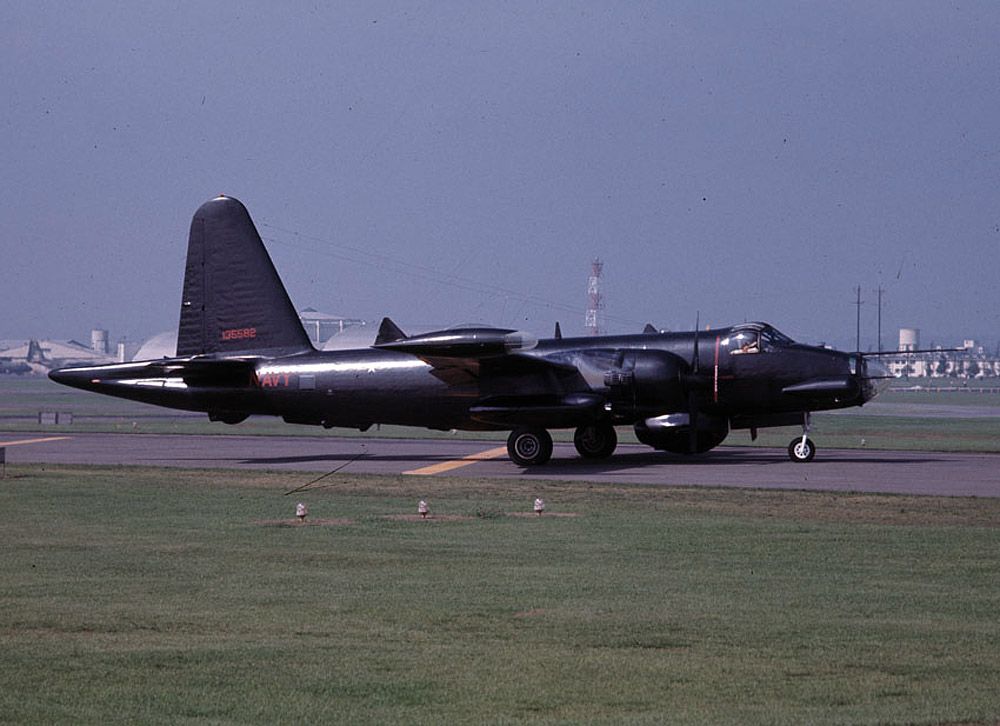
The "AP-2H" leveraged off the lessons learned in the MUDDY HILL effort to modify a number of P-2Hs as night and all-weather gunships. The AP-2H had the search radar radome and MAD stinger removed; the stinger was replaced with an Aero 11/A turret with twin 20-millimeter cannon. The AP-2H was fitted with a chin blister containing an LLLTV camera, along with a pod for AN/APQ-20 radar mounted just behind the nosewheel doors. The type apparently carried other sensors, as well as ground-attack armament such as 40-millimeter automatic grenade launchers and miniguns. These aircraft were operated by the Navy over Southeast Asia from the fall of 1967 to the late spring of 1969, dropping IGLOO WHITE sensors, plus bombs and napalm.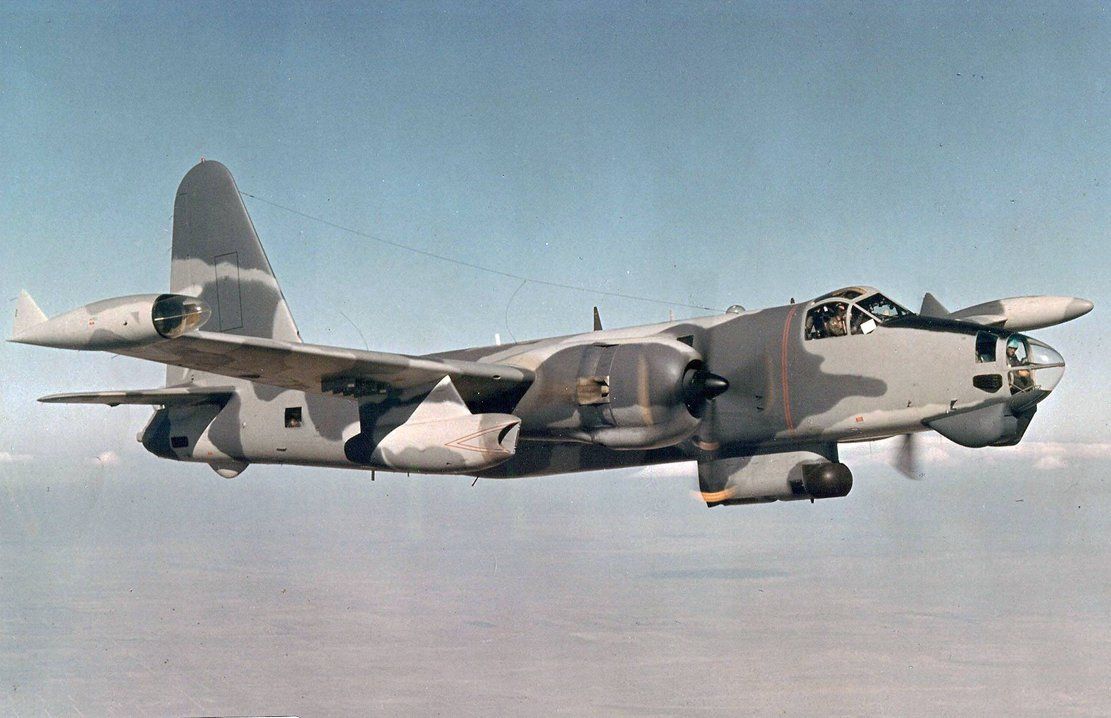
P-2J
The very last version of the Neptune was the Kawasaki-built "P-2J" (originally P2V-KAI, where "KAI" means "kaizen / modification"). Work on the P-2J was begun in 1961. The first P-2J performed its initial flight in 1966, and the last of 89 P-2Js was delivered in 1979.
The Wright radial engines were replaced with Japanese-built copies of General Electric T64-IHI-10 turboprop engines, derived from the T64 turboshaft used on the Sikorsky S53 helicopter, with each engine providing 2,125 kW (2,850 HP) and driving three-bladed propellers. The booster turbojets were IHI-J3 engines, an indigenous Japanese design, also used on the Fuji T-1 trainer. Each turbojet provided 13.7 kN (1,400 kgp / 3,085 lbf) thrust. With the new powerplants, the P-2J had a top speed of almost 650 KPH (403 MPH).
The P-2J accommodated 12 crewmen. The tail surfaces were enlarged and their profile modified. AN/APS-80 search radar was fitted, resulting in a still smaller radome. Updated avionics systems were installed; these systems were much more compact than those used in other versions of the Neptune, permitting greater fuel capacity. The turboprop nacelles were too tight to accommodate the big main landing gear tire used on other Neptunes, and so the P-2J's main gear was fitted with two smaller wheels each. The turboprops offered lower weight and higher reliability, at some expense in fuel consumption.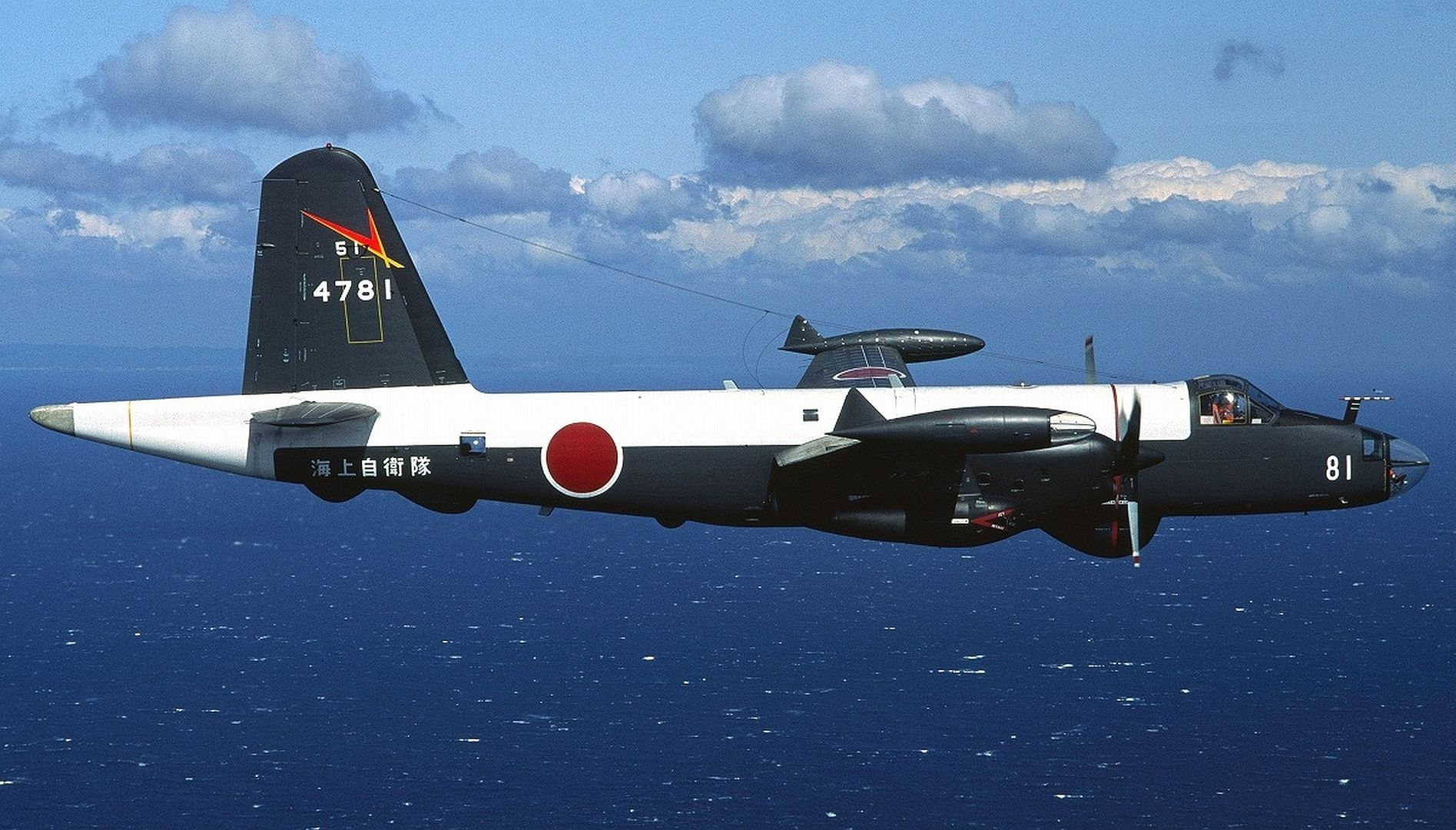
Although the Japanese are capable of producing first-class consumer and industrial goods, they have a somewhat baffling tradition of difficulties with large defense programs. The reasons appear to be more social and political than technical, with deeply-ingrained pacifism and "pork barrel" politics hobbling development efforts. The P2J was a classic example. The Neptune was basically obsolescent even when the program was initiated, and development and production of the P-2J were protracted. The use of local technology simply made for a more expensive aircraft. The P-2J was phased out in the 1980s in favor of the Orion, which eventually replaced the Neptune in the ocean-patrol air fleets of the West.
* A total of 1,188 Neptunes was built in all. The aircraft was highly successful and had a long and productive lifetime -- and had an extended lifetime, into the 21st century, as an "air tanker" or "fire bomber", fitted with tanks of fire retardant for fighting range and forest fires. The air tankers have generally exceeded airframe life and are now being retired. Lockheed considered various follow-ons to the Neptune during the 1950s, such as a turboprop-powered new-design "Super Neptune", but the decision was finally made to focus on modification of the Lockheed L-188 Electra four-turboprop airliner as an ocean-patrol aircraft, which emerged as the P-3 Orion.
The following table summarizes Neptune variants and production:
variant built mod notes
________________________________________________________________________
XP2V-1 2 Initial prototypes.
P2V-1 15 Initial production variant.
P2V-2 81 Nose cannon, uprated engines.
P2V-2N - 2 Arctic Neptunes with ski landing gear.
P2V-3 83 P2V-2 with more powerful engines.
P2V-3B - 16 Special armament (nuke) P2V-3s.
P2V-3Z - 2 Armed personnel transports.
P2V-3C - 11 Carrier-launched P2V-3s.
P2V-3W - 30 AEW / ELINT P2V-3s.
P2V-4 52 More powerful engines, wingtip tanks.
P2V-5 424 Emerson nose turret, new cockpit, general changes.
P2V-5F - ? Updated P2V-5 with J34 booster jets.
P2V-5FD - ? Drone controller.
P2V-5FE - ? ELINT (?) P2V-5.
P2V-5FS - ? P2V-5F with Julie-Jezebel sonar system.
P2V-6 83 P2V-5 with different electronic fits.
P2V-6B/M - ? P2V-6 with Petrel missile carriage.
P2V-6F - ? Updated P2V-6 with J34 booster jets.
P2V-6T - ? Trainer.
P2V-7 359 Update with new cockpit, J34s standard, etc.
P2V-7S - ? Improved ASW gear.
P2V-7LP - 4 Skis for arctic operation.
_________________________________________________________________
RB-69A - 7 Cover designation for CIA spy P2V-7s.
AP-2E - ? US Army ELINT P2V-5Fs.
OP-2E - ? Navy "jungle fighter" P2V-5Fs.
NP-2H - 1 CIA "jungle fighter" demonstrator.
AP-2H - ? Navy "jungle fighter" P2V-7Fs.
_________________________________________________________________
P-2J 89 Japanese turbo-Neptunes.
_________________________________________________________________
1,188 TOTAL NEPTUNE PRODUCTION
Post a reply
- Go to Previous topic
- Go to Next topic
- Go to Welcome
- Go to Introduce Yourself
- Go to General Discussion
- Go to Screenshots, Images and Videos
- Go to Off topic
- Go to Works in Progress
- Go to Skinning Tips / Tutorials
- Go to Skin Requests
- Go to IJAAF Library
- Go to Luftwaffe Library
- Go to RAF Library
- Go to USAAF / USN Library
- Go to Misc Library
- Go to The Ops Room
- Go to Made in Germany
- Go to Campaigns and Missions
- Go to Works in Progress
- Go to Juri's Air-Raid Shelter
- Go to Campaigns and Missions
- Go to Works in Progress
- Go to Skinpacks
- Go to External Projects Discussion
- Go to Books & Resources
